Articles tagged java
Get Started with Jetty, Java, and OAuth

Jetty is a small, highly-scalable Java-based web server and servlet engine. It supports HTTP/2, WebSockets, and many other protocols. It powers websites and frameworks, both large and small, such as Google AppEngine. Because it is an Eclipse project, its open source project is called Eclipse Jetty. It is standards-compliant and open source, as well as commercially usable. It is the main alternative to Tomcat when hosting Java applications. Like Tomcat, you can use Jetty both...
Secure Secrets with Spring Cloud Config and Vault

In 2013, GitHub released a search feature that allows users to scan code in all public repositories. A day after the release, however, they had to partially shut it down. It was speculated that the shutdown was because the feature allowed any user to search for all kinds of secrets stored in GitHub repositories. Later, in 2014, data on 50,000 Uber drivers was stolen. It seems someone got access to the company’s database using login...
Micro Frontends for Java Microservices
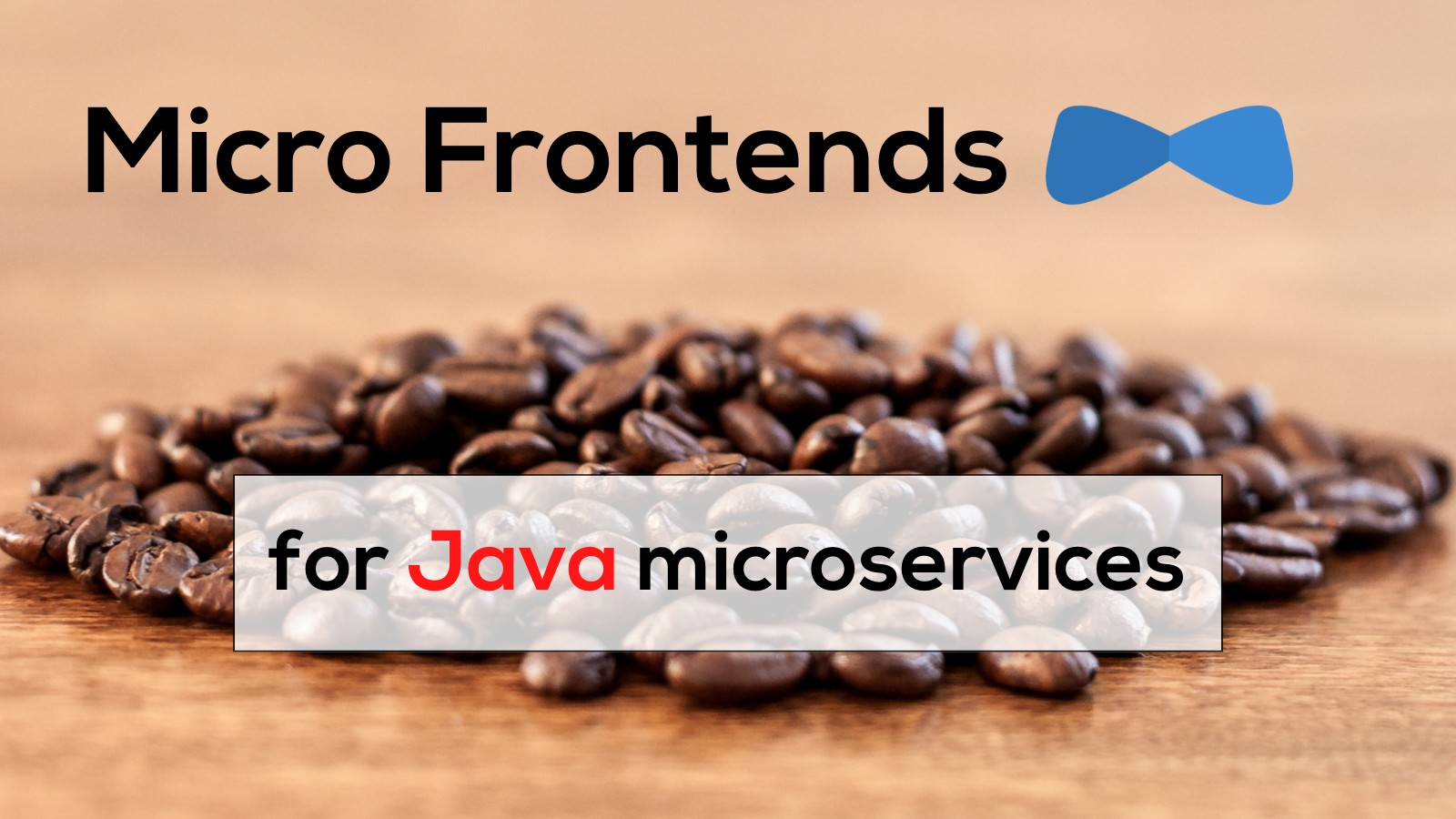
Microservices have been quite popular in the Java ecosystem ever since Spring Boot and Spring Cloud made them easy to build and deploy. Things have gotten even easier in recent years with the proliferation of new Java frameworks built specifically for microservices: MicroProfile, Micronaut, Quarkus, and Helidon. Not only do these frameworks provide an excellent developer experience, but they also tend to have built-in Docker support. They even work with GraalVM, so you can compile...
Communicate Between Microservices with Apache Kafka
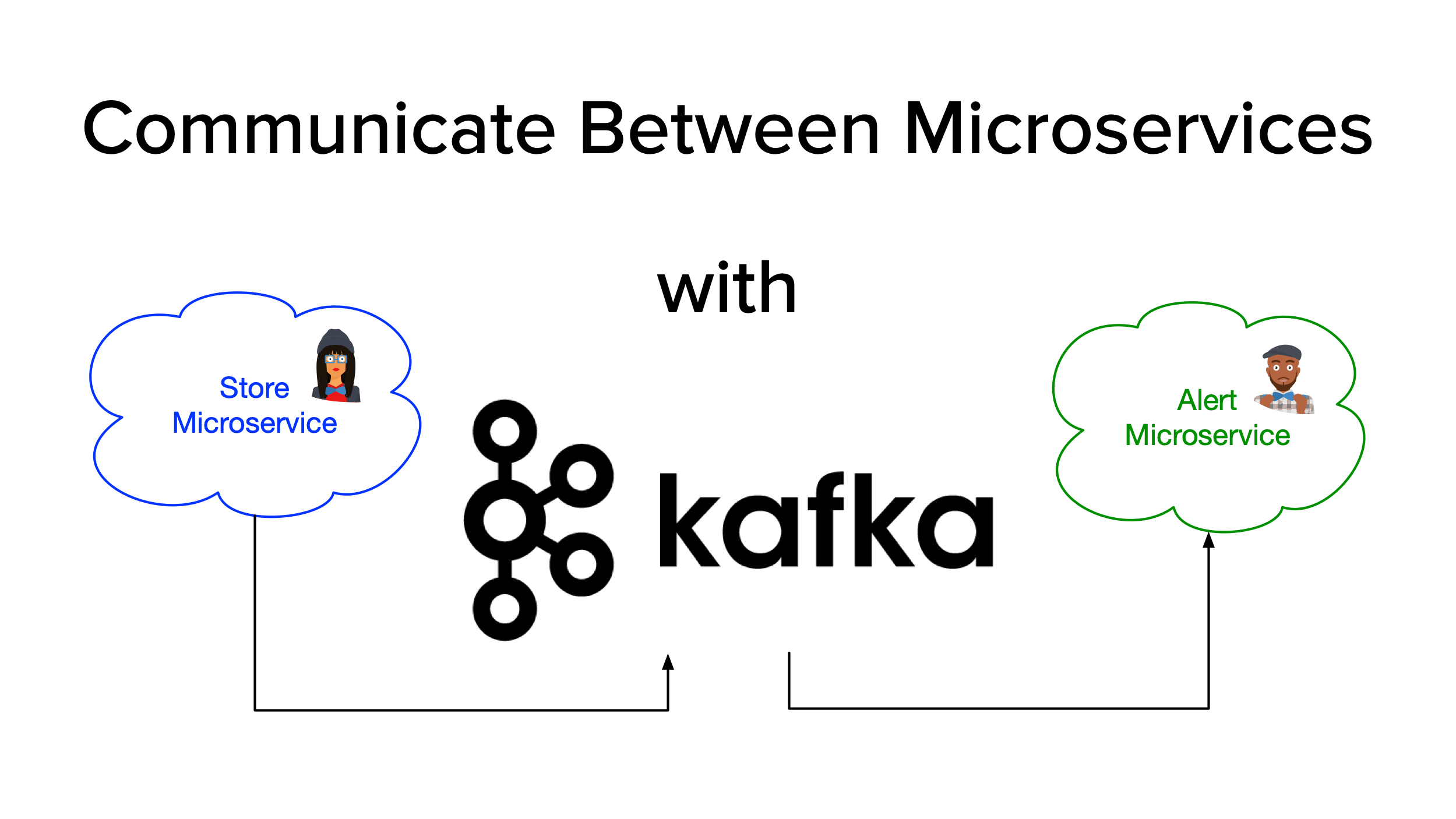
One of the traditional approaches for communicating between microservices is through their REST APIs. However, as your system evolves and the number of microservices grows, communication becomes more complex, and the architecture might start resembling our old friend the spaghetti anti-pattern, with services depending on each other or tightly coupled, slowing down development teams. This model can exhibit low latency but only works if services are made highly available. To overcome this design disadvantage, new...
What the Heck Is Project Loom for Java?

Java has had good multi-threading and concurrency capabilities from early on in its evolution and can effectively utilize multi-threaded and multi-core CPUs. Java Development Kit (JDK) 1.1 had basic support for platform threads (or Operating System (OS) threads), and JDK 1.5 had more utilities and updates to improve concurrency and multi-threading. JDK 8 brought asynchronous programming support and more concurrency improvements. While things have continued to improve over multiple versions, there has been nothing groundbreaking...
Build a Simple CRUD App with Spring Boot and Vue.js

You will use Vue and Spring Boot to build a todo list web application. The application will include CRUD abilities, meaning that you can create, read, update, and delete the todo items on the Spring Boot API via the client. The Vue frontend client will use the Quasar framework for the presentation. OAuth 2.0 and OpenID Connect (OIDC) will secure the Spring Boot API and the Vue client, initially by using Okta as the security...
CI/CD Java Microservices with CircleCI and Spinnaker

Continuous integration and delivery (CI/CD) are essential practices for modern software development. In this post we cover the basics of how to add CI/CD for a JHipster microservices architecture and Kubernetes as the target cloud deployment environment. Briefly, continuous integration is the practice of integrating code into the main branch of a shared repository early and often. Instead of integrating features at the end of a development cycle, code is integrated with the shared repository...
Get Started with Spring Boot and SAML

Spring is a long-time friend to enterprise companies throughout the world. When Spring Boot came along in 2014, it greatly simplified configuring a Spring application. This led to widespread adoption and continued investment in related Spring projects. One of my favorite Spring projects is Spring Security. In most cases, it simplifies web security to just a few lines of code. HTTP Basic, JDBC, JWT, OpenID Connect/OAuth 2.0, you name it—Spring Security does it! You might...
Add Auth to Any App with OAuth2 Proxy
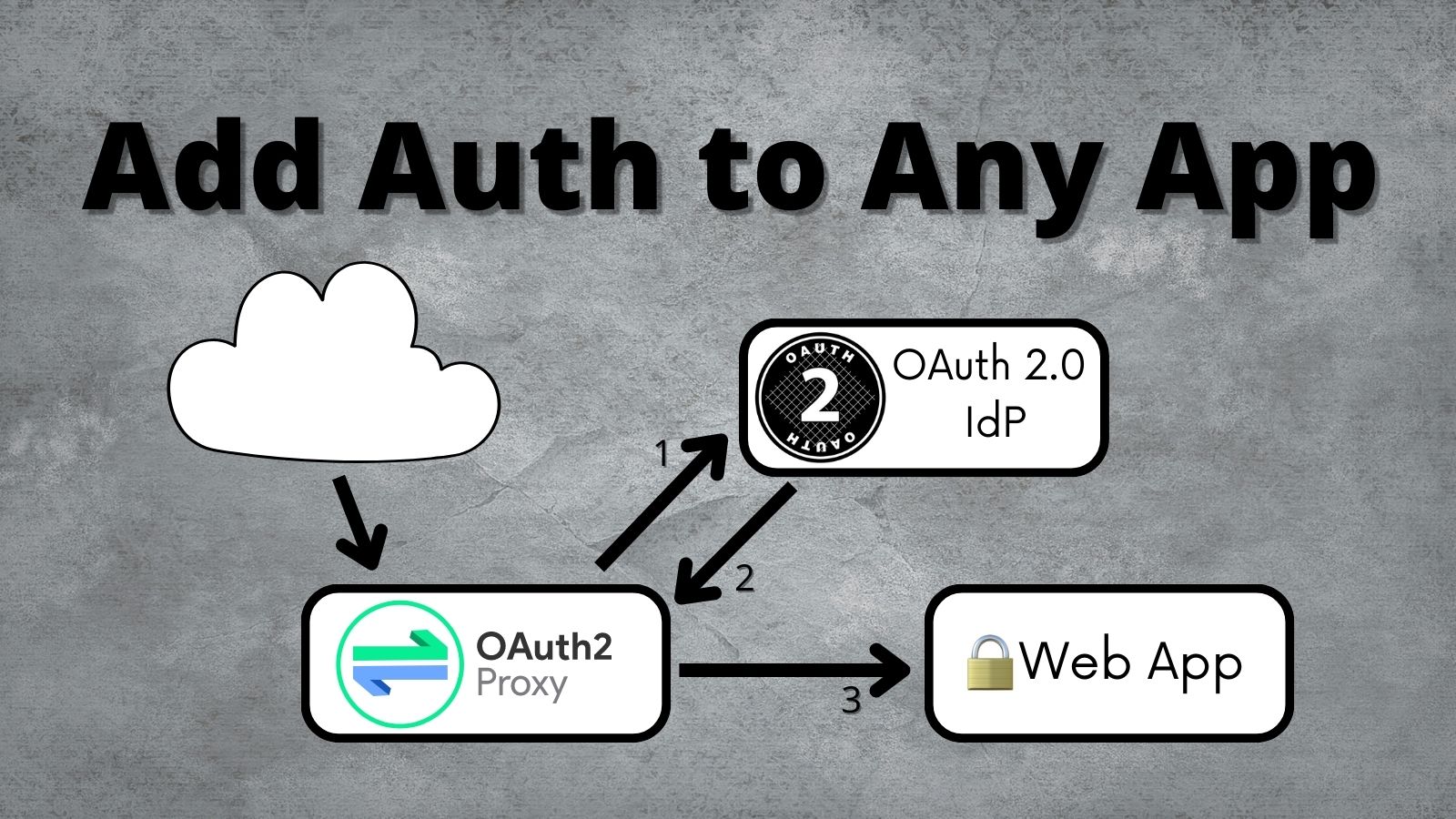
Updating an application to use OAuth 2.0 doesn’t need to be complicated. Most of the time, your language or framework will already have an OAuth library. Sometimes, this isn’t the case, and you need to find an alternative. In this post, I’ll walk through setting up and using OAuth2 Proxy to secure your application without any code changes! OAuth2 Proxy is a reverse proxy that sits in front of your application and handles the complexities...
JHipster Microservices on AWS with Amazon Elastic Kubernetes Service

In this tutorial, you’ll use JHipster to build a microservice stack and deploy it to Amazon Elastic Kubernetes Service (EKS). The microservices will use Java and Spring Boot for resource servers and Vue for the frontend. The server-side applications will use Spring’s Reactive technology stack. The microservice will include multiple databases and database types: PostgresSQL, MongoDB, and Neo4j. You’ll secure the service using OAuth 2.0 and OpenID Connect (OIDC), with Okta as the OIDC provider....
How to Deploy Java Microservices on Amazon EKS Using Terraform and Kubernetes
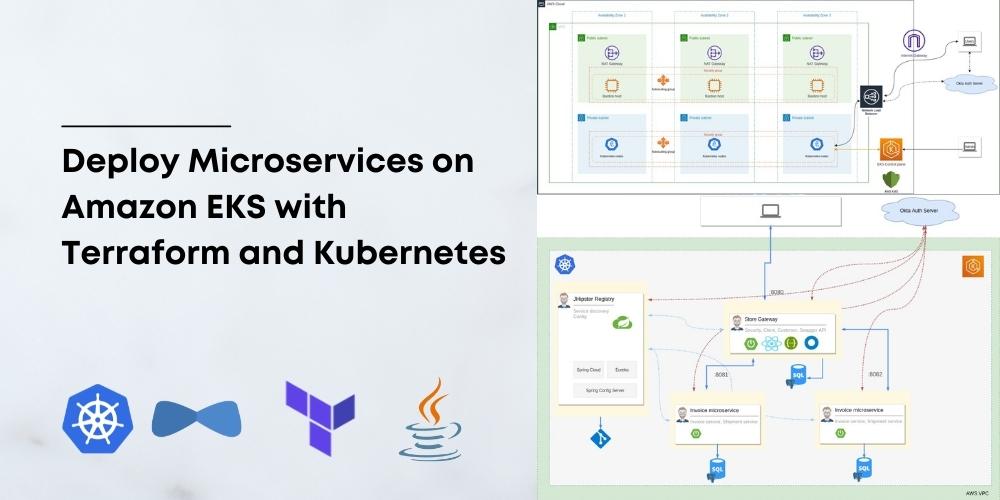
When it comes to infrastructure, public clouds are the most popular choice these days, especially Amazon Web Services (AWS). If you are in one of those lucky or unlucky (depending on how you see it) teams running microservices, then you need a way to orchestrate their deployments. When it comes to orchestrating microservices, Kubernetes is the de-facto choice. Most public cloud providers also provide managed Kubernetes as a service; for example, Google provides Google Kubernetes...
Use React and Spring Boot to Build a Simple CRUD App

React was designed to make it painless to create interactive UIs. Its state management is efficient and only updates components when your data changes. Component logic is written in JavaScript, meaning you can keep state out of the DOM and create encapsulated components. Developers like CRUD (create, read, update, and delete) apps because they show a lot of the base functionality you need when creating an app. Once you have the basics of CRUD completed...
OAuth for Java Developers
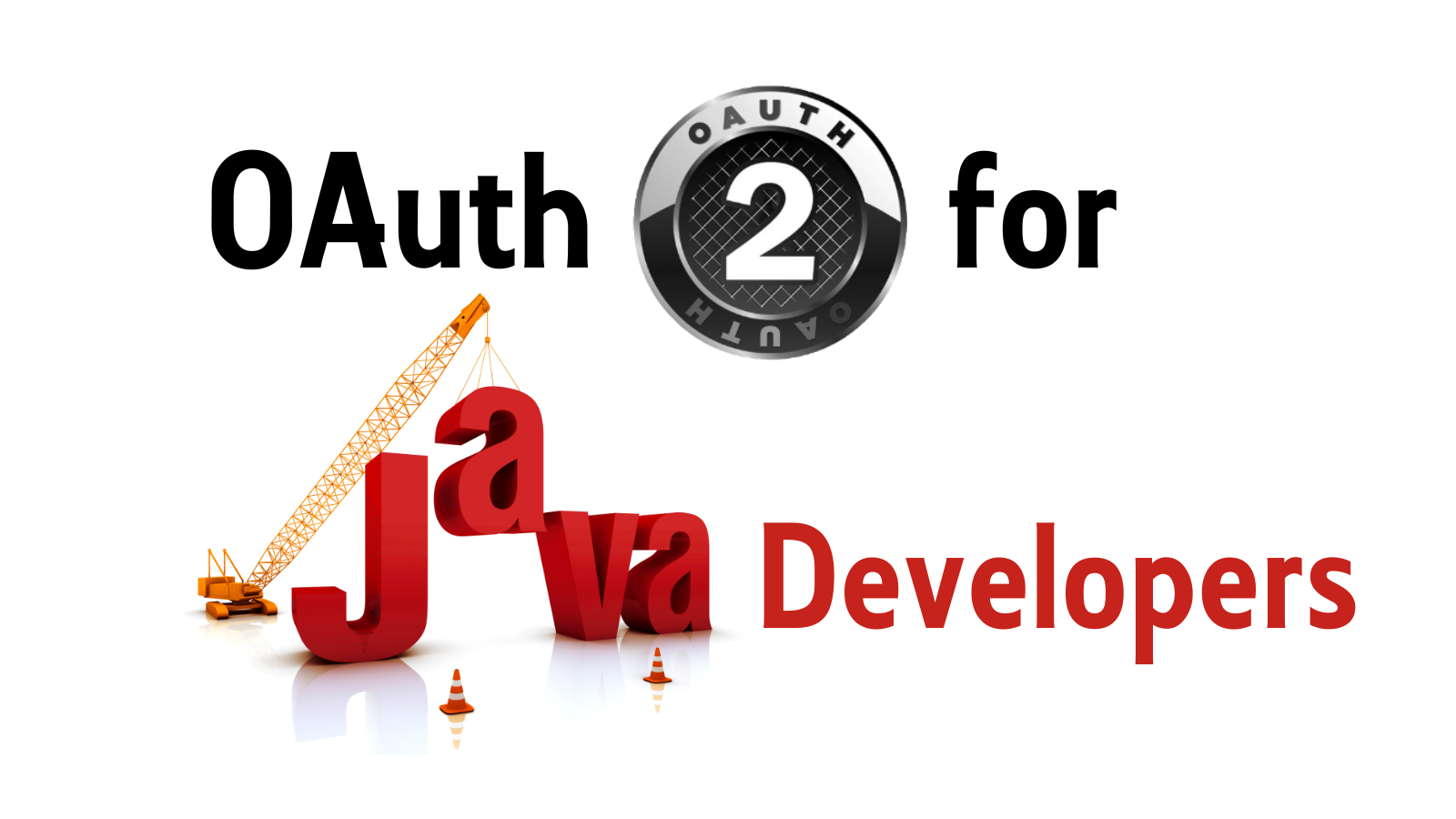
You can use OAuth to secure apps, APIs, and devices. OAuth has become increasingly popular, especially as developers are asked to knit together hundreds of apps and thousands of users in enterprise environments. The Java ecosystem is vast, with over 10 million developers worldwide and an abundance of IDEs, build tools, libraries, and frameworks to make them more productive. The infographic below is recommended as a starting point for Java developers. It’s designed to help...
Cloud Native Java Microservices with JHipster and Istio

Microservices are not everyone’s cup of tea, and they shouldn’t be. Not every problem can or should be solved by microservices. Sometimes building a simple monolith is a far better option. Microservices are solutions for use cases where scale and scalability are important. A few years ago, microservices were all the rage, made popular, especially by companies like Netflix, Spotify, Google, etc. While the hype has died down a bit, genuine use cases still exist....
Run Microservices on DigitalOcean with Kubernetes

Cloud adoption continues to increase rapidly worldwide, and not only in the software industry. Every year more and more companies move their applications to the cloud. In the last JHipster community survey, from December 2021, participants valued JHipster’s ability to get them to production faster, and requested more tutorials on deployment to cloud platforms. DigitalOcean is among the most popular “other” cloud vendors, according to some surveys. This post is a quick walk-through of the...
Create a Java REST API with Helidon
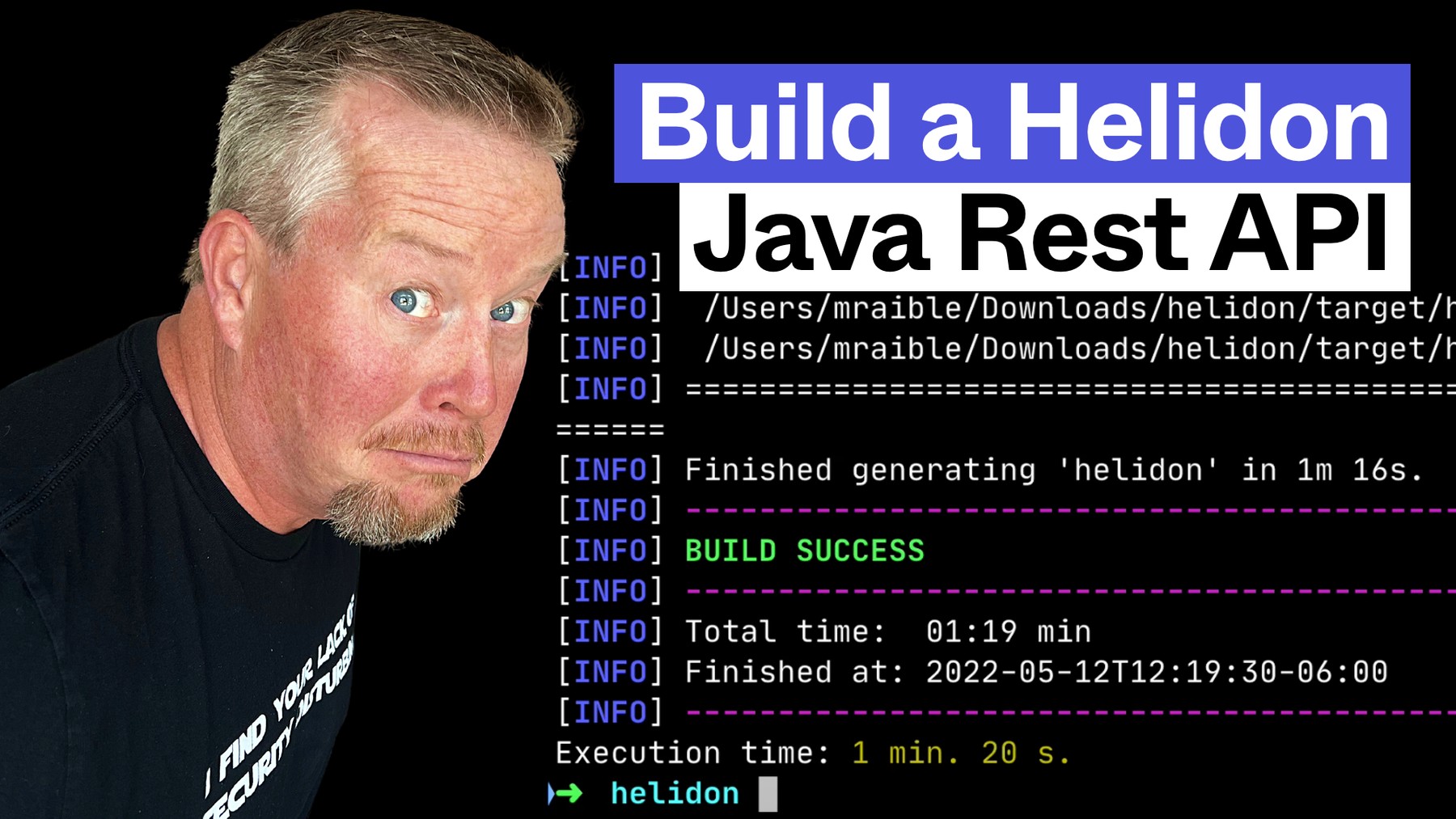
In this tutorial, I’ll show you how to create a secure REST API and native image with Helidon. You’ll see how to run a secure, OAuth 2.0-protected, Java REST API that allows JWT authentication. Then, I’ll compare its performance with Micronaut, Quarkus, and Spring Boot. This tutorial is also available as a screencast. Prerequisites: SDKMAN (for Java 17 with GraalVM) HTTPie (a better version of cURL) An Okta Developer Account (or the Okta CLI) The...
Launch a Java REST API with Micronaut
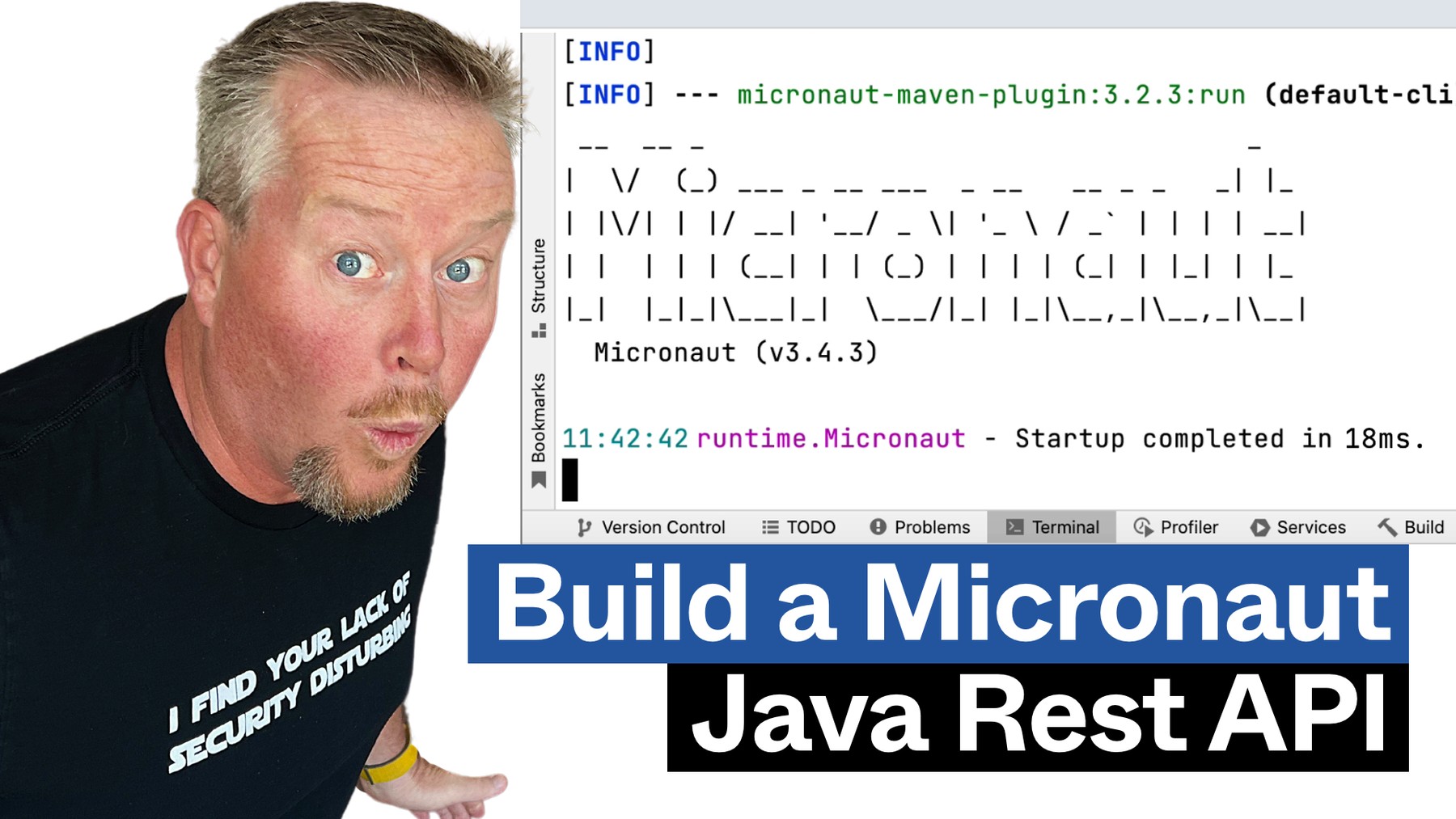
In this tutorial, I’ll show you how to create a secure REST API and native image with Micronaut. You’ll see how to run a secure, OAuth 2.0-protected, Java REST API that allows JWT authentication. Then, I’ll compare its performance with Quarkus, Spring Boot, and Helidon. This tutorial is also available as a screencast. Prerequisites: SDKMAN (for Java 17 with GraalVM) HTTPie (a better version of cURL) An Okta Developer Account (or the Okta CLI) The...
Start a Java REST API with Spring Boot
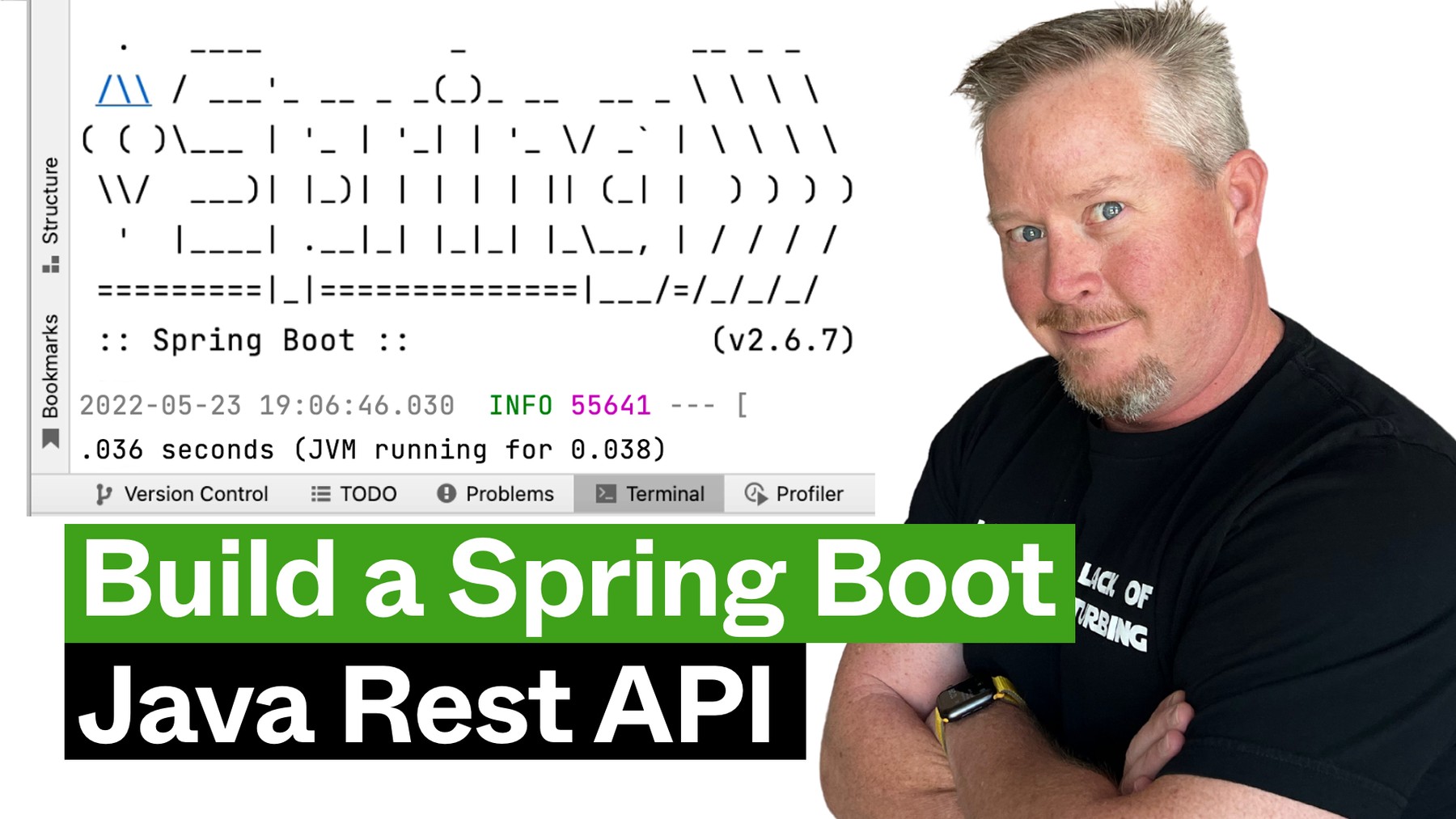
In this tutorial, I’ll show you how to create a secure REST API and native image with Spring Boot. You’ll see how to run a secure, OAuth 2.0-protected, Java REST API that allows JWT authentication. Then, I’ll compare its performance with Micronaut, Quarkus, and Helidon. This tutorial is also available as a screencast. Prerequisites: SDKMAN (for Java 17 with GraalVM) HTTPie (a better version of cURL) An Okta Developer Account (or the Okta CLI) The...
Kickstart a Java REST API with Quarkus
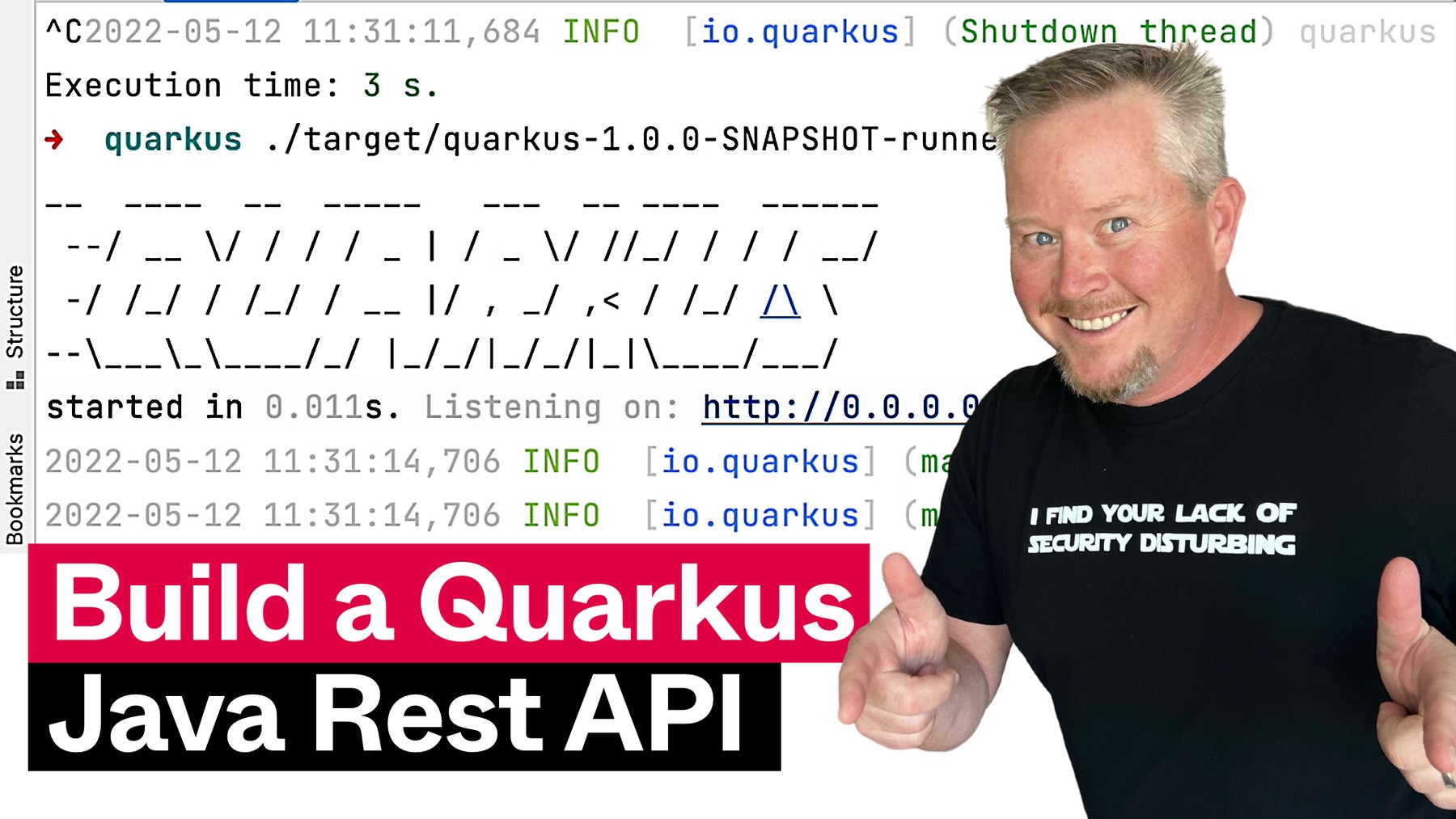
In this tutorial, I’ll show you how to create a secure REST API and native image with Quarkus. You’ll see how to run a secure, OAuth 2.0-protected, Java REST API that allows JWT authentication. Then, I’ll compare its performance with Micronaut, Spring Boot, and Helidon. This tutorial is also available as a screencast. Prerequisites: SDKMAN (for Java 17 with GraalVM) HTTPie (a better version of cURL) An Okta Developer Account (or the Okta CLI) The...
Kubernetes Microservices on Azure with Cosmos DB

In this tutorial, you’ll learn how to deploy a JHipster-based reactive microservice to Azure Kubernetes Service (AKS). You’ll use Azure’s Cosmos DB as a persistent store for one of the services. For security, you’ll use Okta as an OAuth 2.0 and OpenID Connect (OIDC) provider. You’ll also securely encrypt all secrets in the project configuration files using Kubernetes secrets and kubeseal. This tutorial focuses on deploying an already generated project to Azure AKS. It does...
Building a WebAuthn Application with Java

The Web Authentication (WebAuthn) specification, given official approval by the World Wide Web Consortium (W3C) and the FIDO Alliance in 2019, aims to strengthen online security by allowing users to sign in to sites with elements like biometrics and FIDO security keys. The WebAuthn API can replace or supplement less-secure passwords, which may be weak and are often shared. WebAuthn is supported by default in Firefox and Chrome browsers and can be used in Edge...
Use GitHub Actions to Build GraalVM Native Images

Getting something to work is one of the greatest feelings you can have as a developer. Especially when you’ve spent hours, days, or months trying to make it happen. The last mile can be one of the most painful and rewarding experiences, all wrapped into the same day or two. I experienced this recently with Spring Native for JHipster. If I look back, it took a year’s worth of desire, research, and perseverance to make...
A Quick Guide to Regular Expressions in Java

Whether you’re coding, using a search engine, searching and replacing text in a text editor, or using the command-line utilities grep, sed, and awk in Linux, you’re using regular expressions (also known as “regex” or “regexp”). Yes, they’re everywhere. A regular expression is a sequence of characters used to describe a text pattern. Working with regular expressions is rarely described as fun, but they are useful for various problems while coding a feature, such as...
Authenticate from the Command Line with Java

Anyone who has tried to type a password using a television remote can tell you what a pain it is. Not only will you be frustrated with the keyboard, but it’s not secure; everyone else in the room can see what you are typing. Fortunately, the OAuth 2.0 Device Authorization Grant gives you an easier way to sign in. The name is a mouthful, but if you have ever logged in to a TV by...
Does Java 18 finally have a better alternative to JNI?
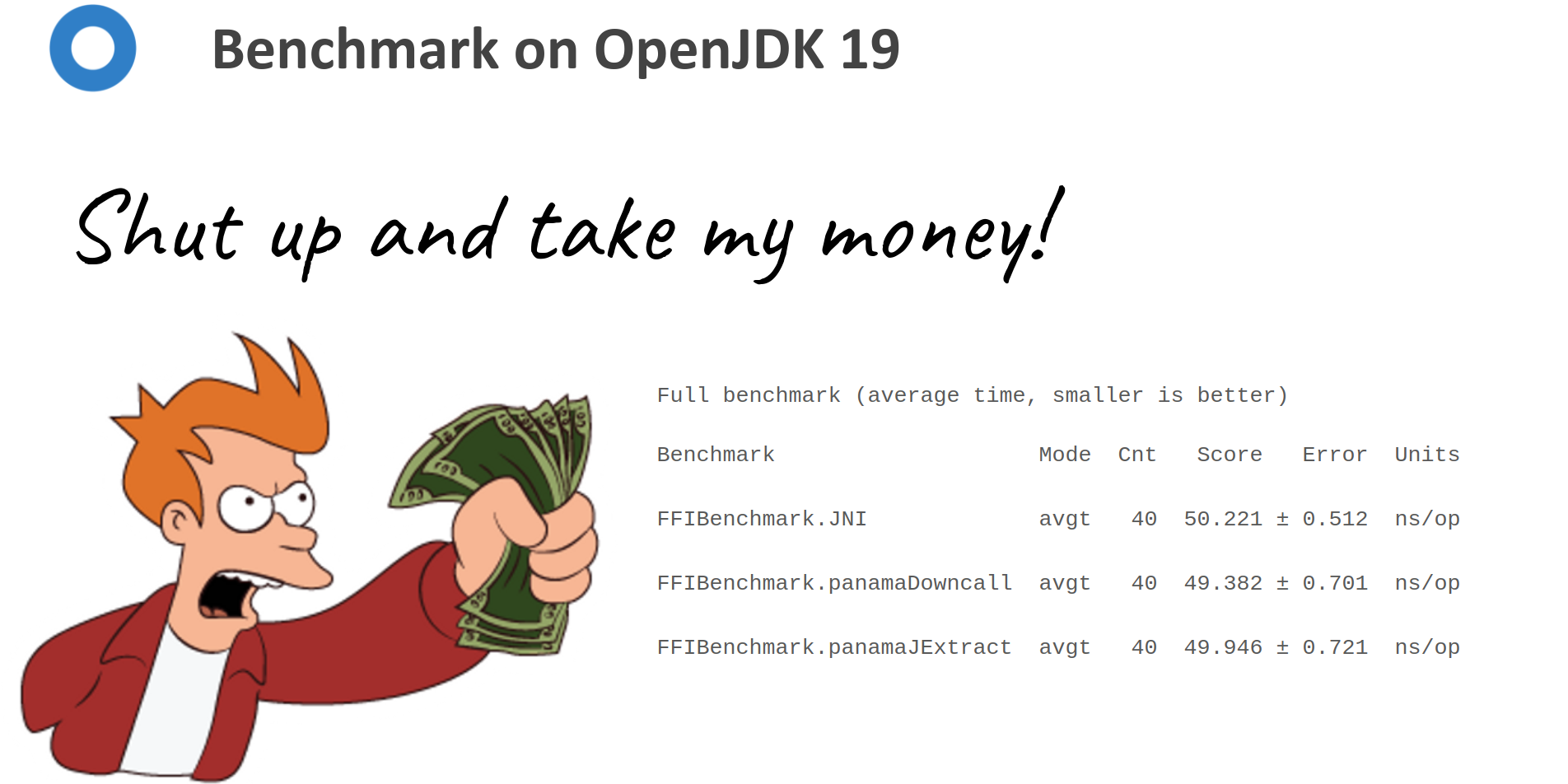
Java 18 was released last month (March 2022), and with it comes the second incubator of the Foreign Function & Memory API, so let us look at the state of Foreign Function Interface (FFI) in Java. Table of Contents What is a Foreign Function Interface? Why is Foreign Function Interface needed? A brief history of FFI in Java Java Native Interface (JNI) Java Native Access (JNA) Java Native Runtime (JNR) Enter Project Panama Foreign-Memory Access...
Use Thymeleaf Templates with Spring WebFlux to Secure Your Apps

The Thymeleaf library has been around at least for 10 years and it is still actively maintained as of today. It is designed to allow stronger collaboration between design and developer teams for some use cases, as Thymeleaf templates look like HTML and can be displayed in the browser as static prototypes. In this tutorial you will learn how to create a simple Spring WebFlux application with Thymeleaf and Okta OIDC authentication, addressing the security...
Introducing Spring Native for JHipster: Serverless Full-Stack Made Easy

Over the years, I’ve developed a lot of Java applications. I started writing Java code in the late 90s and spent several years doing Java before I tried another server-side language. I was impressed when I first tried building apps in Ruby on Rails, Python, and Node.js - they all started super-fast! Starting fast is cool, but we in the Java community have often asked, does it perform over time? The Java Virtual Machine is...
JHipster Community Survey Results

This post is syndicated from the JHipster community blog on dev.to. The Okta DevRel team thought you’d find it insightful. Okta is the platinum sponsor of the JHipster project. Several weeks ago, we launched the JHipster Community Survey. The goal was to get feedback from the community about the most useful features and components, things that are missing, and where we should focus our attention to make the project even better for everyone. We got...
A Quick Guide to Elasticsearch with Spring Data and Spring Boot

You’ve probably heard of Elasticsearch or the Elastic Stack. The project started as a search engine based on Lucene, an open-source search engine library built by Shay Banon to index his wife’s cooking recipes. Since its early days, Elasticsearch has come a long way and has evolved into the Elastic Stack, a great suite for taking data from any source, in order to search, analyze, and visualize it in near real-time. Elasticsearch is a distributed...
Better Integration Testing With Spring Cloud Contract

Spring Cloud Contract was created as a way to help test interconnected microservices. Generally speaking, there are two options when testing microservices: 1) you can deploy the entire mesh of services in your integration tests and test against that, or 2) you can mock each service in your integration tests. Both of these options have serious drawbacks. The first, deploying the entire mesh of microservices for testing, has the obvious drawback of being difficult, if...
Three Ways to Run Your Java Locally with HTTPS

If you’re developing a web application, chances are you want your dev environment as close to production as possible. One of the often-overlooked differences between local development and production servers is the use of Transport Layer Security (TLS), or Hypertext Transfer Protocol Secure (HTTPS). In this post, I’ll cover three different options to get your local Java app running with TLS in no time! Table of Contents Start with a simple Java application HTTPS using...
Build REST APIs and Native Java Apps with Helidon

Project Helidon is a set of Java libraries for writing microservices. It’s an open source, Apache 2.0-licensed, Oracle-sponsored project and contains support for MicroProfile as well as a reactive, functional API. Helidon’s two different styles are known as Helidon MP and SE, respectively. The helidon.io website says: Since Helidon is simply a collection of Java libraries running on a fast Netty core, there is no extra overhead or bloat. Today, I’m going to put this...
Five Anti-Patterns with Secrets in Java

Most applications require some sort of secret or password to enable access: database connection info, API keys, OAuth client secrets, and JWT keys, to list some examples. Dealing with secrets in your projects is always a chore, and it’s often done wrong. In this post, I’ll describe five common problems, which you can think of as anti-patterns (the opposite of a best practice) and I’ll offer suggestions to help you avoid these issues. Table of...
Full Stack Java with React, Spring Boot, and JHipster

If you search for “Full Stack Java” on the internet, you’ll likely find a lot of recruiting, courses, and jobs. Being a full stack developer can be exciting because you can create the backend and frontend of an app all by yourself. There is business logic and algorithms as well as styling, making things look good, and securing everything. It also pays pretty well. Today, I’m going to show you how you can be a...
Java Records: A WebFlux and Spring Data Example

When defining classes for a simple aggregation of values, Java developers have traditionally relied on constructors, accessors, equals(), hashCode() and toString(), an error-prone practice that has low value and shifts the focus away from modeling immutable data. Java records were introduced as a first preview in JDK 14 in order to simplify how we write data carrier classes. The second preview came in JDK 15 and the finalized feature arrived in JDK 16. A summary...
Spreading Some Okta Love to the DevOps World

Hello Oktaverse! So finally, I have landed at Okta on my second attempt 😉. I’m so excited about this new chapter in my career journey and can’t wait to see what’s in store. But first, introductions. Who am I I’m from the south of India, a village in Kerala to be specific, but I grew up in Chennai since my parents moved there looking for work when I was 12. I like to call myself...
Learn How to Build a Single-Page App with Vue and Spring Boot

In this tutorial, you are going to create a single-page application (SPA) that uses a Spring Boot resource server and a Vue front-end client. You’ll see how to configure Spring Boot to use JSON Web Tokens (JWT) for authentication and authorization, with Okta as an OAuth 2.0 and OpenID Connect (OIDC) provider. You’ll also see how to bootstrap a Vue client app with the Vue CLI and how to secure it using the Okta Sign-In...
Session Clustering for OAuth 2.0 Applications
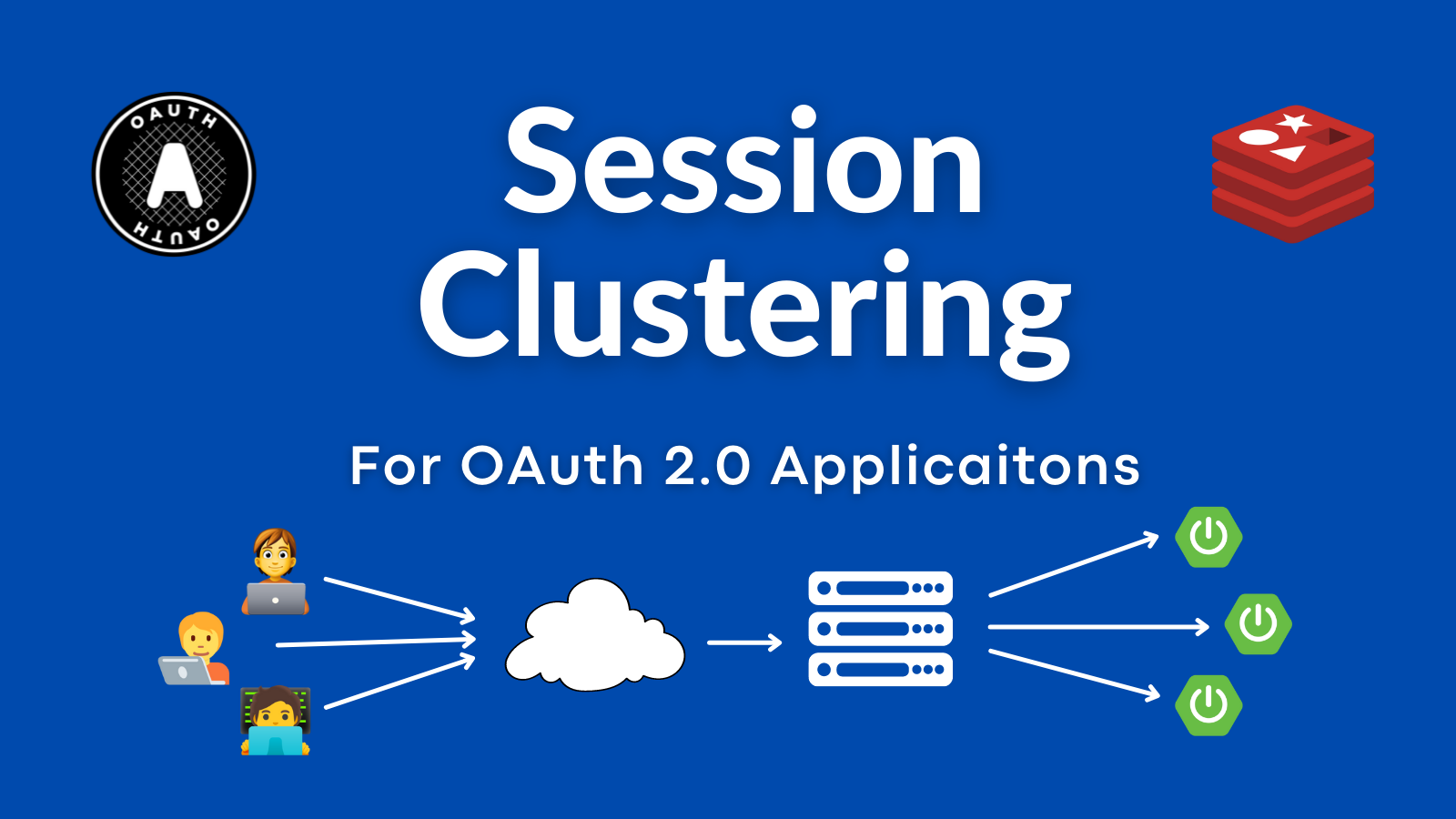
A common OAuth 2.0 question we get: "How do I deal with OAuth in a load-balanced application?" The short answer: There’s nothing specific about session clustering for OAuth. The longer answer is—you likely still need to worry about cluster session management. This post will discuss how an OAuth login relates to your application’s session. And we’ll build a simple, secure, load-balanced application to demonstrate. Note: In May 2025, the Okta Integrator Free Plan replaced Okta...
Spring Native in Action with the Okta Spring Boot Starter

In the fall of 2020, the Spring team released a new experimental Spring Native project that gave Spring developers hope for faster startup times. Spring Native is all about converting your Spring applications to native executables. It leverages GraalVM to make it happen. This announcement was huge because the new kids on the block, Micronaut and Quarkus, produced native executables by default. I was really excited about Spring Native when I first heard about it....
How to Prevent Reactive Java Applications from Stalling

Modern applications must work smoothly on high loads and with a high number of concurrent users. Traditional Java applications run blocking code and a common approach for scaling is to increase the number of available threads. When latency comes into the picture, many of these additional threads sit idle, wasting resources. A different approach increases efficiency by writing asynchronous non-blocking code that lets the execution switch to another task while the asynchronous process completes. Project...
Content Negotiation with a Java MicroProfile Application
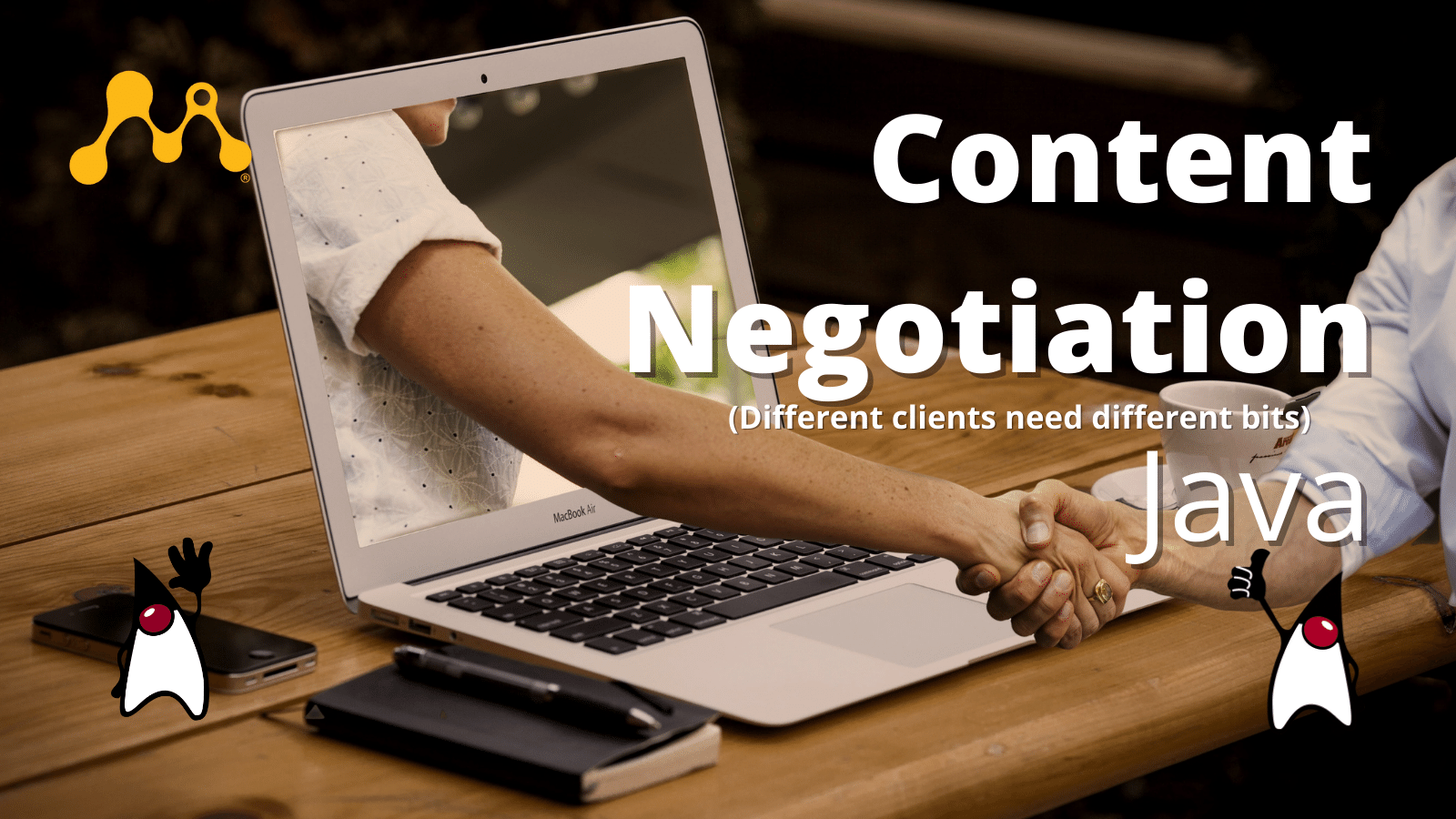
Content negotiation allows for an HTTP server to respond to different types of clients. Many modern clients expect a JSON response, but there may be a need to format responses differently, maybe XML for older clients or a binary format for newer ones. Content negotiation is the mechanism used to solve that problem and others, such as dealing with multiple languages and even compressing HTTP requests. In this post, I’ll walk through building a simple...
Spring WebClient for Easy Access to OAuth 2.0 Protected Resources

Spring ẀebClient was added as part of the reactive web stack WebFlux in Spring Framework 5.0. WebClient allows performing HTTP requests in reactive applications, providing a functional and fluent API based on Reactor, and enabling a declarative composition of asynchronous non-blocking requests without the need to deal with concurrency. One of its features is support for filter registration, allowing to intercept and modify requests, which can be used for cross-cutting concerns such as authentication, as...
Easy Distributed Tracing with Spring Cloud Sleuth

Spring Cloud Sleuth allows you to aggregate and track log entries as requests move through a distributed software system. In a monolithic system, it’s relatively easy to track requests as they move through the codebase because all requests can easily be logged to the same log file. You can generally just filter the log by the thread ID. But in a distributed system, a single client request may sprawl across any number of discrete cloud...
Faster Spring Boot Testing with Test Slices

We know unit testing is a vital part of the software development process. We also know us developers love to debate techniques, frameworks, strategies, and how different layers and components need testing. Unit tests are the most valuable when they are stable, fast, and reproducible. Spring Boot is known to reduce boilerplate code and make development extremely efficient, but it can come with a cost when it comes down to the testing. Without prior optimization,...
Build Native Java Apps with Micronaut, Quarkus, and Spring Boot

Java has been able to invoke native programs on an operating system for decades. Invoking native programs is often done using JNI (Java Native Interface) and JNA (Java Native Access). In the last few years, Java has also gained the ability to run JVM apps as native apps. That is, they’re binary executables that have no dependency on the Java runtime. This is huge! Mostly because it gives Java apps the ability to start up...
Kubernetes to the Cloud with Spring Boot and JHipster
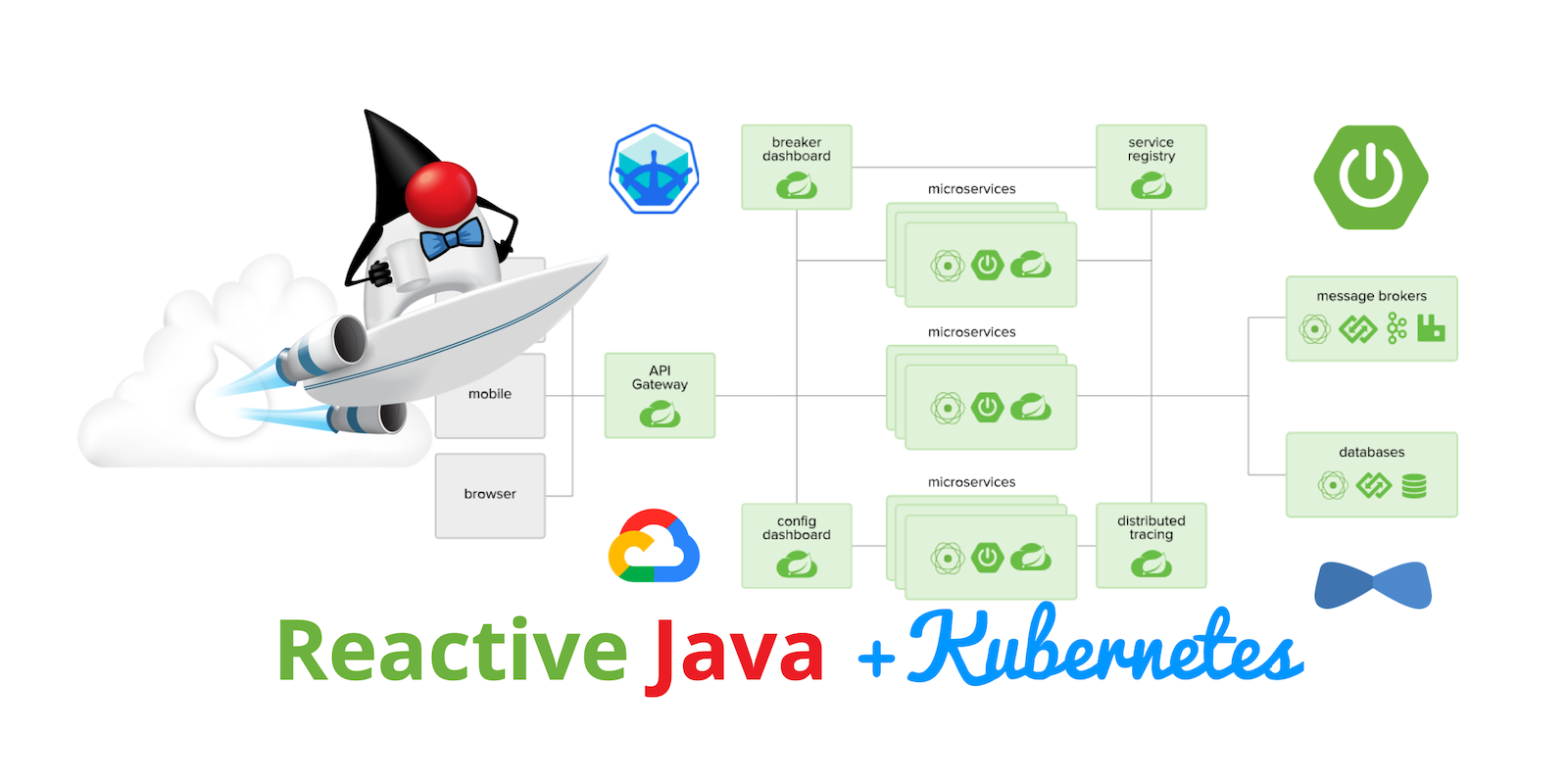
When your business or application is successful, it needs to scale. Not just technology-wise, but human-wise. When you’re growing rapidly, it can be difficult to hire developers fast enough. Using a microservices architecture for your apps can allow you to divide up ownership and responsibilities, and scale teams along with your code. Kubernetes is an open-source platform for managing containerized workloads and services. Kubernetes traces its lineage directly from Borg, Google’s long-rumored internal container-oriented cluster-management...
Build an Android App with RxJava and Kotlin
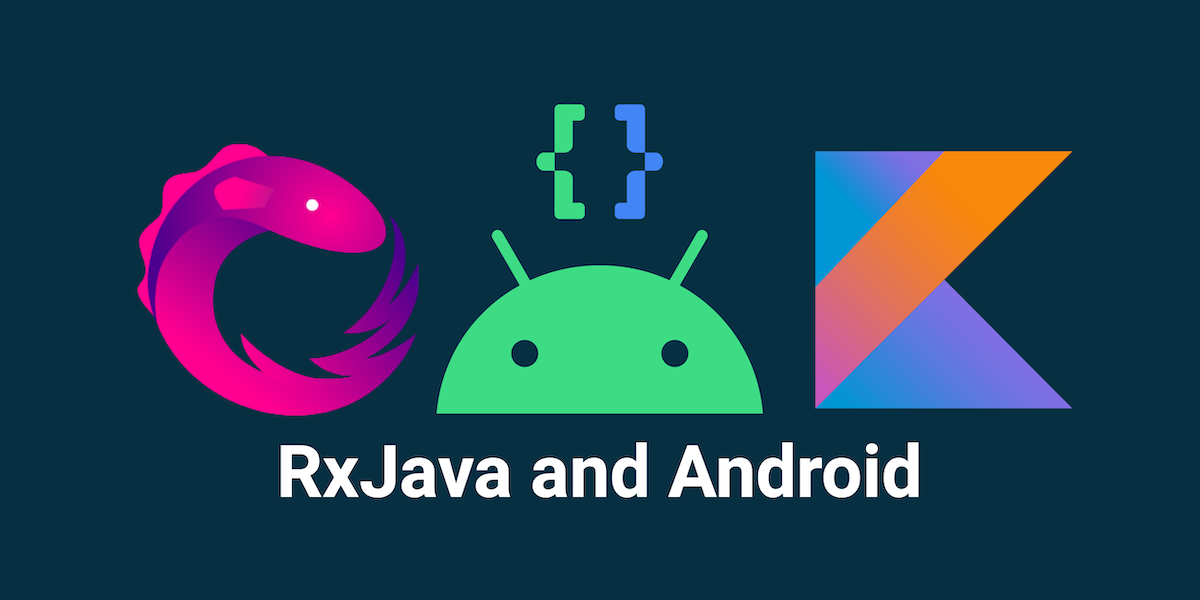
Modern-day mobile apps do so much. They communicate with different back-ends via network APIs. They store and retrieve data from the local database, do heavy media processing, and communicate with web sockets. It’s hard to keep track of all the information from different asynchronous data sources, especially knowing that the users are accustomed to constantly having a fluid experience with the apps they use. In the early days of Android, developers used the class AsyncTask...
R2DBC and Spring for Non-Blocking Database Access
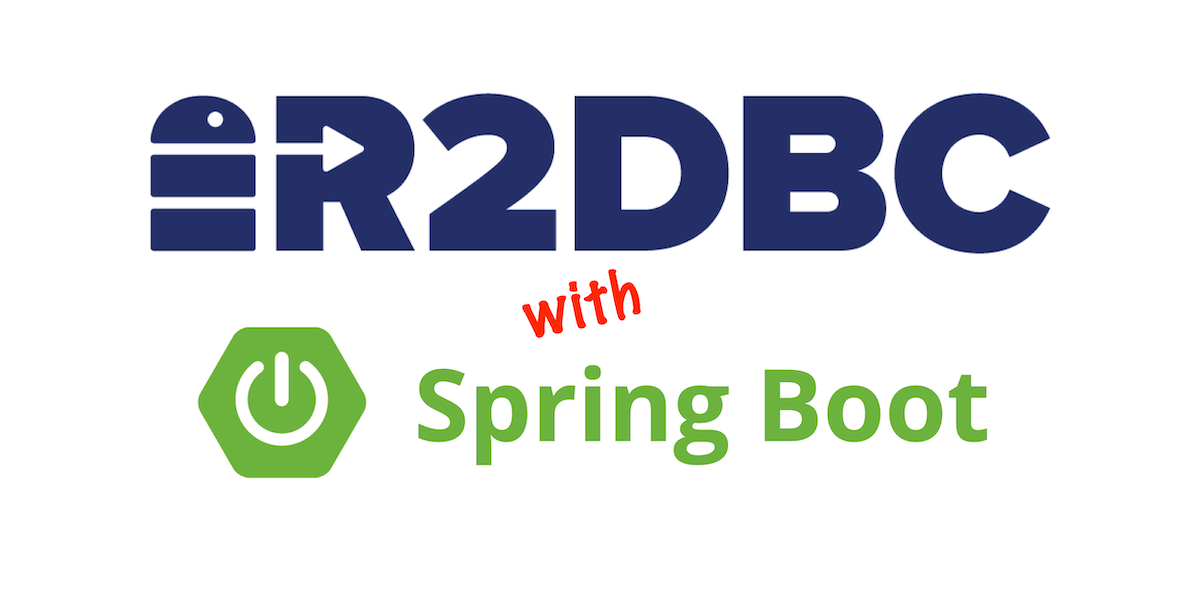
Reactive APIs are a powerful way to handle and serve large amounts of data and large numbers of requests in a web application. They rely on a “server-side event” model in which the client (e.g. your browser) subscribes to “events” on the server, and the server “pushes” events to the client as they become available. For simple CRUD applications this is not very useful. However, in situations with millions of “subscribers” it can offer improved...
How to Use Client Credentials Flow with Spring Security

The client credentials grant is used when two servers need to communicate with each other outside the context of a user. This is a very common scenario—and yet, it’s often overlooked by tutorials and documentation online. In contrast, the authorization code grant type is more common, for when an application needs to authenticate a user and retrieve an authorization token, typically a JWT, that represents the user’s identity within the application and defines the resources...
Fast Java Made Easy with Quarkus and JHipster

Quarkus is a Kubernetes-native, Java framework for building high-performance web, serverless, and native apps. It uses Ahead of Time (AOT) compilation and aggressive optimizations like classpath scanning, configuration reloading, and application bootstrap pre-configuration during the build process. This results in impressive startup performance. In other words, a Quarkus app starts up super fast! Like Spring and Micronaut, Quarkus can take advantage of GraalVM to transform a JVM-based application into a native executable, improving the overall...
Reactive Java Microservices with Spring Boot and JHipster
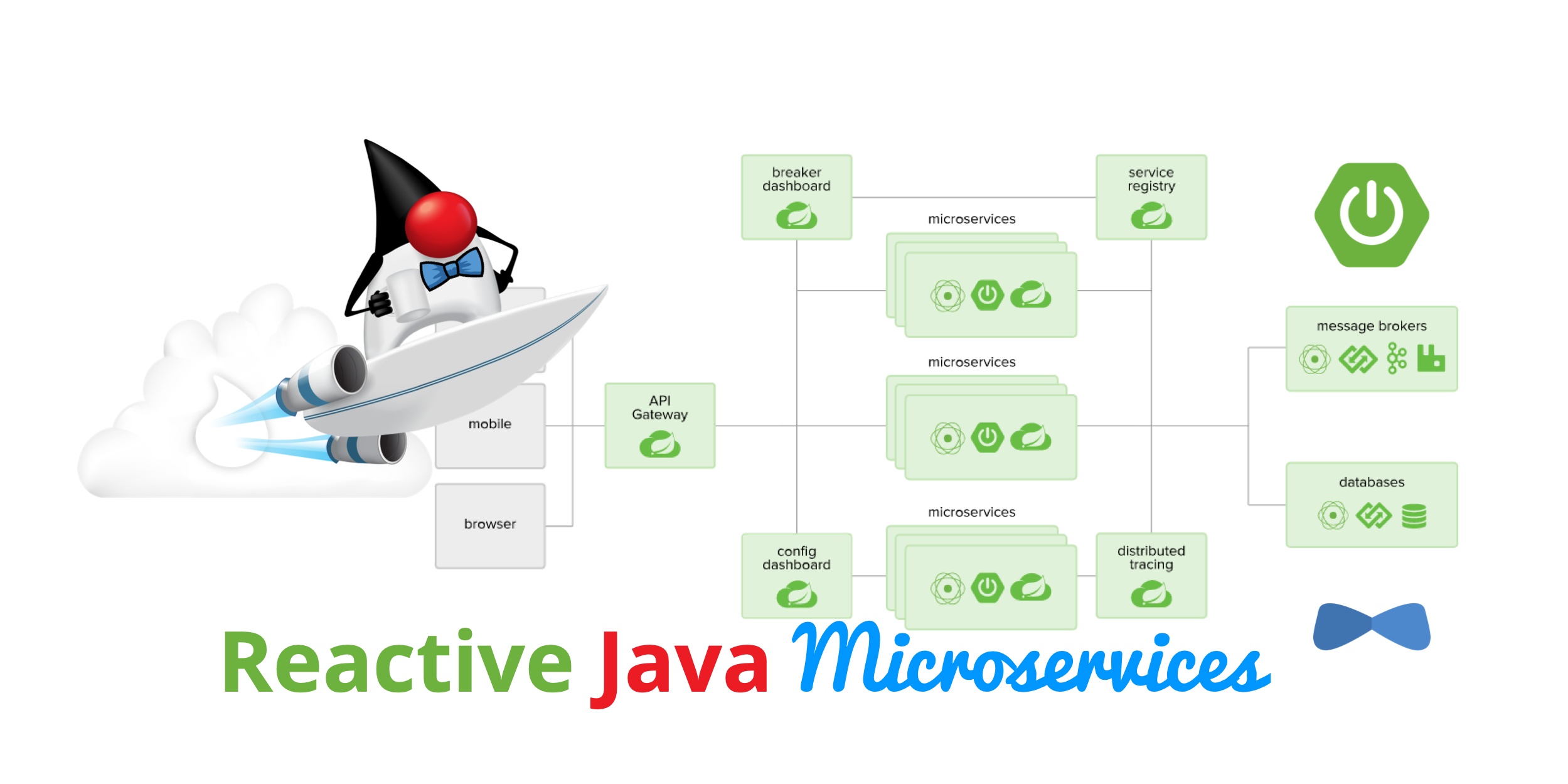
Java has been at the forefront of microservice architectures since they came to prominence a few years ago. It’s a popular language with well-known, high-quality frameworks, like Spring Boot, Spring Cloud, Spring Data, and Spring Security. Spring Boot 2.0 introduced a new web framework called Spring WebFlux. Previous versions of Spring Boot only shipped with Spring MVC as an option. WebFlux offers a way for developers to do reactive programming. This means you can write...
Build a Secure GraphQL API with MicroProfile
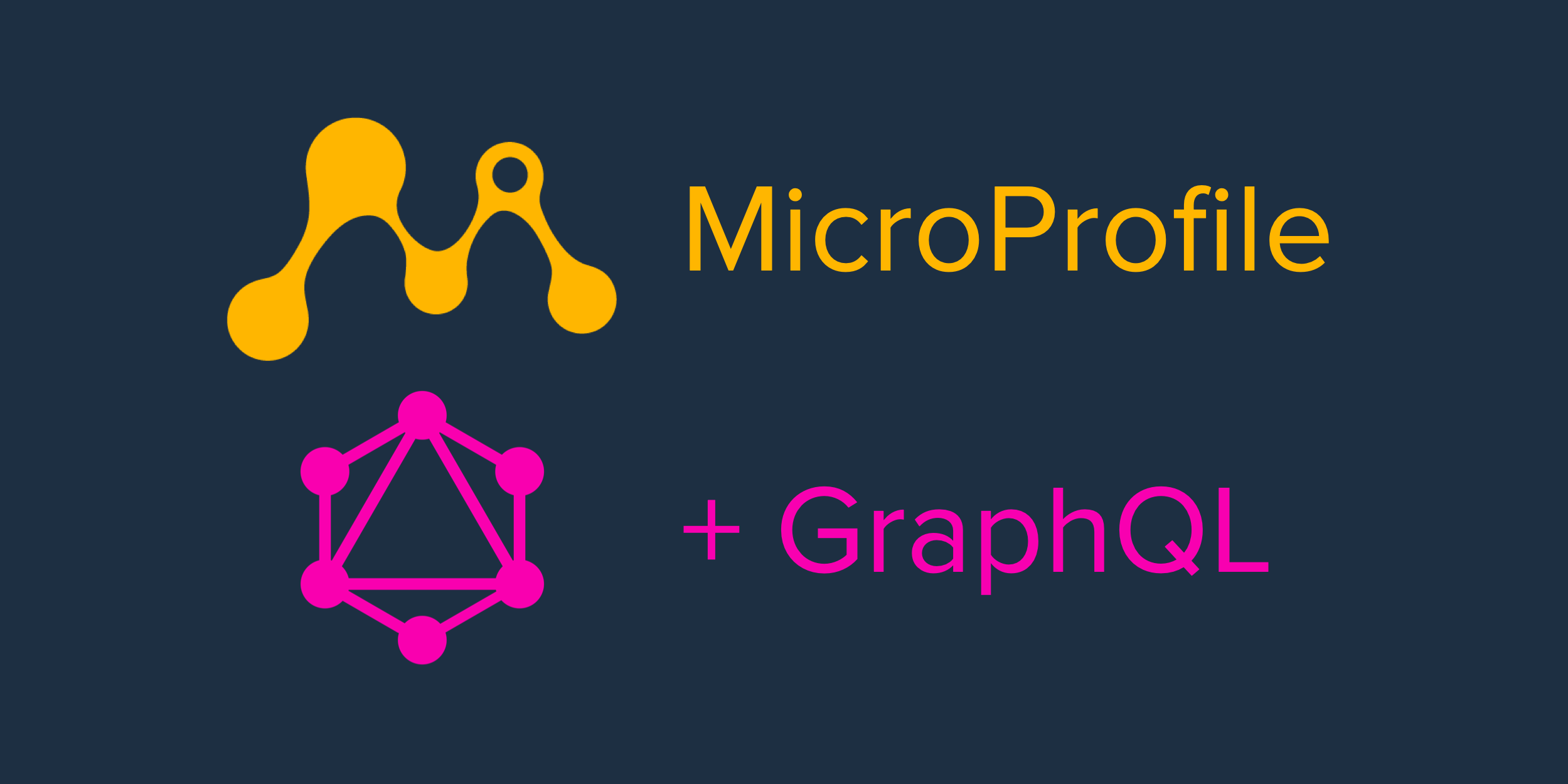
MicroProfile is an open-source community project with the goal to encourage the development of Java microservice solutions. It was created in 2016 in response to the changing needs of modern web development. In particular, it seeks to foster the development of smaller, less monolithic services (microservices) that can run on faster release cycles than the typical, old-school Enterprise Java application. Shortly after its creation, it joined the Eclipse foundation. MicroProfile, in essence, is a set...
Android Login Made Easy with OIDC

Having a dedicated part of a mobile app for authorized users is a must for a modern-day app. Users want to have a personalized experience with the apps they love. They expect to seamlessly use services on different devices and platforms. And, most of all, they want to be sure that their personal data is secure. Implementing a secure login process on Android can be challenging to achieve since many different moving parts need to...
How to Docker with Spring Boot
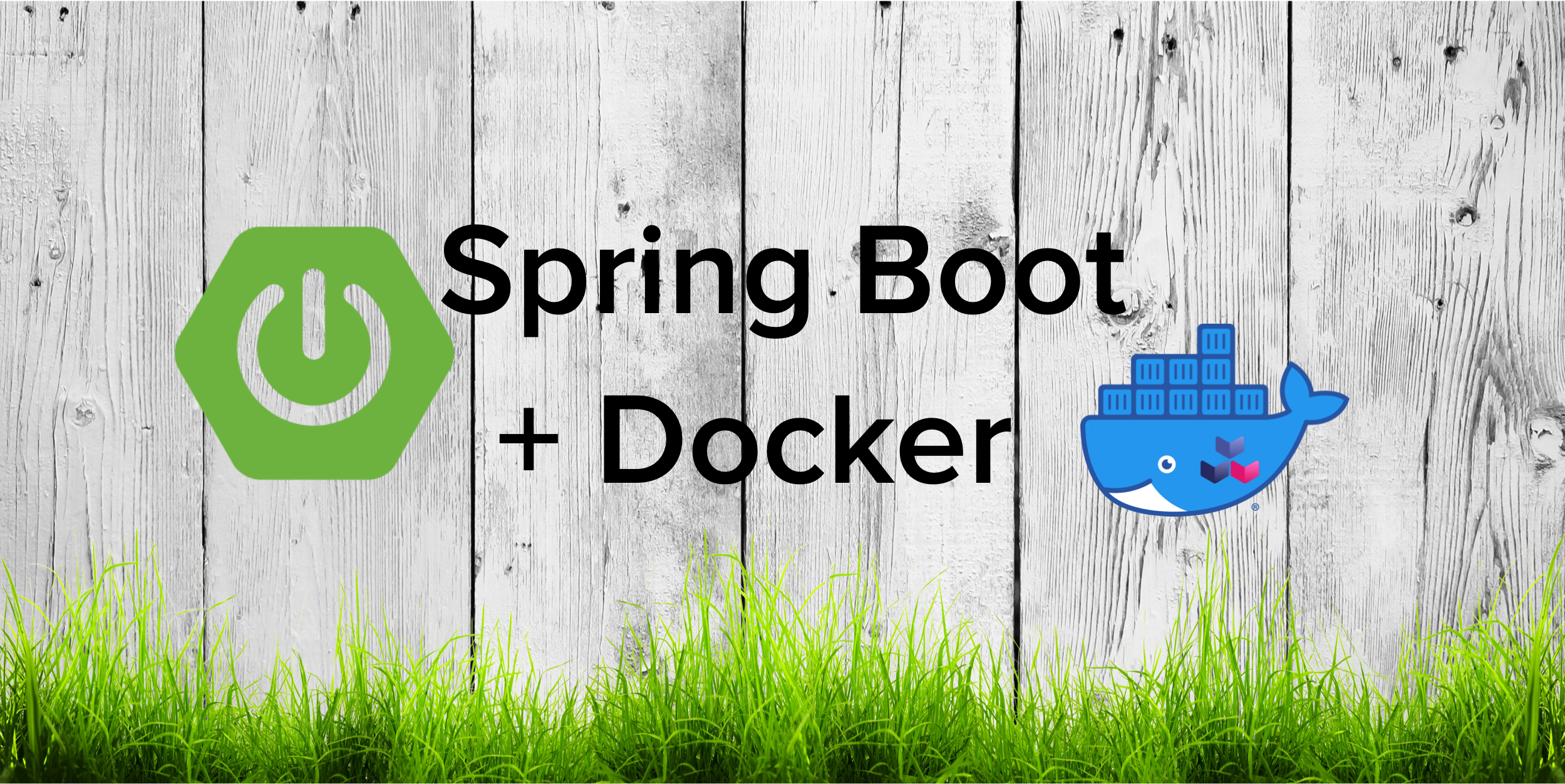
Those of you reading this have certainly heard of Docker. After years of hype, it has become the somewhat standard technology for everyday DevOps operations. It greatly helped to simplify deployments and testing by creating efficient, immutable images of the applications which are working in their own silo. More efficient placement of applications has made this technology central for cloud applications which is why it has gotten so much attention in recent years. Docker has...
Scaling Secure Applications with Spring Session and Redis
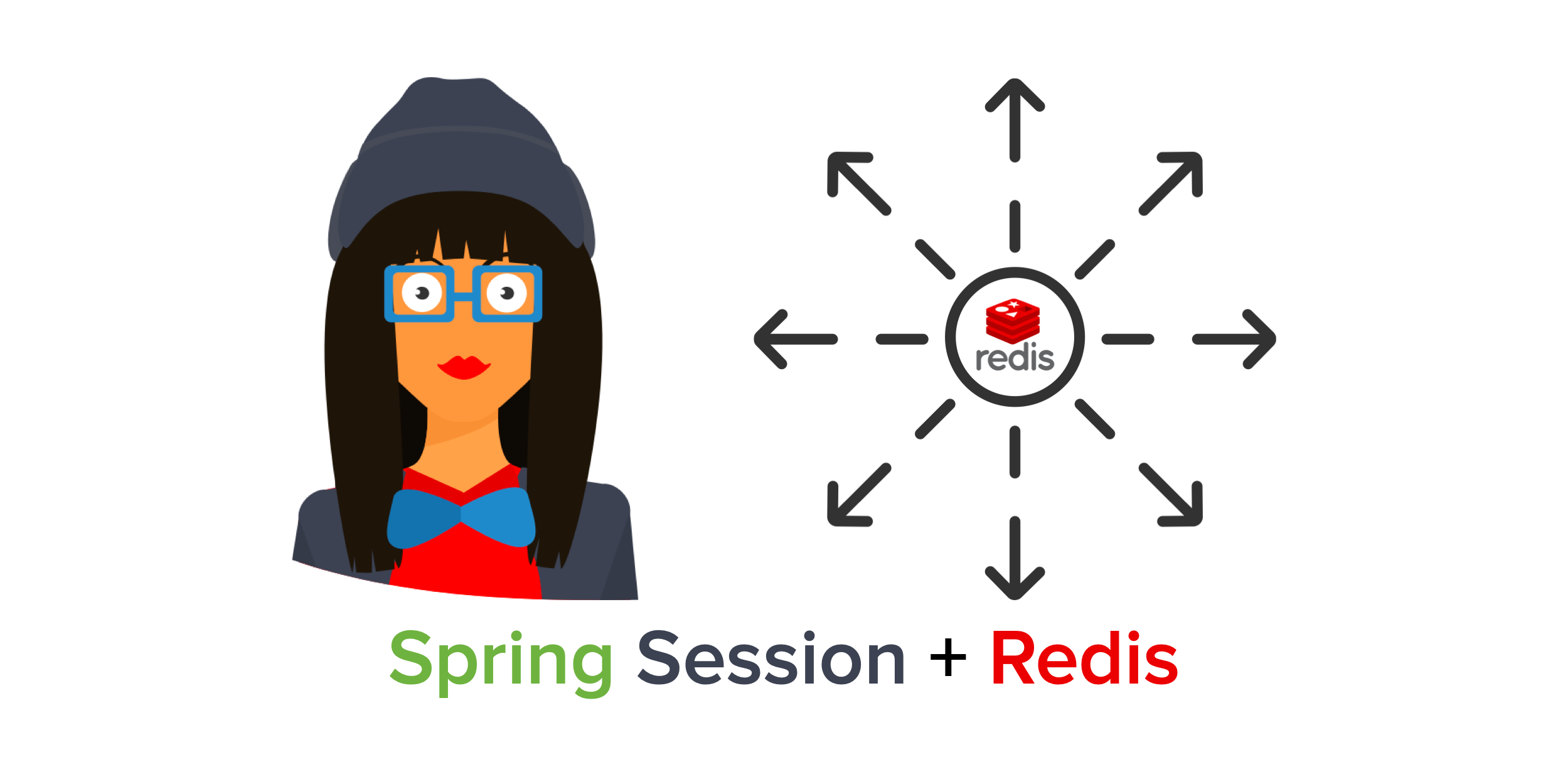
Spring Boot and Spring Security have delighted developers with their APIs for quite some time now. Spring Security has done an excellent job of implementing OAuth and OpenID Connect (OIDC) standards for the last few years. If you’re using Spring Security’s default authorization code flow with OIDC, it’ll establish a session on the server and serve up old fashion session cookies. If you want to scale your services, you’ll need to share session information. This...
Spring Cloud Config for Shared Microservice Configuration
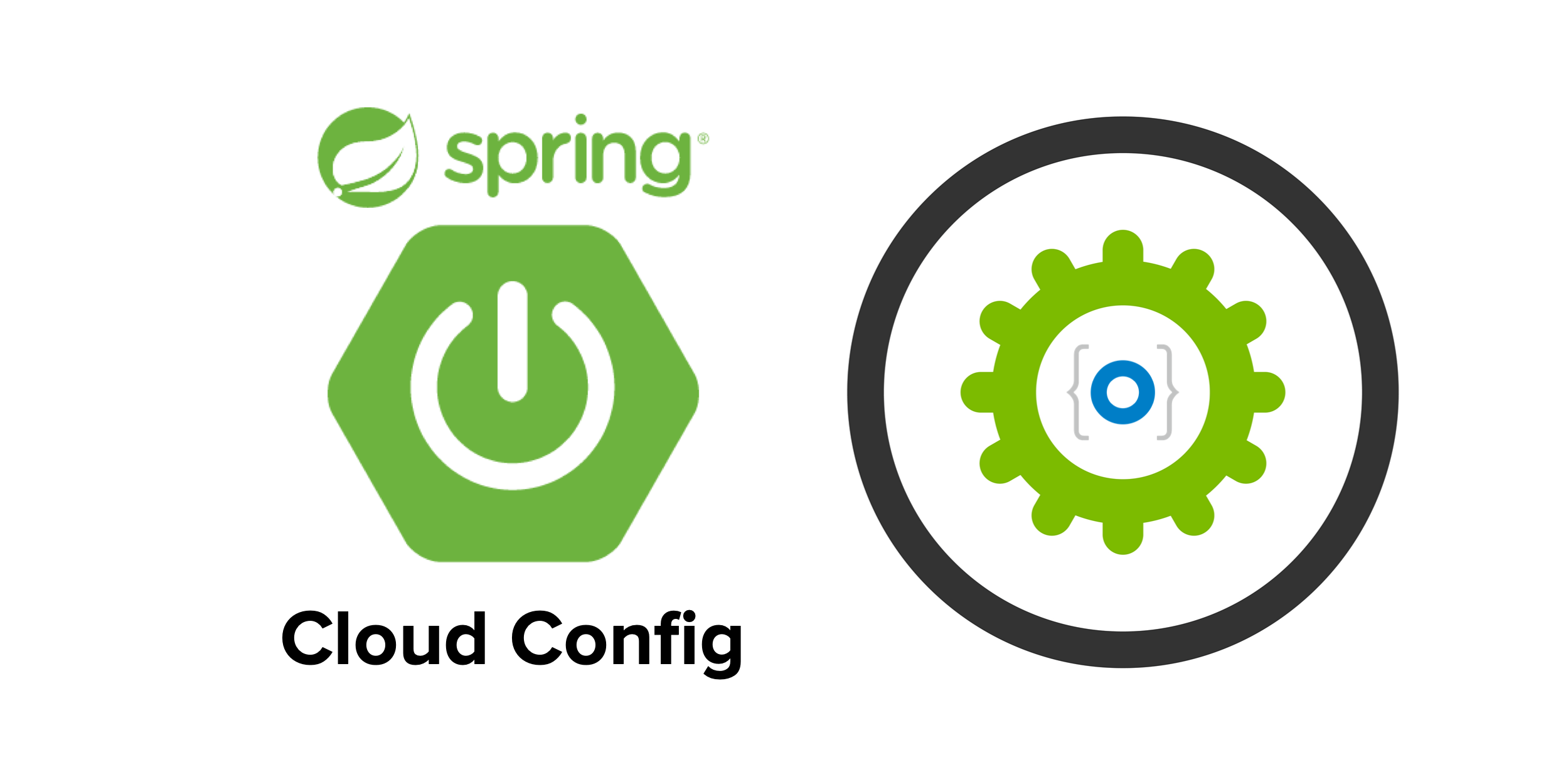
The microservice architecture pattern, in which business functionality is distributed among many small atomic applications as opposed to one or two monolithic chunks, is very powerful and in wide use across large and small tech companies. Each piece has a narrow, well-defined task and communicates with other services via a shared channel (usually REST APIs). The benefits of adopting a microservice architecture include: Easier maintenance and development of applications: developers and teams can focus on...
25 Years of JavaScript and Java! 🎉

The year is 1995… Java is born in May. So is JavaScript (but it’s called Mocha). Microsoft releases Windows 95 in August. JavaScript, as it’s known today, first appeared on this day, December 4th. Wow! It’s so crazy to look back and see so many influential software releases happen in such a short period. Congrats to both JavaScript and Java for doing so well over the last 25 years! Fun fact from the @JavaScriptDaily 👇...
Spring Boot and Okta in 2 Minutes
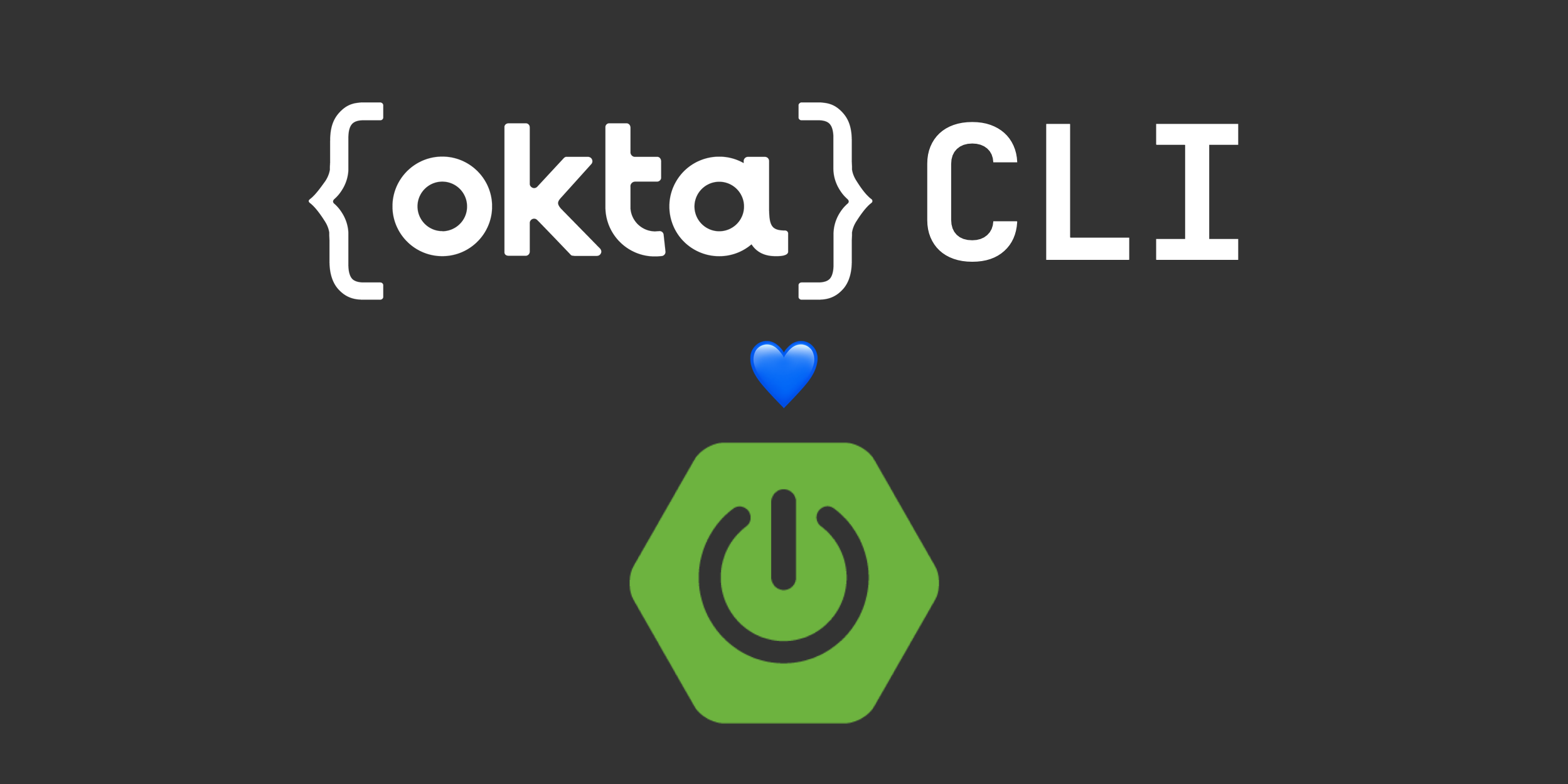
The Okta CLI is a new tool we’ve created here at Okta. It’s designed to streamline the process of creating new Okta accounts, registering apps, and getting started. Wwwhhaaattt, you might say?! That’s right, it’s super awesome! To show you how much fun it is, I created a screencast that shows you how to use it. This video puts your settings in src/main/resources/application.properties. We’ve since changed the default behavior to use spring-dotenv. For those that...
Build a Secure Spring Data JPA Resource Server

In this tutorial, you’re going to use Spring Boot and Spring Data to build a fully functioning web service with ridiculously little effort. You’re also going to use Okta to secure the web service using professional, standards-compliant OIDC JWT authentication. All of this will be bootstrapped by the Okta CLI. Before you get started on the actual application, however, let’s take a look at Spring Data for a moment. Table of Contents What is Spring...
A Quick Guide to Security with Vaadin Fusion and Spring Boot
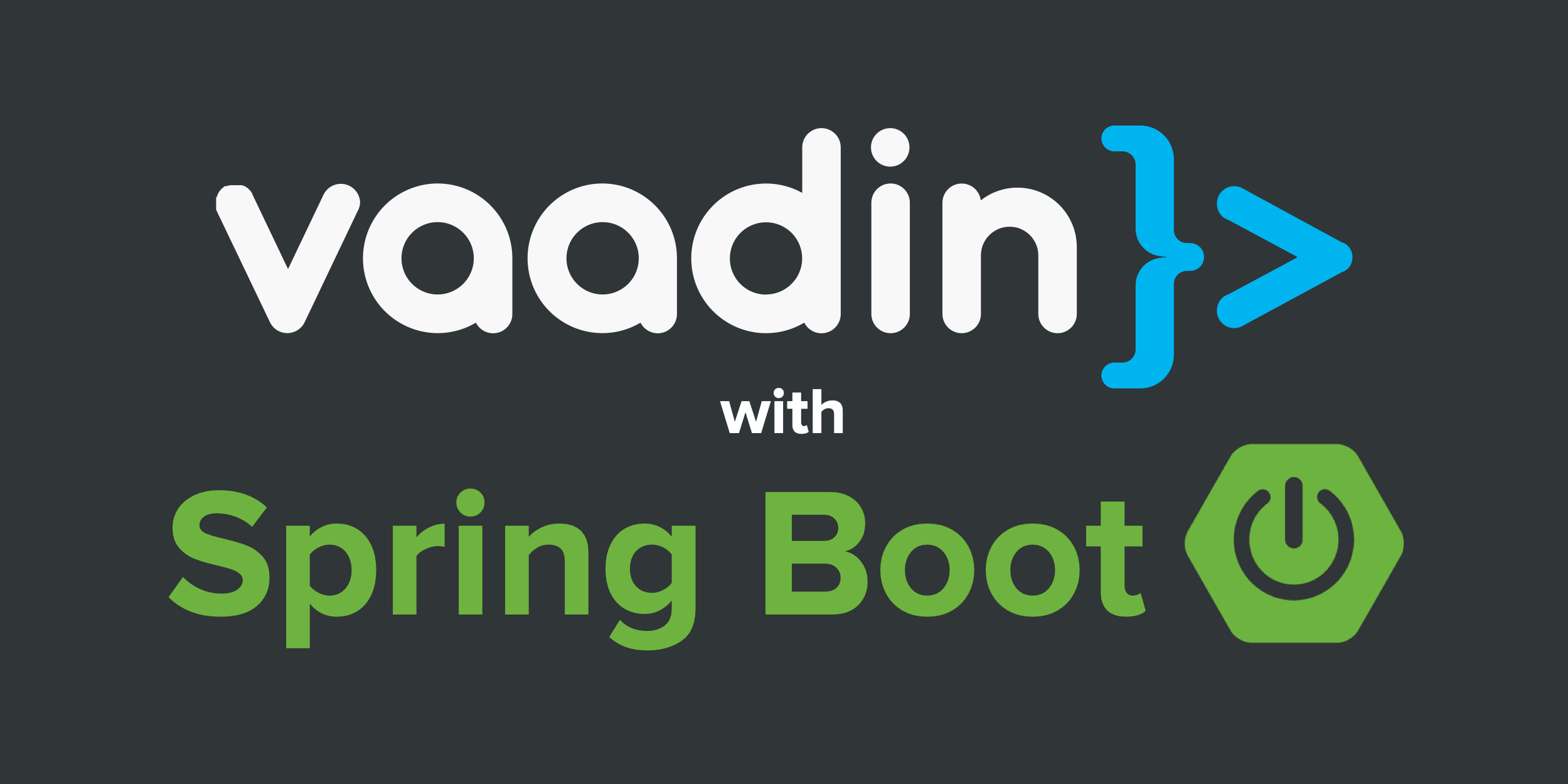
Building a web application involves a lot of moving pieces. You have a backend server handling API calls, a frontend application running business logic, and you need to somehow make sure both are in sync and secure. In this blog post, you’ll learn how to use Vaadin Fusion, Spring Boot, and Okta to create a full-stack web application with authentication. Specifically, you’ll learn how to: Create a Spring Boot-based Vaadin Fusion app Secure server endpoints...
Why I Love IntelliJ IDEA for Java Development
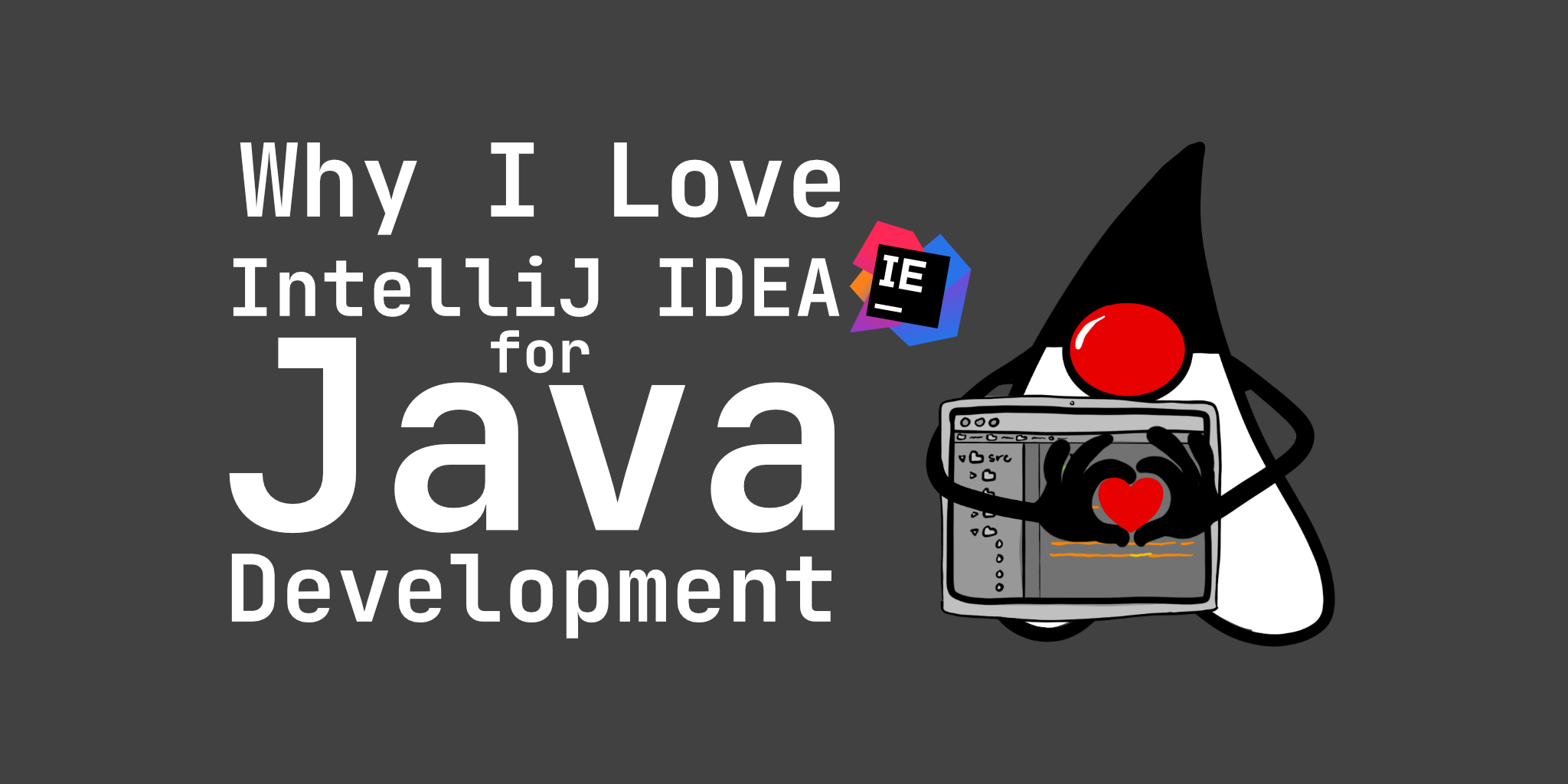
If you’re a Java developer like me, you like to crank out code and get shit done. I like many things about IntelliJ IDEA, but I thought it’d be fun to write about the ones that make me most productive. First, a bit of my development history. When I first started doing Java development in the late 90s, I used HomeSite as my editor. HomeSite was an HTML editor initially developed by Nick Bradbury. I...
Create a Secure Ktor Application with Kotlin
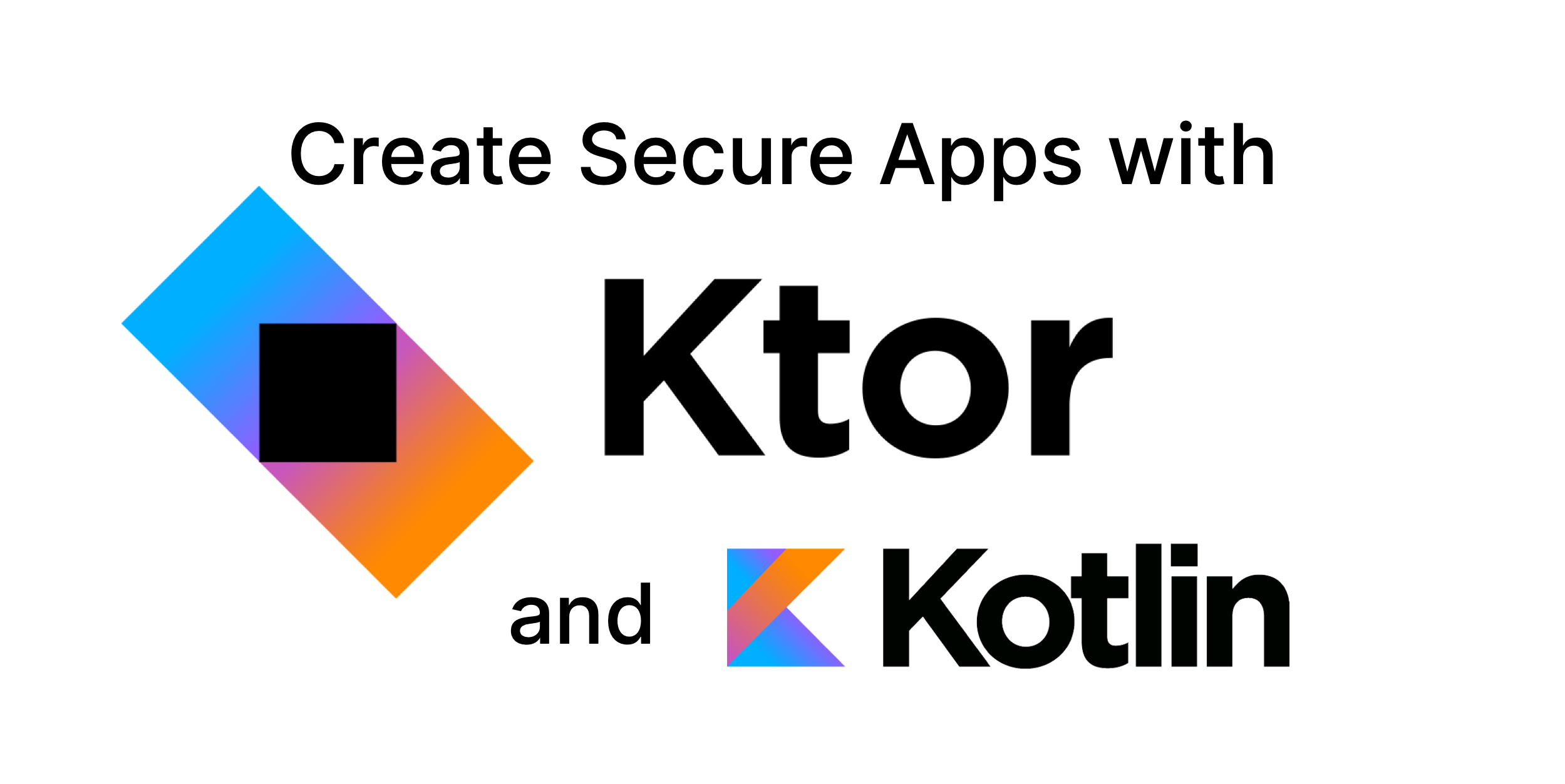
In this tutorial, you will build your very own Nano Blogging Service (nabl for short) using a modern JVM stack. This includes using the Kotlin programming language, the Ktor web framework, and securing it with Okta. Users can log in or sign up, post updates, and browse specific or global chronological feed without advertisements. The blogging service displays posts from the selected user or everyone in the chronological feed. Kotlin is often considered a “better...
Spring Security SAML and Database Authentication

Spring Boot is a ubiquitous and well-supported suite of tools for developing web applications in Java. Database authentication, in which credentials identifying authorized users are stored in a database accessible by the application, is maybe the most common and straightforward method of authenticating users. SAML is a well-supported open standard for handling authentication between identity providers and service providers. Configuring SAML authentication in Spring Security is a common topic, and examples are easy to come...
Test in Production with Spring Security and Feature Flags

Okta is an Identity and Access Management platform. The TL;DR: you offload the responsibility for secure authentication and authorization to Okta so you can focus on the business logic of the app you’re building. Okta and Spring Boot already go together like peanut butter and chocolate. Add in feature flags care of Split, and you can test new capabilities for your app without having to redeploy. That’s testing in production the smart way! And, you...
Easy Session Sharing in Spring Boot with Spring Session and MySQL
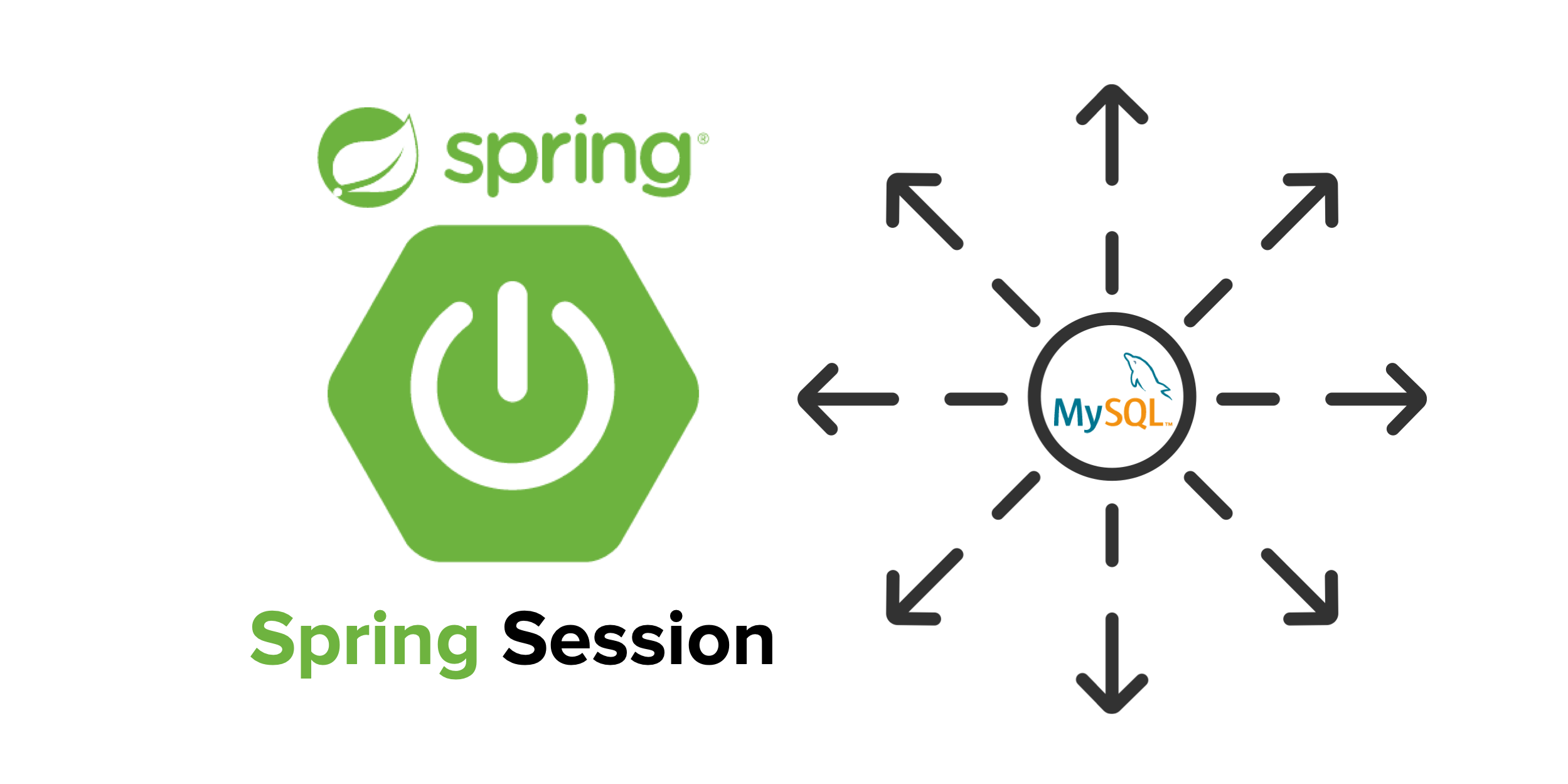
Session management in multi-node applications presents multiple challenges. When the architecture includes a load balancer, client requests might be routed to different servers each time, and the HTTP session might be lost. In this tutorial, I’ll walk you through the configuration of session sharing in a multi-node Spring Boot application. Prerequisites: Java 8+ Docker Docker Compose Table of Contents Session Persistence Session Sharing with Spring Session Learn More about Spring Session and OAuth 2.0 Session...
Deploy a Secure Spring Boot App to Heroku

Developers have cool ideas for pet projects all the time. I often have quite a clear picture of what I want to build and am ready to spend next weekend making the Next Big Thing. The weekend comes finally, and instead of building it, I find myself doing the same repetitive things - deployment, user sign in, registration, deployment, etc. Starting a new project with user registration and a login form is fun! - said...
Build a Secure Micronaut and Angular App with JHipster

Micronaut is a new framework for developing JVM applications, including APIs and microservices. It uses ahead-of-time (AOT) compilation to compute the information that your application needs before runtime, removing the need for reflection. The result is a significant decrease in runtime overhead and startup time, and a substantial increase in application throughput. Micronaut is a direct competitor to Spring Boot from the folks that invented Grails. Its design and runtime efficiency make it ideal for...
OAuth 2.0 Patterns with Spring Cloud Gateway
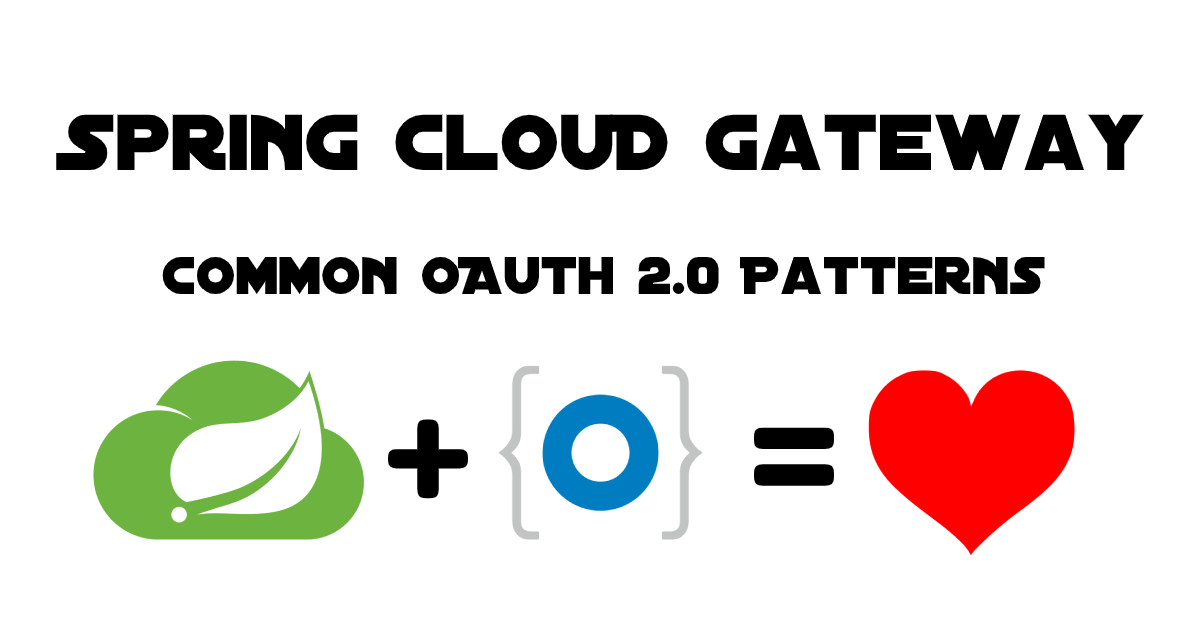
Note: In May 2025, the Okta Integrator Free Plan replaced Okta Developer Edition Accounts, and the Okta CLI was deprecated. We preserved this post for reference, but the instructions no longer work exactly as written. Replace the Okta CLI commands by manually configuring Okta following the instructions in our Developer Documentation. Spring Cloud Gateway is the Reactive API Gateway of the Spring Ecosystem, built on Spring Boot, WebFlux, and Project Reactor. Its job is to...
JWT vs Opaque Access Tokens: Use Both With Spring Boot
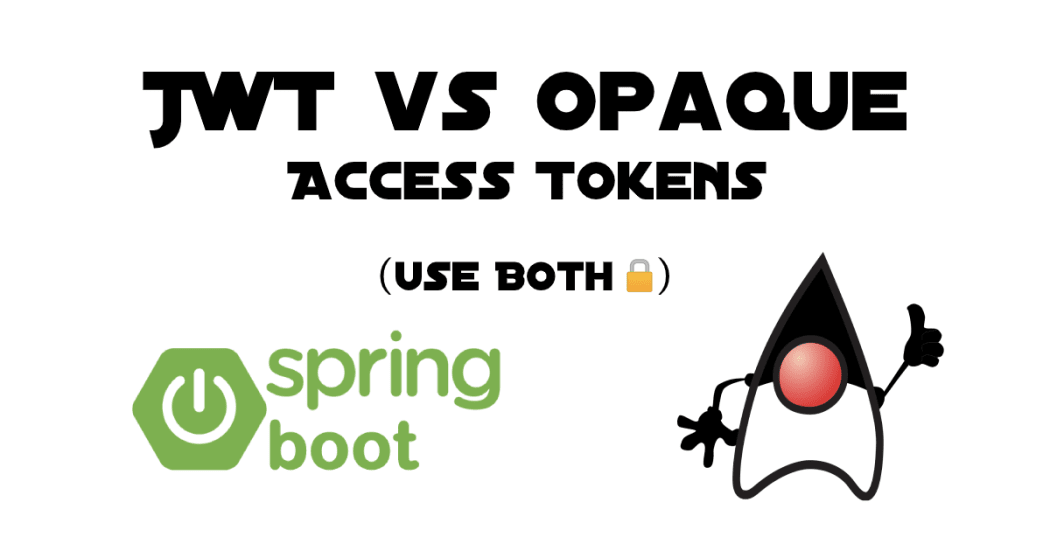
The topic of validating an OAuth 2.0 access tokens comes up frequently on this blog. Often we talk about how to validate JSON Web Token (JWT) based access tokens; however, this is NOT part of the OAuth 2.0 specification. JWTs are so commonly used that Spring Security supported them before adding support for remotely validating tokens (which is part of the OAuth 2.0 specification.) In this post, you will build a simple application that takes...
Arm Up Your Java: Performance Benchmarks
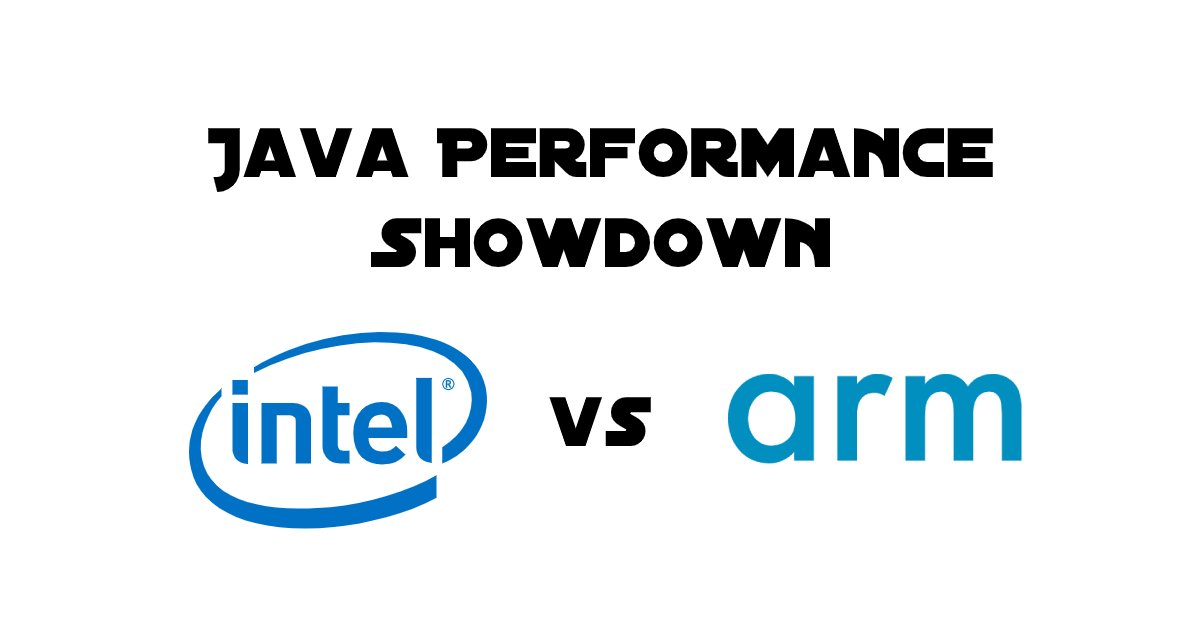
Arm processors have been in the news lately, and it’s causing confusion and worries about processor performance for some folks. After Apple announced its plan to switch to Arm-based processors, I heard people (incorrectly!) speculating the performance would be similar to a Raspberry Pi. Java on Arm is nothing new, but we are seeing increased Arm investment from cloud vendors. Amazon recently updated its Arm offerings, and Microsoft is working on porting the JVM to...
Build a Spring Boot Application Using Java Modules

Java is one of the most mature and persistent development languages that exists. Recently, it shifted to a 6-month release schedule, enabling it to deliver more frequent updates to the language. One of the changes introduced in Java 9 was the modular system. The Java Platform Module System (JPMS) adds two fundamental capabilities when building Java apps: Reliable configuration - replacing the brittle, error-prone class-path mechanism with a means for program components to declare explicit...
Introducing JPaseto: Security Tokens For Java
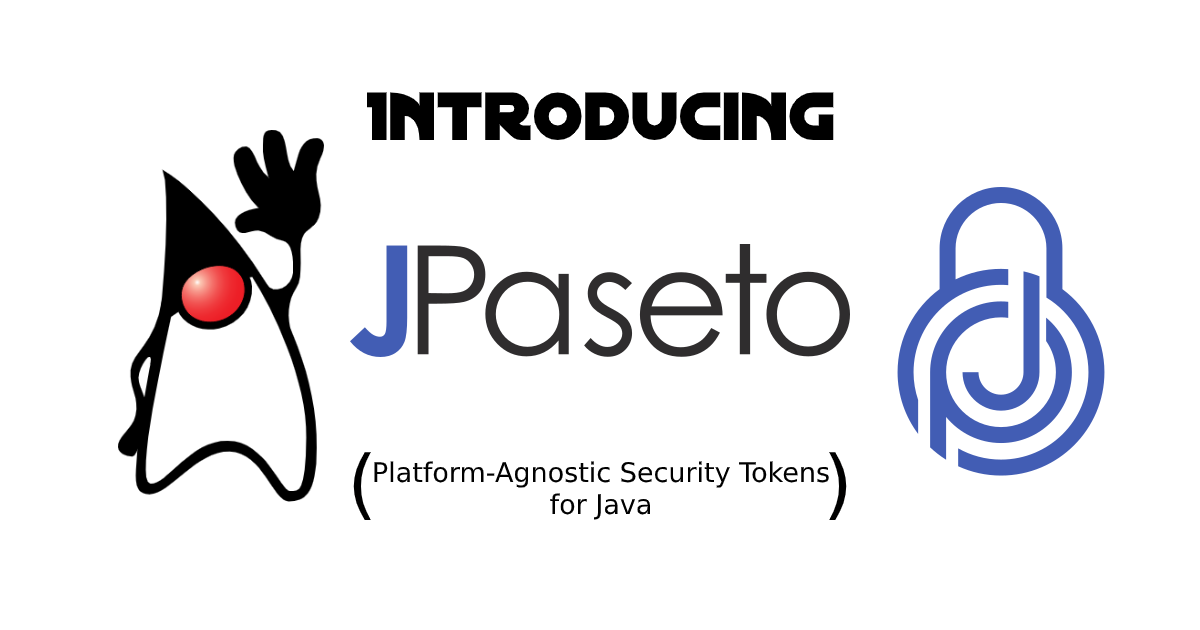
PASETO is a new security token format designed to be easy to use and free from the issues inherent with JSON Web Token (JWT) related specifications. Platform Agnostic SEcurity TOkens (PASETO) is a draft RFC spec created by Scott Arciszewski. PASETO reduces the scope of the JavaScript Object Signing and Encryption (JOSE) family of specs (which JWT is a part of), while still providing the functions that secure applications need. PASETO is everything you love...
Build a CRUD App with Vue.js, Spring Boot, and Kotlin

Much like React or Angular, Vue.js is a JavaScript view library. When coupled with a state management library like MobX, Vue.js becomes a full-featured application framework. Vue.js is designed to be incrementally adoptable, so you can use as much or as little of it as you like. Like React, Vue.js utilizes a virtual DOM to streamline processing so that it renders as little as possible on each state update. In my experience, Vue is far...
Serverless Java with Amazon Web Services

Serverless is the next iteration in cloud management. First, we let go of having physical hardware servers and moved all of our servers into the cloud because, hey, why bother managing all that hardware? This created cloud infrastructure providers that resulted in behemoths like Amazon and Google. Now, they’re saying, why bother managing a server at all? What you really want to do is run code, right? Serverless is an architecture where code is run...
Migrate From Travis CI to GitHub Actions

Recently, a colleague pointed out that I was still configuring Travis-CI on new GitHub repos and suggested I used GitHub Actions instead. I had given Actions the ol' five-minute test when it was still in beta, but ran into a few problems and gave up. After all, I’ve been a fan of Travis-CI for a while and I had enough new things to learn at the time. Still, if GitHub Actions lives up to the...
Build a Secure Java Application with Apache Shiro and OAuth 2.0

Apache Shiro is a Java security framework that can perform authentication, authorization, session management, along with a host of other features for building secure applications. In this tutorial, you will build a simple Java REST application using JAX-RS. JAX-RS, like many Java APIs, is a set of interfaces, and you will need to pick an implementation. For this post, I’ll use Jersey (the reference implementation of JAX-RS), but you can use Apache CXF, RESTeasy, or...
Secure Secrets With Spring Cloud Config and Vault
A Quick Guide to Spring Cloud Stream
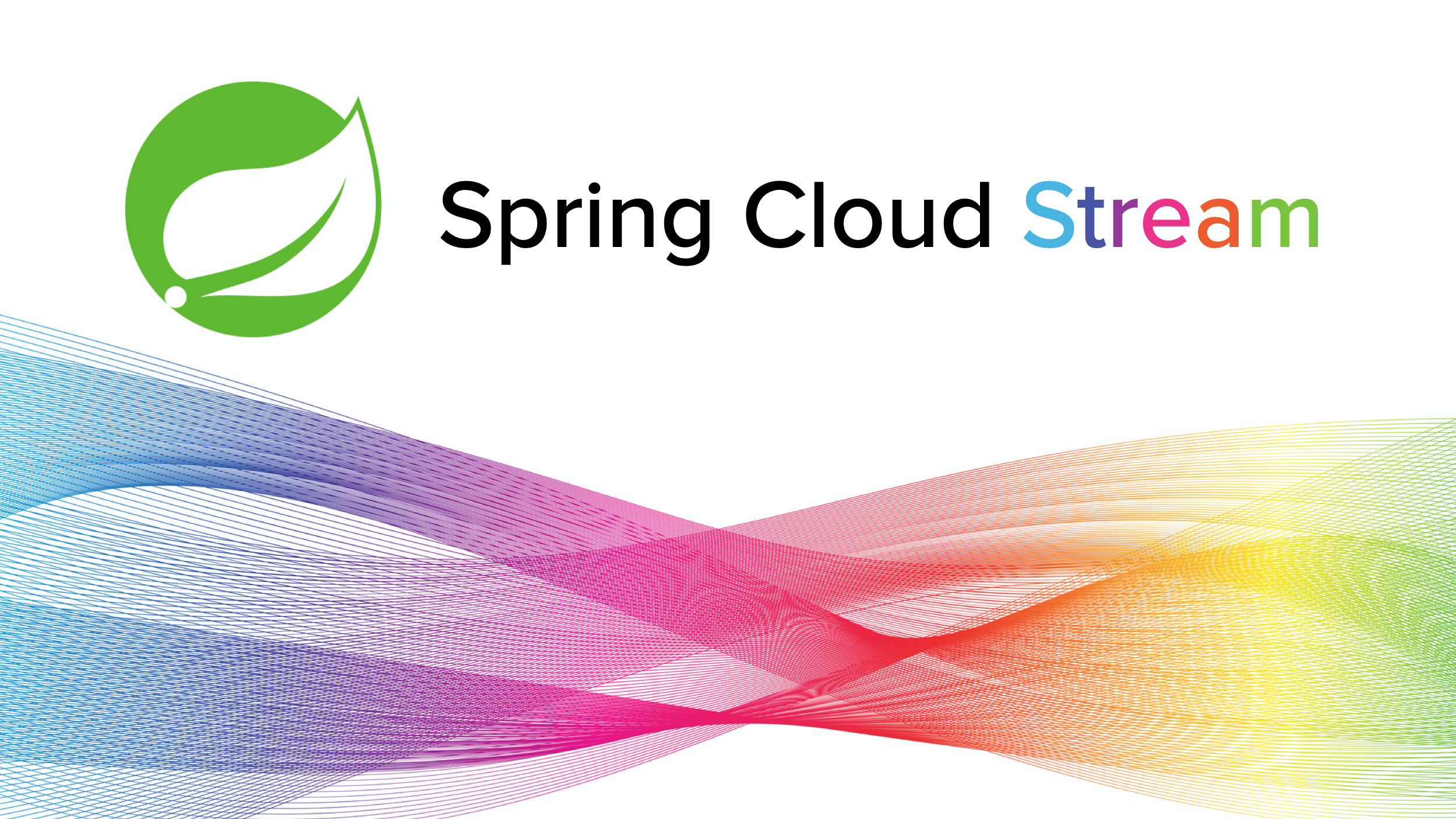
In this tutorial, you’ll learn how to create a Spring Cloud Stream application that interacts with a messaging service, such as RabbitMQ or Apache Kafka. You’re going to do this using functional, reactive code by utilizing Spring’s WebFlux and by taking advantage of Spring Cloud Stream’s functional binding model. You’ll create an application that contains a publisher, a processor, and a consumer. The app will use two topics to publish a stream of integers, process...
Secure Kafka Streams with Quarkus and Java
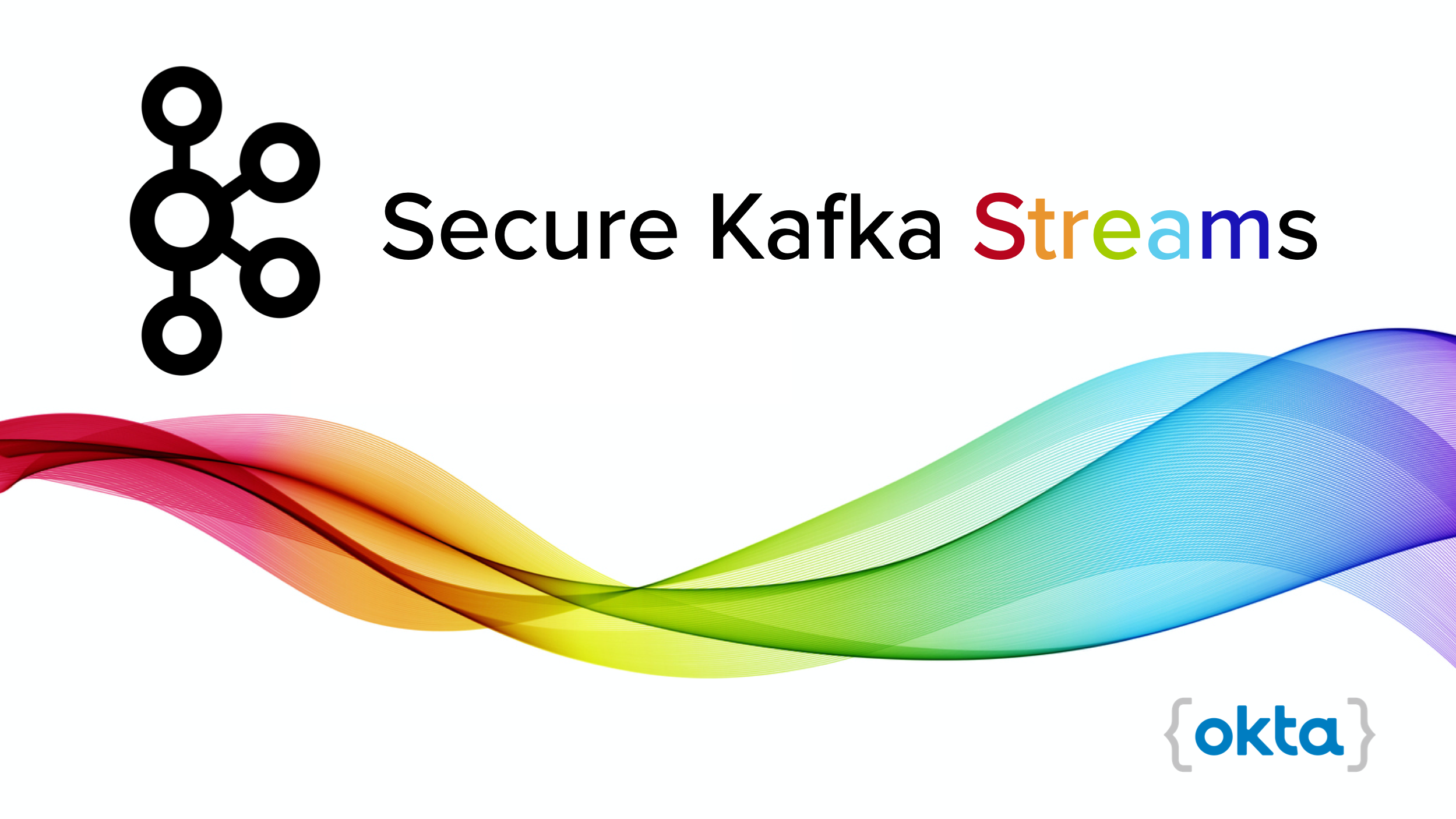
In this tutorial, you’re going to use Apache Kafka and Quarkus to create a secure, scalable web application. The application will use Kafka Streams and a small Kafka cluster to consume data from a server and push it to a client application as a real-time stream. You will secure the entire application. You will secure the Kafka cluster with SSL and SASL/JAAS password protection. Finally, you’ll secure the Quarkus client application using OAuth 2.0 &...
OpenID Connect Logout Options with Spring Boot

On the Okta blog, we spend much of our time talking about logging in. That is because once you configure your application to log in, the log out just works. But there are a few things you should consider when you’re thinking about your app’s logout configuration. In this post, I’ll walk through examples of the two logout options you have with Spring Security: the "default" session clearing logout, and relying party initiated logout. If...
Continuous Integration with Jenkins and Java

Continuous Integration (CI) is a popular development practice that helps to ensure software is high-quality and deployable, as you validate (compile and test) the software as soon as you check in changes to the Source Control Management System (SCM). You must have some key elements in place to adopt CI: A SCM system like Git, and a shared repository A CI server like Jenkins Automated tests Teamwork CI practices that allow you to keep build...
Stop Writing Server-Based Web Apps

The World-Wide Web, as we know it, started around 1993 by serving static HTML files with links to other HTML files. It didn’t take long for developers to find ways of making websites more “dynamic” using technologies like Common Gateway Interface (CGI), Perl, and Python. Since the ’90s, I have built web applications using a variety of languages, platforms, and frameworks. I’ve written application frameworks, content management systems, a blog engine, and a social media...
Create and Verify PASETO Tokens in Java
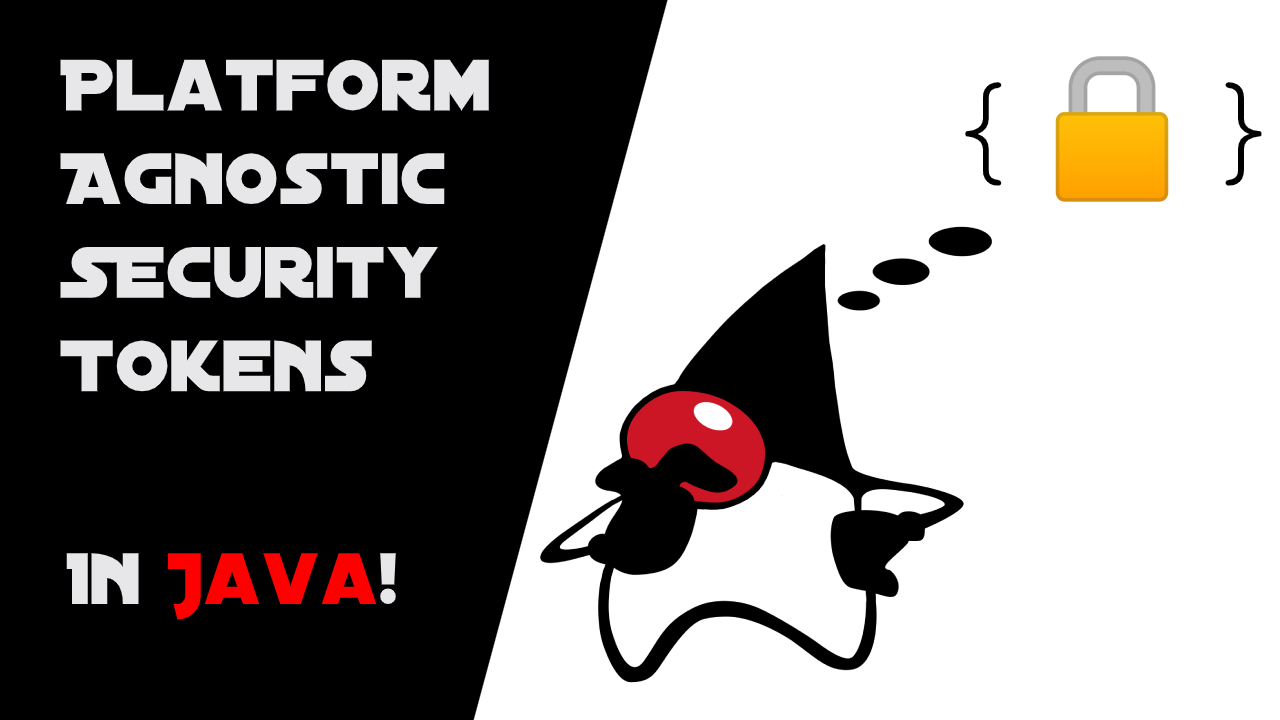
PASETO is the latest trend in security token formats. Its primary goal is to reduce the problems the JSON Web Token (JWT) related specifications introduce. In this post, I’ll give you a brief introduction to PASETO tokens and then jump into an example that creates and parses tokens using in Java using JPaseto. If you’d rather watch a video, I created a screencast too! What is PASETO? PASETO stands for Platform-Agnostic SEcurity TOkens. The PASETO...
How to GraphQL in Java
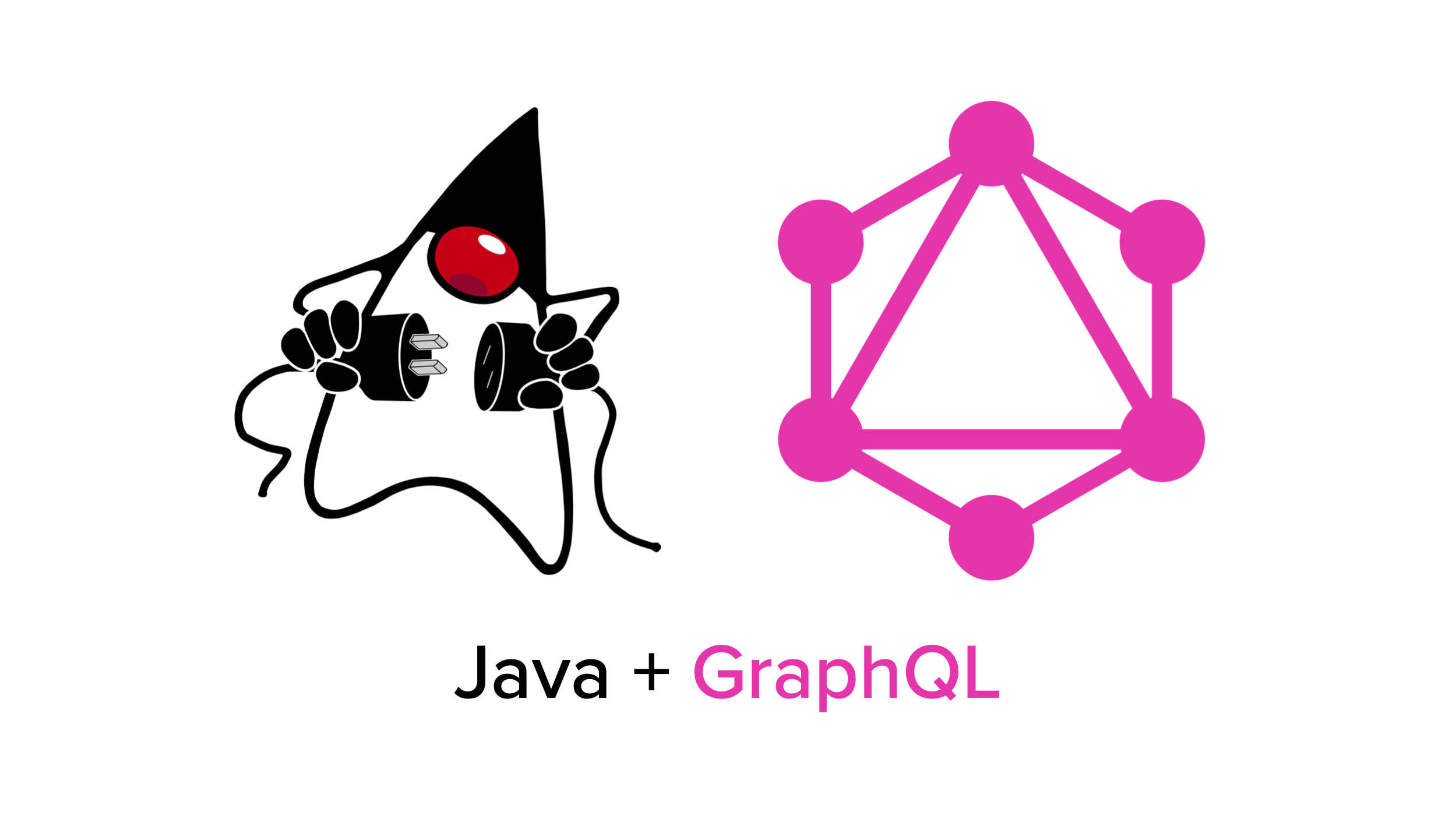
REST APIs are hard to design so they serve multiple clients well. As each client has their own needs in terms of data searching, filtering and which fields they want, a traditional REST API will provide a single version of an entity and the client has the responsibility of navigating through multiple endpoints and correlate the data on their side to build the data they want. GraphQL was developed by Facebook to overcome the shortcomings...
Build Single Sign-on in Java
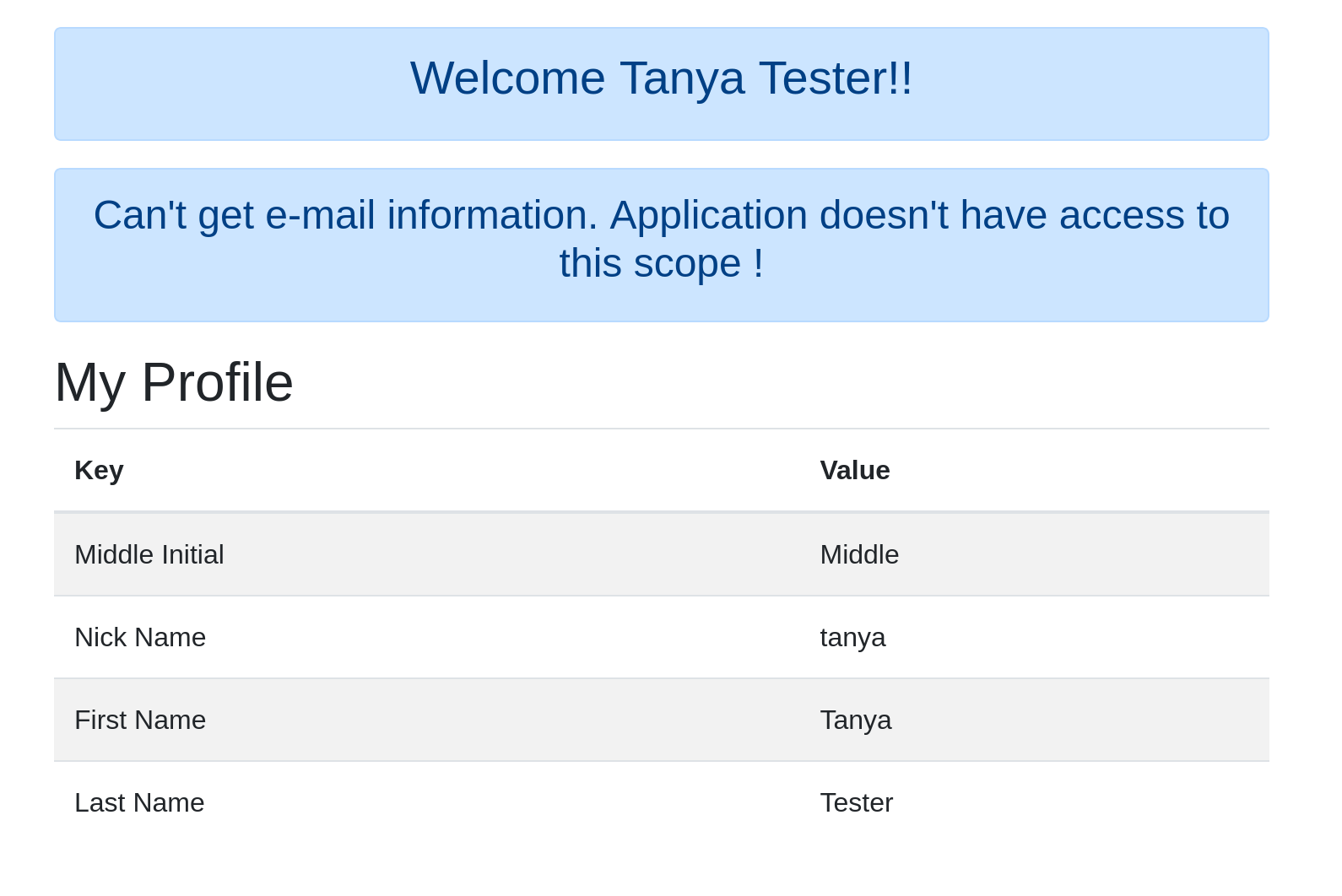
In modern app development, you quite frequently have a single resource server that provides data to multiple client applications. These applications may share a similar set of users, but need to enforce different permissions. For example, it’s possible that not all users of the first application should be allowed to access the second (think of, for example, an admin console application versus a client or user application). How would you implement this? One way to...
Use PKCE with OAuth 2.0 and Spring Boot for Better Security

Browser and mobile feature enhancements move fast. Often times, these technologies move faster than security standards designed to protect them can keep up. OAuth 2.0 offers the best and most mature standard for modern applications. However, there hasn’t been an official release of this standard since 2012. Eight years is a very long time in Internet technology years! That doesn’t mean that its contributors have been sitting idly by. There is active work on the...
Communicate Between Microservices with Apache Kafka
Java REST API Showdown: Which is the Best Framework on the Market?

Developing services in Java, including REST APIs, wasn’t always easy or productive until Spring came along and changed the landscape. Many years have passed since then, and new frameworks have emerged in the community. One of these frameworks was Micronaut. It’s developed by OCI, the same company behind Grails, and their goal is to help developers create microservices and serverless applications. There is also Quarkus, another framework that gained popularity over the last year. Developed...
Secure Legacy Apps with Spring Cloud Gateway

One of the biggest challenges of adding OAuth 2.0 support to legacy applications is a lack of support in the underlying framework. Maybe it’s homegrown, or maybe it’s just old? Either way, migrating away from an old form-based login doesn’t need to be so painful. In this post, I’ll walk you through a low-code option using Spring Cloud Gateway and Okta. You’ll learn how to setup Spring Cloud Gateway running as a stand-alone application that...
Build a Secure REST Application Using Jersey

REST is one of the most used architectural styles when it comes to developing web services. In Java, we have the JAX-RS specification that defines how to create a RESTful application. To show the power of the spec, Jersey, the reference implementation of JAX-RS was created. Building JAX-RS endpoints only requires adding annotations to your code. Keep reading to see how easy it is! In this tutorial you’ll create a TODO list service that will...
Build a CRUD API with Java and MongoDB
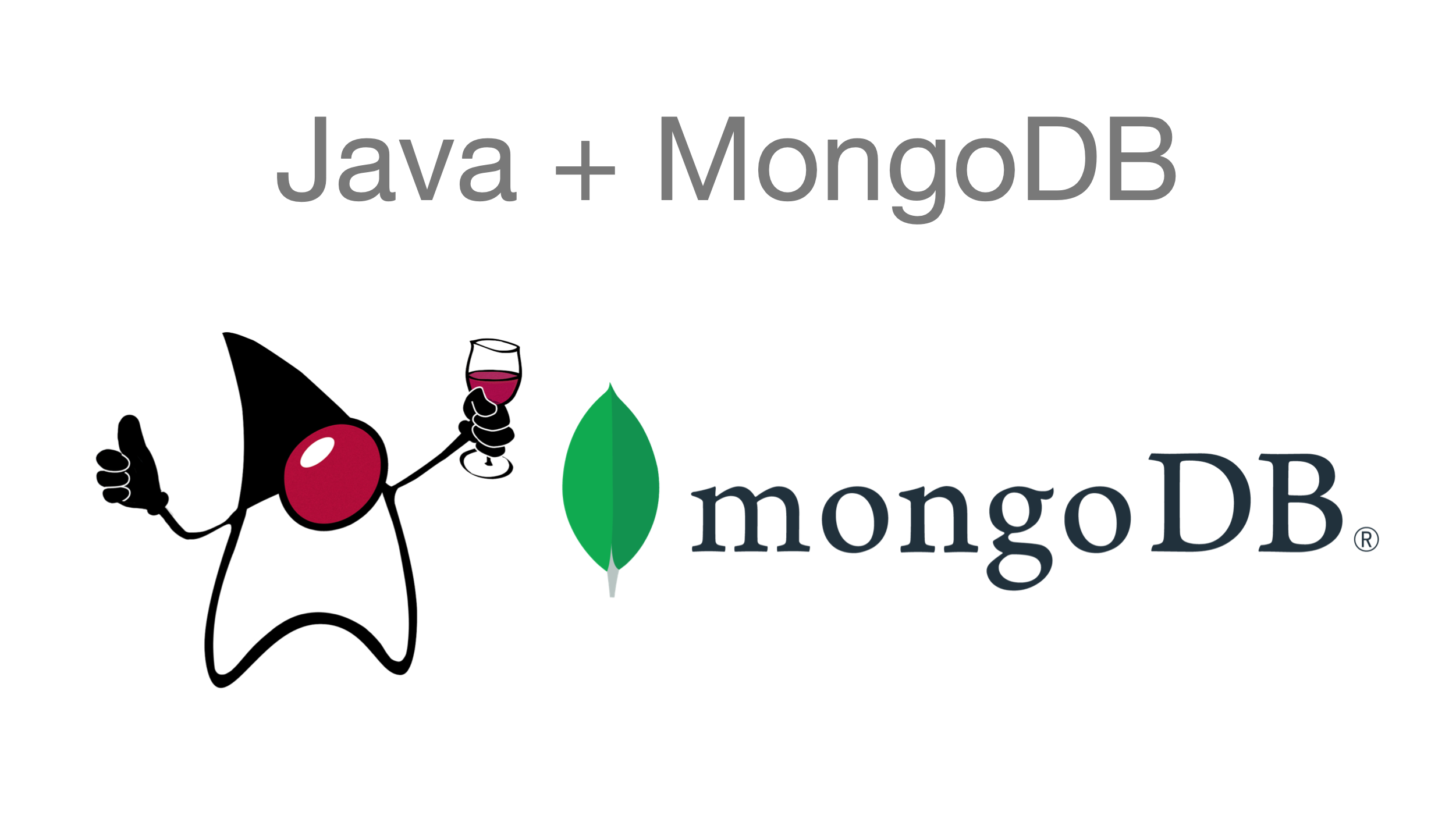
This tutorial leverages two technologies that are commonly used to build web services: MongoDB and Java (we’ll actually use Spring Boot). MongoDB is a NoSQL database, which is a generic term for any non-relational databases and differentiates them from relational databases. Relational databases, such as SQL, MySQL, Postgres, etc…, store data in large tables with well-defined structures. These structures are strong and tight and not easily changed or customized on a per-record basis (this structure...
Five Tools to Improve Your Java Code

Writing quality code takes practice. To write better code, you need to know what should improve. Code quality and what makes code easy to read are very subjective; ask five different developers, you will get six different answers. For this post, I’ll avoid most of the subjective and focus on ways to detect real issues and potential bugs. I wrote some intentionally bad code to demo these tools (which was harder than you might think)....
Kotlin: A Beginner's Guide and Tutorial

Kotlin is a modern, statically typed language within the JVM. Kotlin is a cross-platform, multi-purpose, free and open-source language developed by JetBrains under the Apache 2.0 license and has constructs for both Object Oriented and Functional programming styles, which can be mixed. It can be used for web development, server and client, and mobile development, using most Java IDEs. Kotlin is an awesome option for Java developers because it is concise, expressive, and safe. According...
Deploy Your Spring Boot App the Right Way

Spring Boot is an awesome solution to speed up the development cycle of your app. Have an idea and want to transform it into a Spring Boot app, but don’t know the best way to deploy it? Look no further, we will help you out! There are plenty of options to deploy Spring Boot applications. In this article. we will cover three of them: Azure Amazon Web Services Self-hosted We will use a simple application...
Watch GraalVM Turn Your Java Into Binaries

There has been much buzz about GraalVM and what it means for the Java world. GraalVM is a Java distribution from Oracle that adds a bunch of features, most notably a new JIT compiler, polyglot capabilities, an LLVM runtime… and the ability to turn your Java application into a native binary. This last one offers the potential to distribute Java applications as a single binary, and a few frameworks like Quarkus, Helidon, and Micronaut already...
A Quick Guide to Java on Netty

Netty is a non-blocking input/output (NIO) framework that makes it relatively simple to develop low-level network servers and clients. Netty provides an incredible amount of power for developers who need to work down on the socket level, for example when developing custom communication protocols between clients and servers. It supports SSL/TLS, has both blocking and non-blocking unified APIs, and a flexible threading model. It’s also fast and performant. Netty’s asynchronous, non-blocking I/O model is designed...
Kafka with Java: Build a Secure, Scalable Messaging App

Today’s users expect your app to be accessible from their computer, mobile phone, tablet, or any other device! This transition to Software as a Service (SaaS) as the norm requires developers to effectively integrate with robust tools that scale to handle thousands (or even millions) of requests every second. Apache Kafka is one of the most effective tools for handling those high throughput environments. In this tutorial, you’ll learn the basic concepts behind Apache Kafka...
Get Started with Jetty, Java, and OAuth
OAuth 2.0 Java Guide: Secure Your App in 5 Minutes
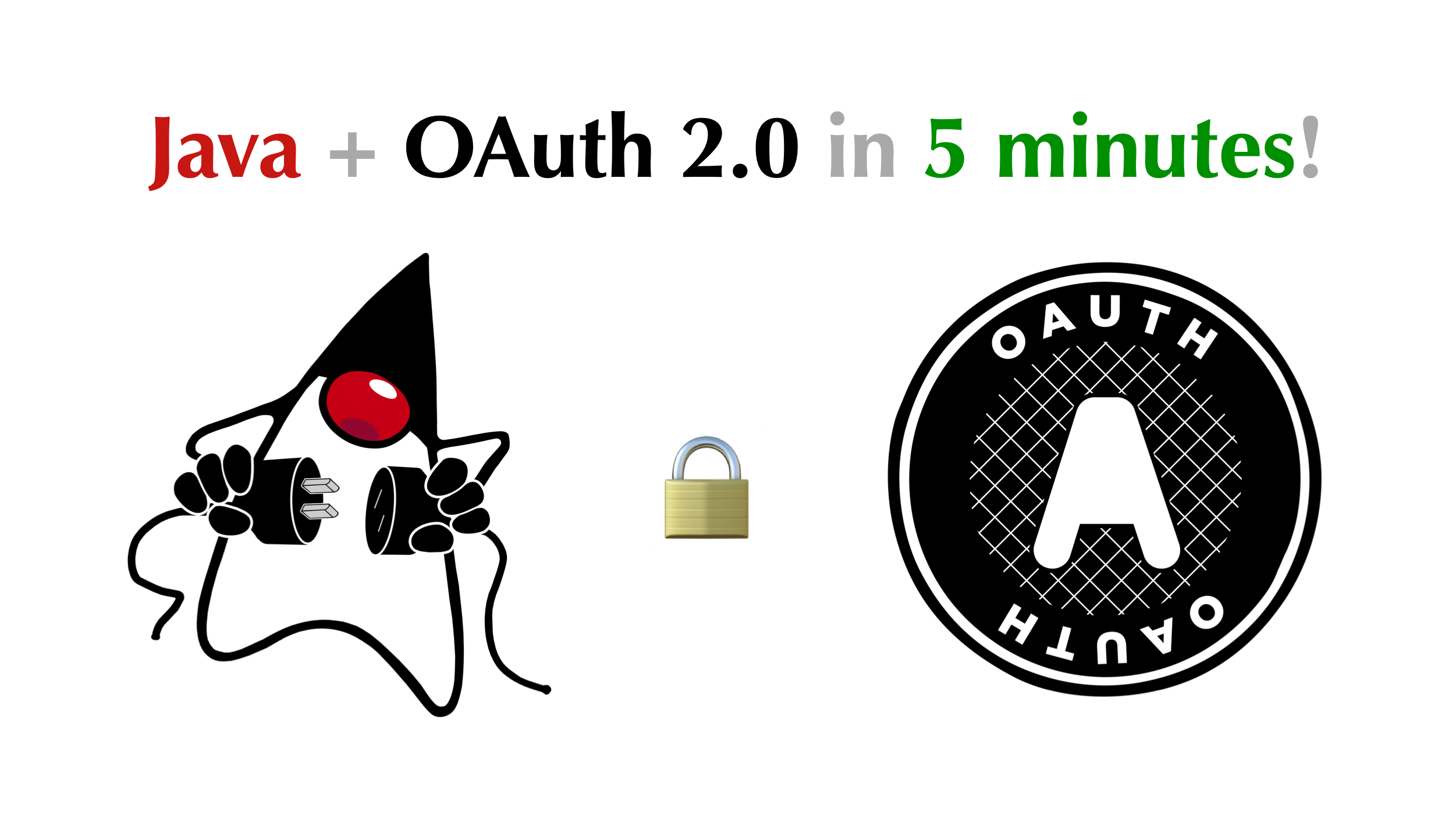
Modern applications rely on user authentication, but it can present Java developers with a difficult challenge, as well as a range of framework-specific options to choose from. We have seen many Spring developers start with a simple, home-grown authentication service they plan to replace “later” with a more robust option… only for that homegrown service to bikeshed its way to a permanent place in the stack. To end this cycle of heartbreak, this post will...
Tutorial: Develop Apps with Secure WebSockets in Java

WebSockets is a modern transport layer technology that establishes a two-way communication channel between a client and a server, perfect for low-latency, high-frequency interactions. WebSockets tend to be used in collaborative, real-time or event-driven applications, where traditional client-server request-response architecture or long polling would not satisfy requirements. Use cases include stock trading and shared dashboard applications. In this tutorial, I’ll give you a quick overview of the WebSockets protocol and how it handles messages with...
How to Develop a Quarkus App with Java and OIDC Authentication

Quarkus is a container-first Kubernetes Java framework designed to have a super-fast start-up time and low memory usage. The container-first strategy emphasizes packaging the runtime environment along with the application code, allowing both to be tightly optimized and avoiding the endless updates and configuration problems that can come along with monolithic server systems. Quarkus was built from the beginning to support compilation to native code for use with Graal/SubstrateVM but also supports the good old...
Build a Simple CRUD App with Java and JSF

JavaServer Faces (JSF) is a Java framework for building Web applications, centered on components as the building blocks for the user interface. JSF benefits from a rich ecosystem of tools and vendors, as well as out of the box components and libraries that add even more power. Why use JSF instead of JavaServer Pages (JSP)? There are two primary reasons: First, JSF has more templating capabilities, since it doesn’t write your view directly as it...
How to Build a Maven Plugin
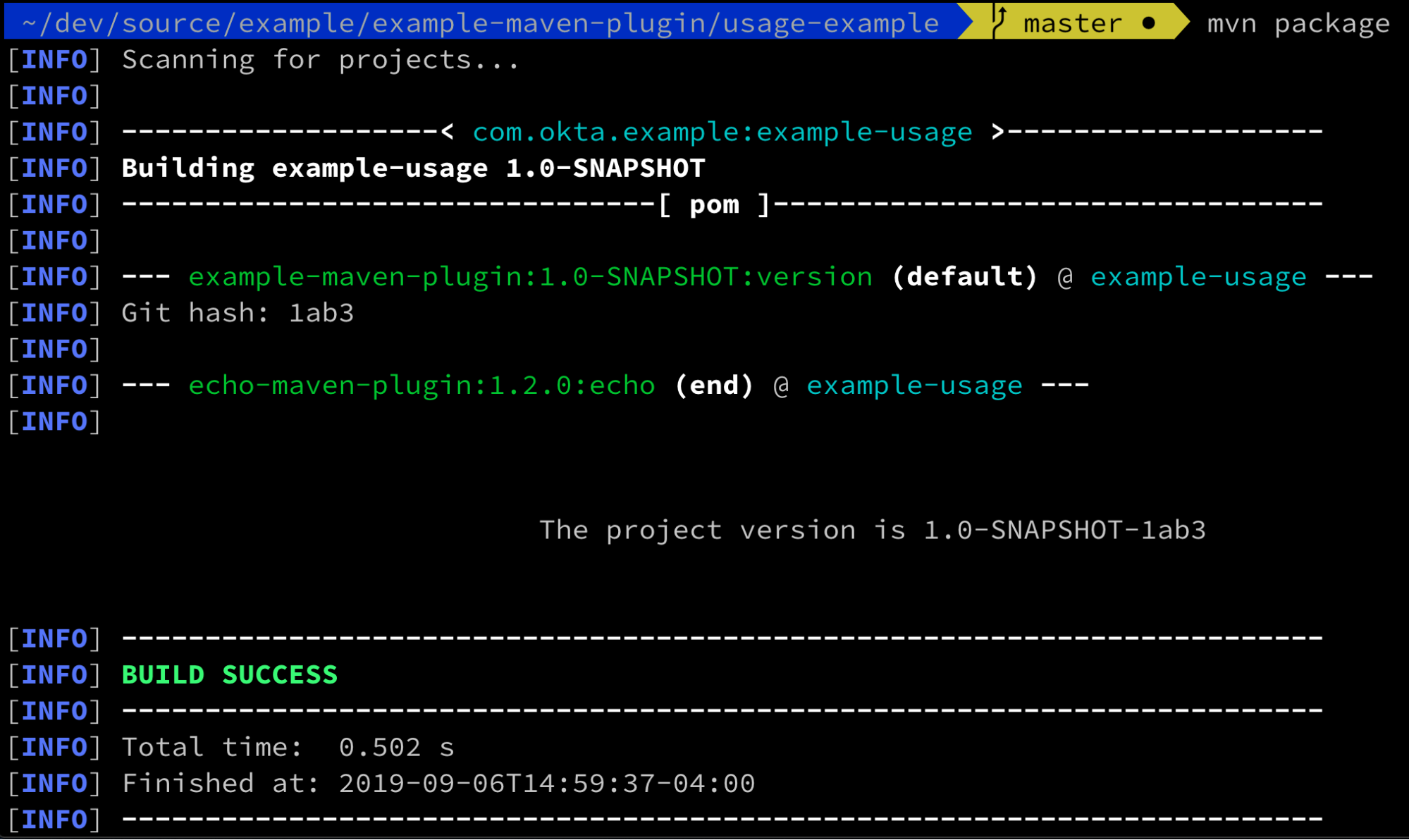
Apache Maven is still the most popular build tool in the Java space, thanks to the popularity of its ecosystem of plugins. It’s easy to find an existing plugin to do almost anything your application needs, from ensuring your source files have license headers, to validating binary compatibility between versions. Occasionally though, you need to write a custom plugin to fulfill a requirement in your product. In this tutorial, I’m going to show you how...
Build an Application with Spring Boot and Kotlin

In 2011, JetBrains, the company behind IntelliJ, decided to create a modern language that would run inside the Java Virtual Machine and address common concerns with Java at the time like its verbosity. This project became Kotlin, a quickly growing and popular language. Google then announced official support for Kotlin on Android, further accelerating its adoption. Many companies started to replace Java with Kotlin as their main language to take advantage of the new features...
Get Groovy with Gradle

In the Java world, there are two main build systems: Gradle and Maven. A build system chiefly manages potentially complex webs of dependencies and compiles the project. It also packages the compiled project along with all the resources and meta files into the final .war or .jar file. For simple builds, the choice between Maven and Gradle is pretty much one of personal taste, or perhaps the taste of your CTO or technical manager. They...
Secure Reactive Microservices with Spring Cloud Gateway
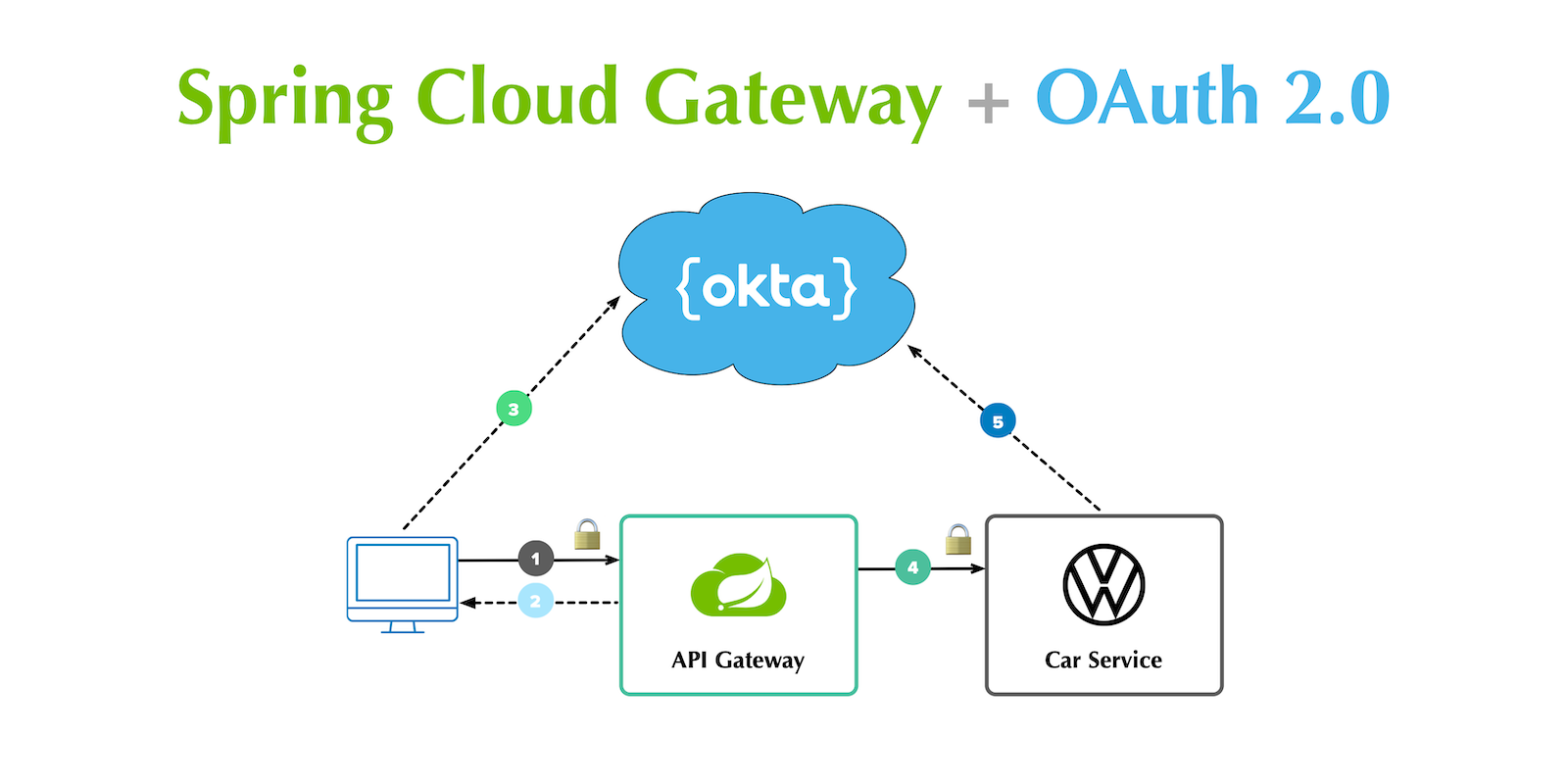
So you wanna go full reactive, eh? Great! Reactive programming is an increasingly popular way to make your applications more efficient. Instead of making a call to a resource and waiting on a response, reactive applications asynchronously receive a response. This allows them to free up processing power, only perform processing when necessary, and scale more effectively than other systems. The Java ecosystem has its fair share of reactive frameworks, including Play Framework, Ratpack, Vert.x,...
Implement the OAuth 2.0 Authorization Code with PKCE Flow

Imagine two levers that are inversely connected. That is, as one goes up, the other goes down. One lever is User Experience and the other is Security. It’s not a perfect analogy, but most developers can attest that as user experience goes up, security goes down. Take browser history syncing for example. I can start a session with my bank on Firefox mobile and pick up right where I left off on Firefox desktop. From...
Make Java Tests Groovy With Hamcrest

My favorite way to test Java code is with Groovy. Specifically, writing tests in Groovy with Hamcrest. In this post, I’ll walk through how to test a simple Spring Boot application with these tools. Groovy is an optionally typed dynamic language for the JVM, and can be compiled statically. That is a mouthful and I’ll explain this as we go, but for now think of Groovy as Java with lots of sugar. Groovy is a...
Welcome, Brian Demers

I’m excited to announce that I’ve joined Okta’s Developer Relations team! I’ve been working on Okta’s awesome Developer Experience team for the last couple years so I’m not exactly a new face around here. 😉 Who is Brian? As a young kid, I took things apart. Either to see how they worked or just see what was inside. This habit was made worse when I found computers and started fixing them. Anyone else miss the...
Tutorial: How to Build a JavaFX Desktop App with OIDC Authentication

JavaFX, a library of user interaction controls, allows Java developers to build cross-platform desktop applications and internet application. It was intended as a replacement for Swing (if you’re old like me and remember that). Implementing an authorization flow with OAuth 2.0 can be tricky with a desktop framework like JavaFX. Typically, OAuth flows require a browser and redirecting to specific URLs. Detecting a redirect in JavaFX’s default browser is impossible. The default Java browser (java.awt.Desktop.browse(URI))...
Get Jibby With Java, Docker, and Spring Boot

Docker is a very popular system for containerizing applications. Containerization packages the executable code along with the runtime environment in deployable virtual images using a repeatable, automatable process. In the world of cloud-based development and microservices, where a single application can be spread across hundreds of servers in various networks with complex port configurations, the ability to automate the deployment of “units” of code is super helpful. The ability to control the execution environment also...
Servlet Authentication with Java

It can be very satisfying to build an application “the hard way”, using few conveniences. This approach helps you understand core development principles and the inner workings of everyday abstractions. That’s why today, you’ll build an application from the ground up using Java Servlets with a login form. There are more modern, technologically savvy ways to handle authentication within your application, namely OAuth 2.0 and OIDC, which I will touch upon later. However, this post...
10 Myths About Java in 2019

Java turned 24 years old on May 23, 2019. That’s pretty old for a programming language. The fact that it’s still widely used and runs many of the world’s largest organizations is nothing short of incredible. But it has a unique impression problem among languages in that it means two very distinct things: Java the language and Java the runtime. Many developers, of course, think Java is old and therefore shouldn’t be used. And yet...
Build a REST API Using Java, MicroProfile, and JWT Authentication
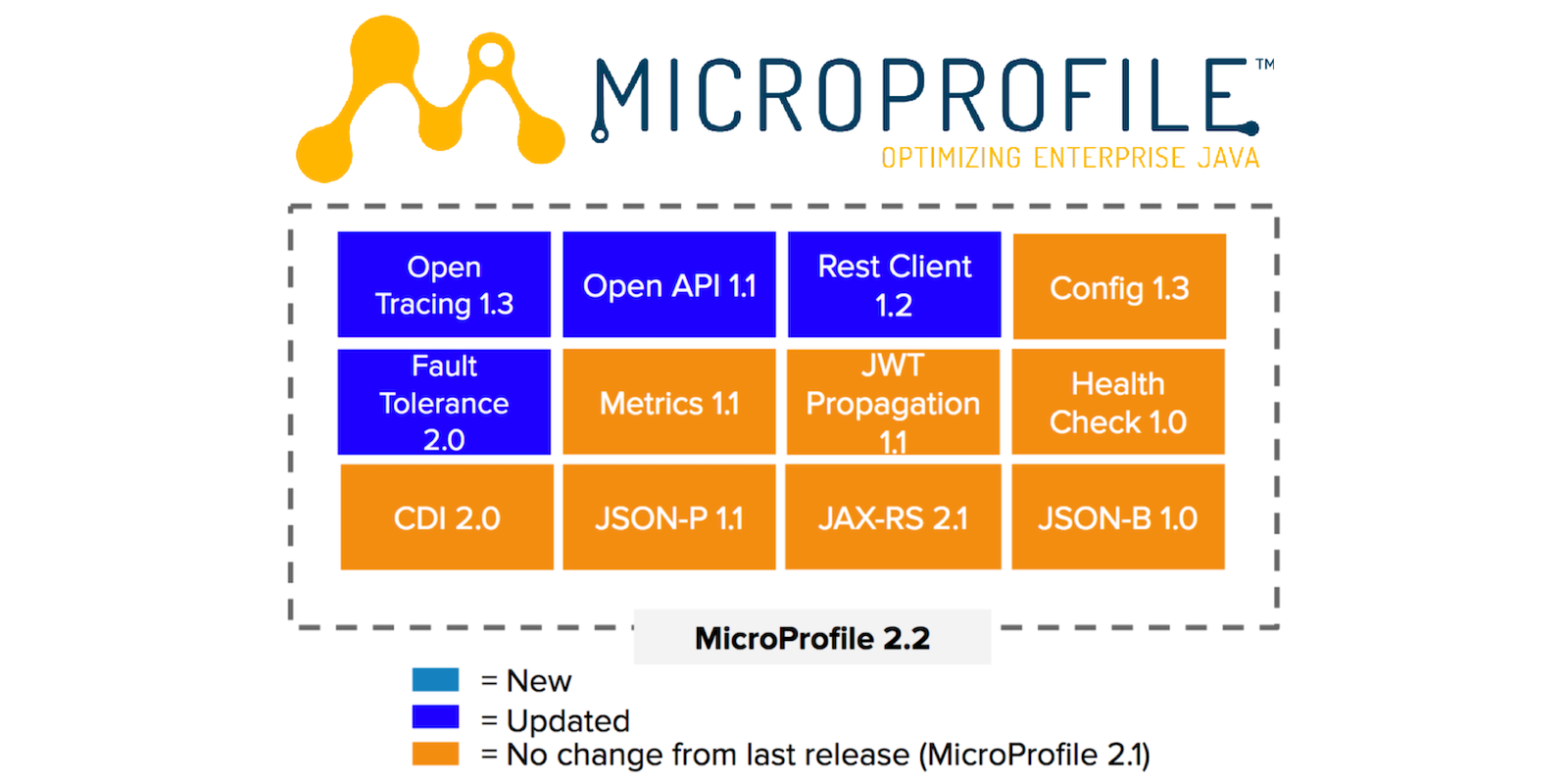
In this post, you will learn how to build a simple REST API using Eclipse MicroProfile and secure it using JSON Web Token (JWT) authentication. You’ll also use a free developer account from Okta to configure an OAuth 2.0 / OpenID Connect (OIDC) application as the OAuth provider, with role-based authorization. That was a lot of jargon. Let’s define a few of the terms (and introduce a few more!). Note: In May 2025, the Okta...
Use Spring Boot and MySQL to go Beyond Authentication

In this post, we will walk through how to build a simple CRUD application using Spring Boot, MySQL, JPA/Hibernate and Okta OpenID Connect (OIDC) Single Sign-On (SSO). The Java Persistence API (JPA) provides a specification for persisting, reading, and managing data from your Java object to relational tables in the database. The default implementation of JPA via Spring Boot is Hibernate. Hibernate saves you a lot of time writing code to persist data to a...
Build Mobile Apps with Angular, Ionic 4, and Spring Boot

I’m a big fan of Ionic. I started using it several years ago when it was based on AngularJS. As a developer, I really liked it because I knew Angular. I found didn’t have to learn much more to be a productive developer with Ionic. What is Ionic? I’m glad you asked! Ionic is an open source project that allows you to build mobile apps using web tech. Technically, this is called a "hybrid" app...
Spring Method Security with PreAuthorize

This tutorial will explore two ways to configure authentication and authorization in Spring Boot using Spring Security. One method is to create a WebSecurityConfigurerAdapter and use the fluent API to override the default settings on the HttpSecurity object. Another is to use the @PreAuthorize annotation on controller methods, known as method-level security or expression-based security. The latter will be the main focus of this tutorial. However, I will present some HttpSecurity code and ideas by...
Simple Authentication with Spring Security

Authentication is vital to all but the most basic web applications. Who is making the request, wanting data, or wanting to update or delete data? Can you be sure that the request is coming from the stated user or agent? Answering this question with certainty is hard in today’s computer security environment. Fortunately, there is absolutely no reason to reinvent the wheel. Spring Boot with Spring Security is a powerful combination for web application development....
Debugging JVM Performance Issues at Okta

Our customers here at Okta expect a highly-available service that is always there when they need it. We’ve worked hard to design a service architecture that allows us to deploy code and do maintenance without disrupting our customers in any way. How do we achieve that? If we examine one slice of our core service, we have a reverse proxy set up in front of a fleet of Java application servers. When we need to...
Java + Spring Tutorials

Spring Boot, and the Spring framework in general, are the core tools for the modern Java developer. They abstract away many nuances of development and architecture, allowing you to focus on building your business logic, aka, the parts of your app that will move the needle for your organization. Here at Okta we believe in that abstraction, and that a big part of modern development is using the right tools to make the job not...
Java Microservices with Spring Cloud Config and JHipster
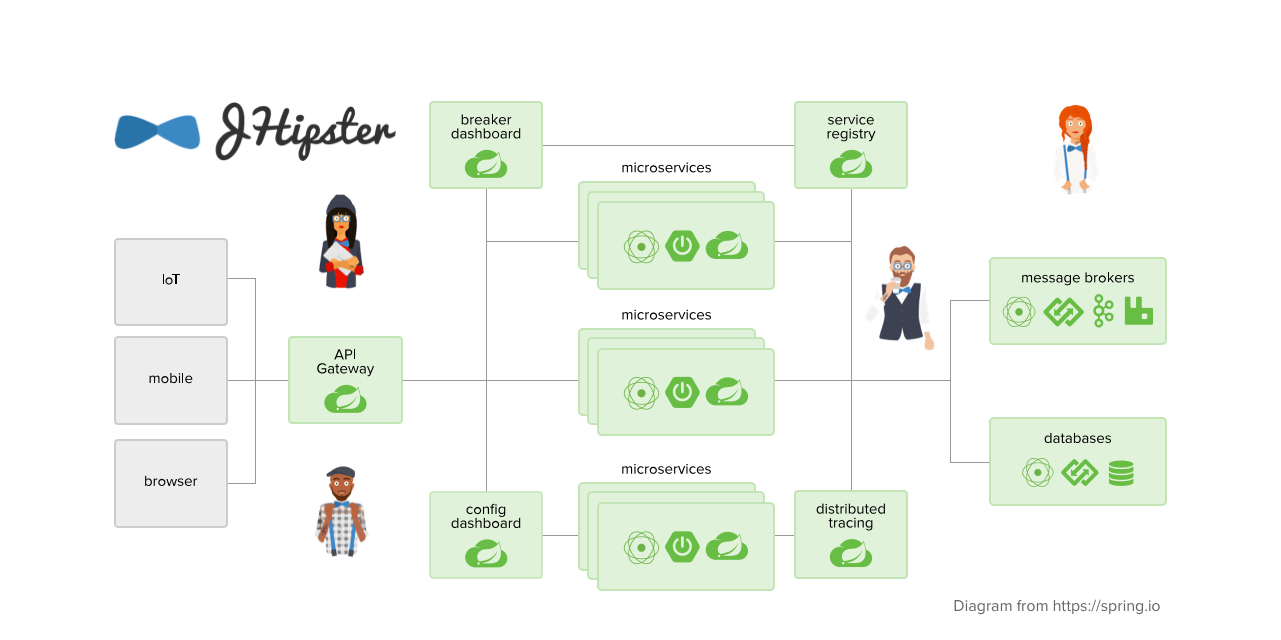
Developing a microservice architecture with Java and Spring Boot is quite popular these days. It’s definitely one of the most popular combinations in the Java ecosystem. If you need any proof, just look at all of the similar frameworks that have cropped up in the last few years: MicroProfile, Micronaut, and Quarkus, just to name a few. Spring Boot provided a much-needed spark to the Spring ecosystem when it was first released in 2014. Instead...
Java Microservices with Spring Boot and Spring Cloud
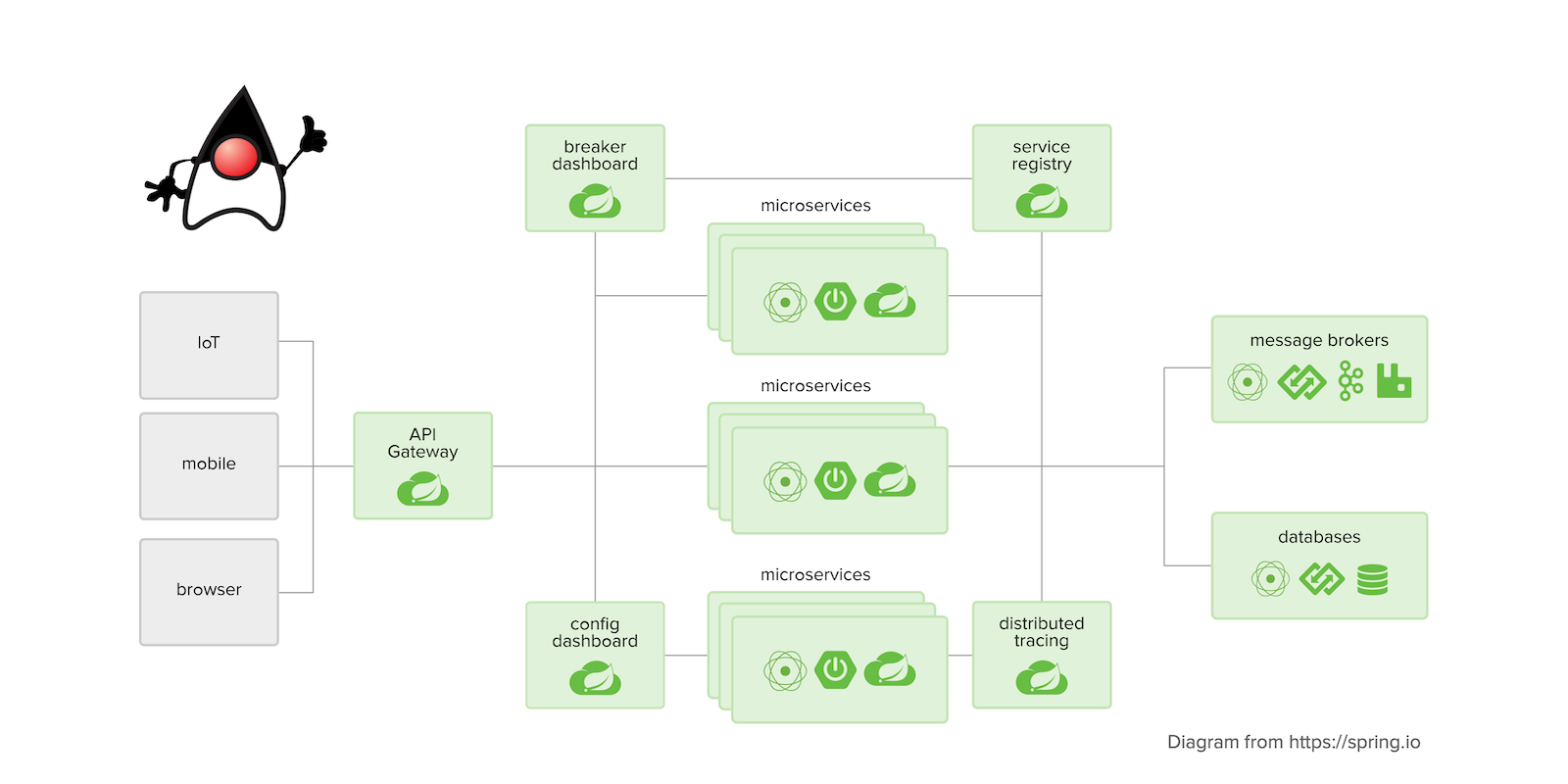
Java is a great language to use when developing a microservice architecture. In fact, some of the biggest names in our industry use it. Have you ever heard of Netflix, Amazon, or Google? What about eBay, Twitter, and LinkedIn? Yes, major companies handling incredible traffic are doing it with Java. Implementing a microservices architecture in Java isn’t for everyone. For that matter, implementing microservices, in general, isn’t often needed. Most companies do it to scale...
A Quick Guide to Spring Boot Login Options

In this post, you’re going to work through various options for implementing a login feature using Spring Boot 2.1. You’ll start with the most simple, basic auth, which you’d likely never want to use except for perhaps an internal backend tool, and move on to a simple form-based authentication page. Next, you’ll customize the default, auto-generated form by overriding some default templates and controllers. Finally, you’ll move on to adding Single Sign-on using OAuth 2.0....
Deploy a Spring Boot Application into Tomcat

Deploying applications is hard. Often you need console access to the server from which you pull the latest code and then manually instantiate into your container. In this tutorial you’ll see an easier way using Tomcat: you’ll create an authenticated web app and deploy it through the browser using the latest versions of Tomcat, Spring Boot, and Java. Since version 9, Oracle has decreased the Java release cadence to six months so major version numbers...
Upgrading Spring Security OAuth and JUnit Tests through the 👀 of a Java Hipster
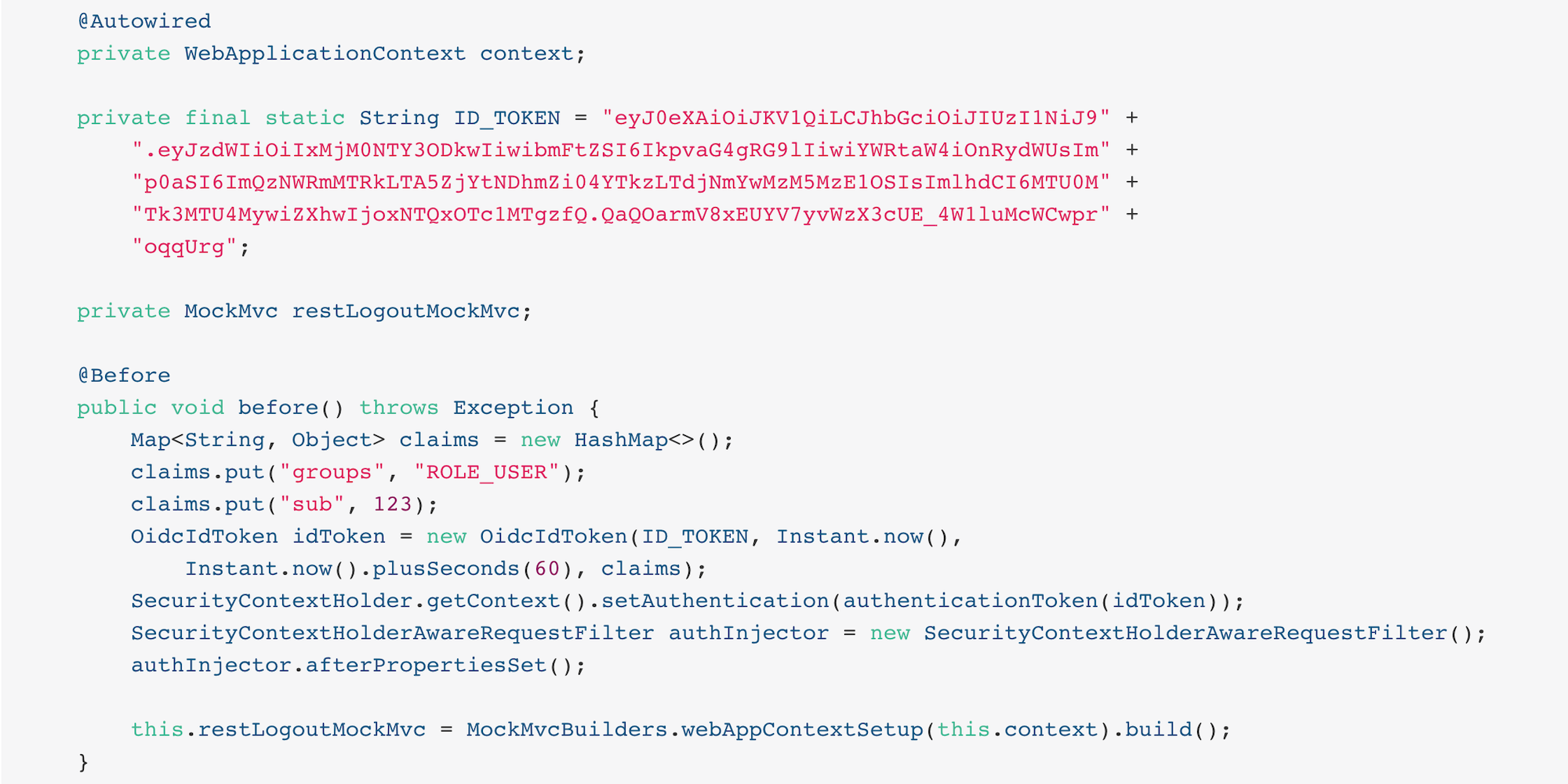
Using unit and integration tests to verify your code quality is an excellent way to show you care about your code. I recently did a bunch of work in the popular JHipster open source project to upgrade it to use the latest release of Spring Security. Spring Security 5.1+ adds OAuth 2.0 and OIDC as first-class citizens that you can configure with its elegant DSL (a.k.a. cool method chaining, a.k.a. the builder pattern). I’ve been...
Better, Faster, Lighter Java with Java 12 and JHipster 6

There’s a lot going on in the Java ecosystem lately. Now that major Java versions are released every six months, it can be difficult to keep up. Personally, I develop the majority of my Java applications using Spring Boot. Because of this, I was stuck on Java 8 until Spring Boot 2.1 was released last October. Spring Boot 2.1 added Java 11 support, along with performance improvements, a new metrics implementation, new actuator endpoints, and...
Build a Microservice Architecture with Spring Boot and Kubernetes

In this tutorial, you’re going to use Kubernetes to deploy a Spring Boot microservice architecture to Google Cloud, specifically the Google Kubernetes Engine (GKE). You’re also going to use Istio to create a service mesh layer and to create a public gateway. The whole thing is going to be secured using Okta OAuth JWT authentication. That was a mess of jargon. We’re not going to explain microservices in-depth here. In short, microservices are a design...
Test Your Spring Boot Applications with JUnit 5

In this post, you’ll walk through how to build a simple Spring Boot application and test it with Junit 5. An application without testing is the proverbial Pandora’s Box. What good is your application if you don’t know that it will work under any condition? Adding a suite of tests builds confidence that your application can handle anything thrown at it. When building your tests, it is important to use a modern and comprehensive suite...
A Quick Guide to OAuth 2.0 with Spring Security

When building a web application, authentication and authorization is a must. Doing it right, however, is not simple. Computer security is a true specialty. Legions of developers work day and night against equally numerous international hackers creating a continual development cycle of finding vulnerabilities, attacking them, and fixing them. Keeping up with all this solo would be painful (if not impossible). Fortunately, there’s no need. Spring Security and Spring Boot have made implementing a web...
Secure Service-to-Service Spring Microservices with HTTPS and OAuth 2.0
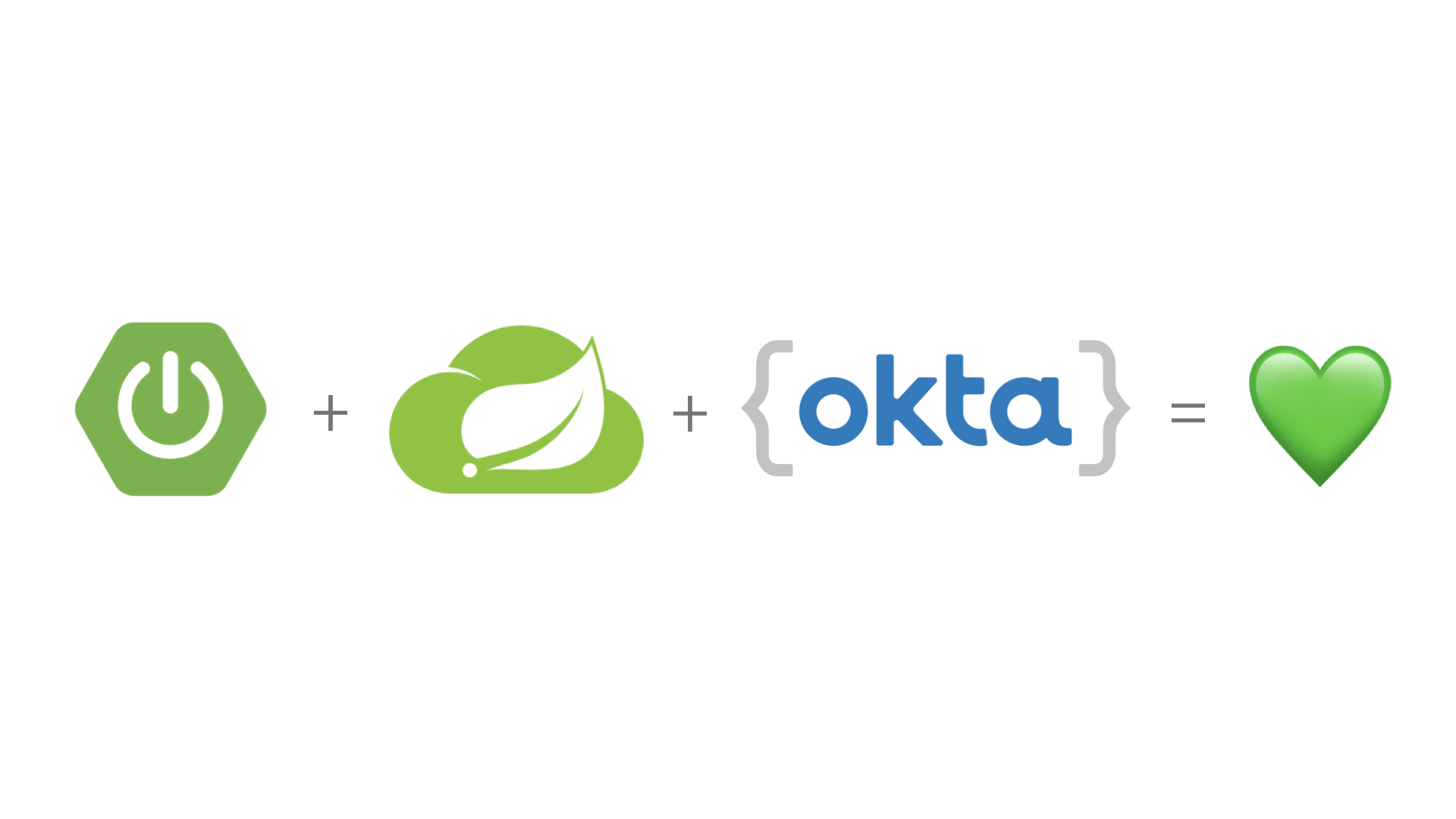
Building a microservices architecture is possible with minimal code if you use Spring Boot, Spring Cloud, and Spring Cloud Config. Package everything up in Docker containers and you can run everything using Docker Compose. If you’re communicating between services, you can ensure your services are somewhat secure by not exposing their ports in your docker-compose.yml file. But what happens if someone accidentally exposes the ports of your microservice apps? Will they still be secure or...
Migrate Your Spring Boot App to the Latest and Greatest Spring Security and OAuth 2.0

Spring Boot 1.5.x made it easier than ever before to integrate Spring Security with OAuth 2.0 into your application. Spring Boot 2.1.x dials it up to 11 by making OpenID Connect a first class citizen in the stack. In this post, you start with Spring Boot 1.5.19 and Spring Security 4.2.x. You integrate it with Okta’s OAuth service. From there, you move onto Spring Boot 2.1.3 and Spring Security 5.1. You’ll see how integrating with...
Build Spring Microservices and Dockerize Them for Production

In this post, you’ll learn about microservices architecture and how to implement it using Spring Boot. After creating some projects with the technique, you will deploy the artifacts as Docker containers and will simulate a container orchestrator (such as Kubernetes) using Docker Compose for simplification. The icing on the cake will be authentication integration using Spring Profiles; you will see how to enable it with a production profile. But first, let’s talk about microservices. Note:...
Devnexus 2019: Join the <dev/>olution

Hello, Developers! Have you ever been to the wonderful conference known as Devnexus? I attended for the first time two years ago and had a blast! It’s well organized, affordable, and has a diverse and fun crowd. This year, Okta is sponsoring Devnexus and we have a number of speakers sharing their wisdom. I thought it’d be fun to write a blog post that highlights my team members and what they’ll be talking about. If...
i18n in Java 11, Spring Boot, and JavaScript

What are i18n and l10n? Internationalization (i18n) is the process of making your application capable of rendering its text in multiple languages. Localization (l10n) means your application has been coded in such a way that it meets language, cultural, or other requirements of a particular locale. These requirements can include formats for date, time, and currency, as well as symbols, icons, and colors, among many other things. i18n enables l10n. Why is i18n and l10n...
Spring Boot with PostgreSQL, Flyway, and JSONB

Note: In May 2025, the Okta Integrator Free Plan replaced Okta Developer Edition Accounts, and the Okta CLI was deprecated. We preserved this post for reference, but the instructions no longer work exactly as written. Replace the Okta CLI commands by manually configuring Okta following the instructions in our Developer Documentation. In this tutorial, you are going to learn more about PostgreSQL and how to integrate it with a Spring Boot application. You will learn...
Which Java SDK Should You Use?

There has been a lot of confusion lately about Java and its available SDKs (Software Development Kits). You might’ve heard the Java SDK called the JDK. They’re one and the same. Java SE (Standard Edition) is a specification that’s governed by the JCP (Java Community Process). This process decides what goes into (or gets removed from the JDK). Anyone can implement the Java specification. If they pass the TCK (Test Compatibility Kit), they’re considered a...
Create a Secure Spring REST API

“If it is useful, it will be modified.” Those words of wisdom came from a QA teacher of mine, to explain that all software evolves when it becomes useful to someone, and for as long as it is useful. We all know this. Users ask us for new features, bug fixes and changes in domain logic every day. As any project (especially a monolith) grows it can begin to become difficult to maintain, and the...
Learning Java as a First Language

I started programming in Java way back in 1999. I had just started a job as the director of web development at a small startup called eDeploy.com. I wrote a lot of HTML, CSS, and JavaScript for a SaaS product that helped companies install network equipment. The backend for our app was written in Java and we deployed to iPlanet Application Server. At our height, we trusted Loudcloud to run our software. I experienced a...
Build a Simple CRUD App with Spring Boot and Vue.js
Tutorial: Create and Verify JWTs in Java

Java support for JWT (JSON Web Tokens) used to require a lot of work: extensive customization, hours lost resolving dependencies, and pages of code just to assemble a simple JWT. Not anymore! This tutorial will show you how to use an existing JWT library to do two things: Generate a JWT Decode and verify a JWT You’ll notice the tutorial is pretty short. That’s because it’s that easy. If you’d like to dig deeper, take...
Simple Token Authentication for Java Apps

JSON Web Tokens have quickly become the standard for securing web applications, superseding older technologies like cookies and sessions. Used properly, they address a range of security concerns, including cross-site scripting attacks (XSS), man-in-the-middle attacks (MITM), and cross-site request forgery (CSRF). They also give us the benefit of inspectable metadata and strong cryptographic signatures. In this post, I’ll take a deep dive into JWTs. First, I’ll cover some theoretical ground explaining how they work. After...
Build a Mobile App with React Native and Spring Boot

React Native is a framework for building mobile applications with React. React allows you to use a declarative style of programming to describe how your UI should look. It uses embedded HTML (called JSX) to render buttons, lists, scrollable views, and many other components. I’m a seasoned Java and JavaScript developer that loves Spring and TypeScript. Some might call me a Java hipster because I like JavaScript. In this post, I’m going to show you...
Add User Authentication to Your Spring Boot App in 15 Minutes

When’s the last time you had fun building a web application? We love Spring Boot because it makes it super easy to build a rich Java web application, and it can even be pretty fun. By combining Spring, Spring Boot, and Gradle, we have a complete build system that can develop, test, run, and deploy Spring applications in minutes. But what about user authentication and authorization, you’re probably thinking. Maybe with a sneer. Surely that’s...
Build a Java REST API with Java EE and OIDC
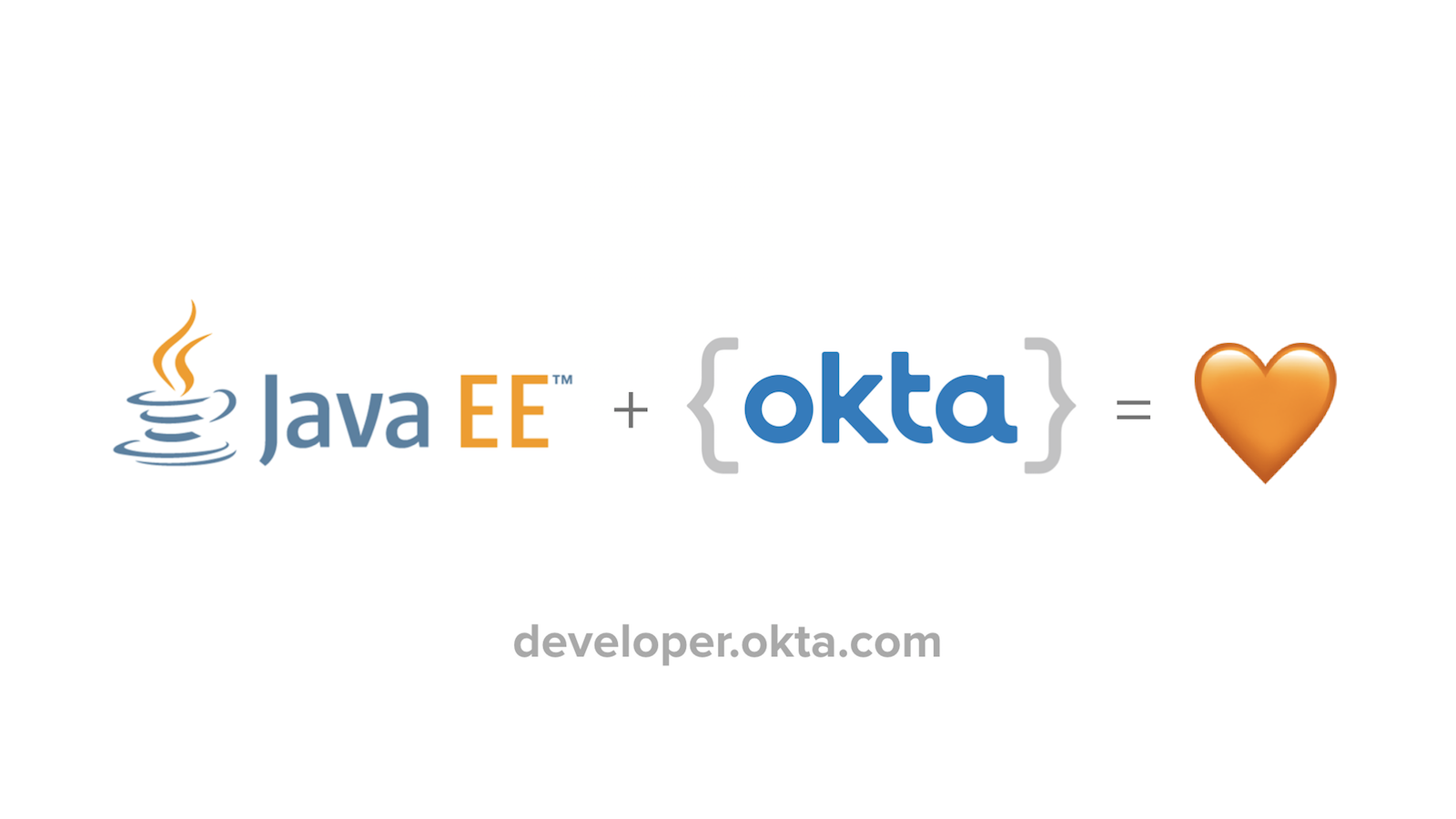
Java EE allows you to build Java REST APIs quickly and easily with JAX-RS and JPA. Java EE is an umbrella standards specification that describes a number of Java technologies, including EJB, JPA, JAX-RS, and many others. It was originally designed to allow portability between Java application servers, and flourished in the early 2000s. Back then, application servers were all the rage and provided by many well-known companies such as IBM, BEA, and Sun. JBoss...
Build a Basic CRUD App in Android with Kotlin

Kotlin was recently given official Android support status by Google, but it remains difficult to understand for many developers. The best way to start is by creating a complete app yourself, which you’ll do in this tutorial. In this tutorial, you’ll use Spring Boot for the API that powers your Android (+ Kotlin) mobile app. Spring Boot is a great way to create a robust REST API with a minimal amount of code. I’m going...
Secure Your Spring Boot Application with Multi-Factor Authentication
OAuth 2.0 has quickly become an industry standard for third party authentication for web applications. It’s a super secure strategy, when implemented properly, but getting it right can be hard. Fortunately, you don’t have to go it alone. Okta has done it for you. This is one place where it’s definitely not worth re-inventing the wheel. And further, with all of the cybersecurity attacks today, just using a password, even a hard password, is not...
Build a Basic CRUD Application with Grails and Okta
Grails and Groovy can be a great alternative to Spring Boot, in some specific use cases. In this post, we’ll start with that basic Grails app that already has secure authentication via Okta, and add some additional features. In this tutorial you will: Define a simple data model Create domain classes for the models Create the necessary controllers and views Configure logging Configure the database so that the data is persisted between sessions Add some...
Build Server Side Authentication in Grails with OAuth 2.0 and Okta
What is Grails, what is Groovy, and why would we choose them over Spring Boot? In this post I’ll walk you through implementing server-side authentication in Grails using OAuth 2.0 and Okta. Before we dive in, however, I want to talk a little bit about why you’d be using Grails + Groovy in the first place, and how it can make your life easier in specific situations. Grails is an open source “convention over configuration”...
Secure Server-to-Server Communication with Spring Boot and OAuth 2.0
Most OAuth 2.0 guides are focused around the context of a user, i.e., login to an application using Google, GitHub, Okta, etc., then do something on behalf of that user. While useful, these guides ignore server-to-server communication where there is no user and you only have one service connecting to another one. The OAuth 2 client credentials grant type is exclusively used for scenarios in which no user exists (CRON jobs, scheduled tasks, other data...
Add Single Sign-on to Your Dropwizard Server in 15 Minutes
Dropwizard is recognized as the pioneer in turn-key Java API frameworks, and rivals Spring Boot for ease of adoption. Whether you’re interested in trying it out for the first time, or already have a mature platform built on top of Dropwizard, you can add secure authentication to your site in a matter of minutes. By combining Dropwizard’s production-ready essential libraries and Okta’s identity platform, you can construct a fully secured internet-facing web service with little...
Open Source Framework Samples and Quickstarts for Okta's Developer APIs
Developers love sample applications. It’s one thing to see the steps to create an application or feature; but when someone provides a working app you can just build and run it’s simply fantastic. Open source is near and dear to many developers today. Many of the frameworks we use to build applications are open source. It’s a great way to develop widely-used software and get contributions from your users. Okta’s Developer Experience (DevEx) team believes...
Secure a Spring Microservices Architecture with Spring Security and OAuth 2.0

Building a microservices architecture with Spring Boot and Spring Cloud can allow your team to scale and develop software faster. It can add resilience and elasticity to your architecture that will enable it to fail gracefully and scale infinitely. All this is great, but you need continuous deployment and excellent security to ensure your system stays up-to-date, healthy, and safe for years to come. With Spring Security and its OAuth 2.0 support, you have everything...
Use Okta (Instead of Local Storage) to Store Your User's Data Securely
Local Storage is a JavaScript API technically known as localStorage that arrived with HTML5. It allows you to store information on a user’s browser quickly and easily. There are many debates on the web as to whether it’s better than cookies. Some say it’s faster (because it doesn’t send data with every request like cookies do) and more secure. Whether it’s more secure or not is debatable, especially when compared with secure cookies that have...
Add Single Sign-On to Your Vert.x Server with Okta
Vert.x has continued to gain traction as a contender to the Spring ecosystem, largely due to improved performance and its polyglot accessibility. Fortunately, securing a Vert.x server with industry-leading authentication and authorization is almost as quick and easy as it is in Spring! In just a few minutes, you can have secure single sign-on guarding your server and giving you access to a wealth of information about your users. This tutorial will walk you through...
Get Started with Spring Security 5.0 and OIDC
Spring Security is a powerful and highly customizable authentication and access-control framework. It is the de-facto standard for securing Spring-based applications. I first encountered Spring Security when it was called Acegi Security in 2005. I had implemented standard Java EE in my open source project, AppFuse. Acegi Security offered a lot more, including remember me and password encryption as standard features. I had managed to get “remember me” working with Java EE, but it wasn’t...
Add Single Sign-On to Your Spring Boot Web App in 15 Minutes
Need a secure web server right now? With Spring Boot and Okta, you can spin up an enterprise-quality REST server with complete user identity and authorization management in less than 20 minutes. Out of the box, Spring Boot and its Starter packages supply a near instant production-ready Tomcat server, and Okta hardens your APIs with a variety of OAuth flows just as fast. This tutorial will walk you through the complete process. The cherry on...
Add Authentication to Play Framework with OIDC and Okta
I’ve fallen in love with Play Framework in the past, but then found a more attractive framework in Spring Boot. I fell in love partly because Play was new and sexy at the time, but also because it’s “live reloading” of Java code was a killer feature I’d been looking for. When it added support for Scala in v2.0, I was very excited to learn Scala and discover the power of functional programming. Part of...
Use OpenID Connect Support with JHipster
Single sign-on (SSO) is a feature that most developers don’t care about when building one-off applications for clients or themselves. However, when developing apps for their company, which will be used by employees of their business, they often need to hook into an existing identity provider. It might be Active Directory (AD), LDAP, or a myriad of other systems. Okta provides SSO for many companies around the world and allows them to configure AD and...
NoSQL Options for Java Developers, Part II
Last month, I wrote about NoSQL Options for Java Developers. I analyzed the data available from a variety of sources (Indeed jobs, GitHub stars, Stack Overflow tags) to pick the top five options: MongoDB, Redis, Cassandra, Neo4j, and PostgreSQL. After writing this article, I shared it with a few experts I know in the Java and NoSQL communities and asked them the following questions: Do you agree with my choices of the top 5 NoSQL...
The Top 10 JavaOne 2017 Sessions for the Java Hipster
A “hipster” is defined as a person who is exceptionally aware of or interested in the latest trends and tastes. JHipster is an open source project whose name stands for “Java Hipster.” If you’re using JHipster, chances are you’re aware of and using the latest trends and techniques in Java development. Trendy things in server-side Java development include microservices, embedded app servers, deployment with containers, auto-configuration, and monitoring. JHipster supports all of these trends, embracing...
NoSQL Options for Java Developers
The Java community is one I know and love, so even though a NoSQL database is rarely tied to a language I’m writing this article for you, Java developers around the world. In this article, I’ll show you several options for NoSQL databases. After exploring all the options, I’ll narrow the choices down to the top five based on Indeed Jobs, GitHub stars, and Stack Overflow tags. Then I’ll let you know if they’re supported...
5 Tips for Building your Java API
Developers use APIs to for everything! You build APIs for your own apps to consume, or as a part of a microservices architecture. Bottom line, you’re building and using APIs to make your life easier. The ongoing effort to simplify development and work more efficiently, sometimes this also means looking for new libraries or processes (or more often less process). For many teams managing authentication and access control for their apps and APIs is more...
Let's Compare: JAX-RS vs Spring for REST Endpoints
Need to decouple your web service and client? You’re probably using REST endpoints, and if you’re a Java shop you’ve probably tried out JAX-RS, Spring REST, or both. But is one better than the other? In this post I’ll go over the differences between the two using basically the same code for an apples to apples comparison. In future posts I’ll show you how easy it is to secure these REST endpoints using Apache Shiro...
Secure a Spring Microservices Architecture with Spring Security, JWTs, Juiser, and Okta
You’ve built a microservices architecture with Spring Boot and Spring Cloud. You’re happy with the results, and you like how it adds resiliency to your application. You’re also pleased with how it scales and how different teams can deploy microservices independently. But what about security? Are you using Spring Security to lock everything down? Are your microservices locked down too, or are they just behind the firewall? This tutorial shows you how you can use...
Protecting a Spring Boot App with Apache Shiro
My favorite thing about Apache Shiro is how easy it makes handling authorization. You can use a role-based access control (RBAC) model of assigning roles to users and then permissions to roles. This makes dealing with the inevitable requirements change simple. Your code does not change, just the permissions associated with the roles. In this post I want to demonstrate just how simple it is, using a Spring Boot application and walking through how I’d...
Develop and Deploy Microservices with JHipster
JHipster is one of those open-source projects you stumble upon and immediately think, “Of course!” It combines three very successful frameworks in web development: Bootstrap, Angular, and Spring Boot. Bootstrap was one of the first dominant web-component frameworks. Its largest appeal was that it only required a bit of HTML and it worked! Bootstrap showed many in the Java community how to develop components for the web. It leveled the playing field in HTML/CSS development,...
Build a Microservices Architecture for Microbrews with Spring Boot

Adopting a microservice architecture provides unique opportunities to add failover and resiliency to your systems, so your components can handle load spikes and errors gracefully. Microservices make change less expensive too. It can also be a good idea when you have a large team working on a single product. Your project can likely be broken up into components that can function independently of one another. Once components can function independently, they can be built, tested,...
Add Authentication to Your Angular PWA
You’re developing a Progressive Web Application (PWA), and your service worker and web app manifest are working swimmingly. You’ve even taken the time to deploy it to a server with HTTPS, and you’re feeling pretty good about things. But wait, you don’t have any way of knowing who your users are! Don’t you want to provide them with an opportunity to authenticate and tell you who they are? Once you know who they are, you...
Tutorial: Develop a Mobile App With Ionic and Spring Boot
You already know that building APIs with Spring Boot is incredibly easy. But, your API isn’t complete without a UI, right? Well, building UIs with Ionic is pretty easy too, especially if you know Angular! Ionic is an open source framework designed to help you build mobile applications with web technologies. It started out as a framework based on AngularJS. Ionic 3.0 was recently released, with support for Angular 4, TypeScript 2.2, and lazy loading....
Build Your First Progressive Web Application with Angular and Spring Boot
An October 2016 DoubleClick report found 53% of visits are abandoned if a mobile site takes more than 3 seconds to load. That same report said the average mobile sites load in 19 seconds. According to Alex Russell in his recent talk on the state of mobile development, one of the biggest problems in mobile today is that developers use powerful laptops and desktops to develop their mobile applications, rather than using a $200 device...
Bootiful Development with Spring Boot and Angular
To simplify development and deployment, you want everything in the same artifact, so you put your Angular app “inside” your Spring Boot app, right? But what if you could create your Angular app as a standalone app and make cross-origin requests to your API? Hey guess what, you can do both! I believe that most frontend developers are used to having their apps standalone and making cross-origin requests to APIs. The beauty of having a...